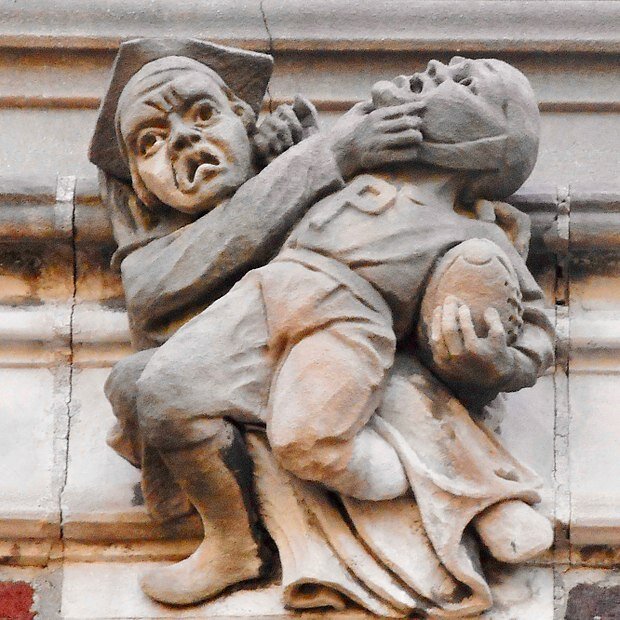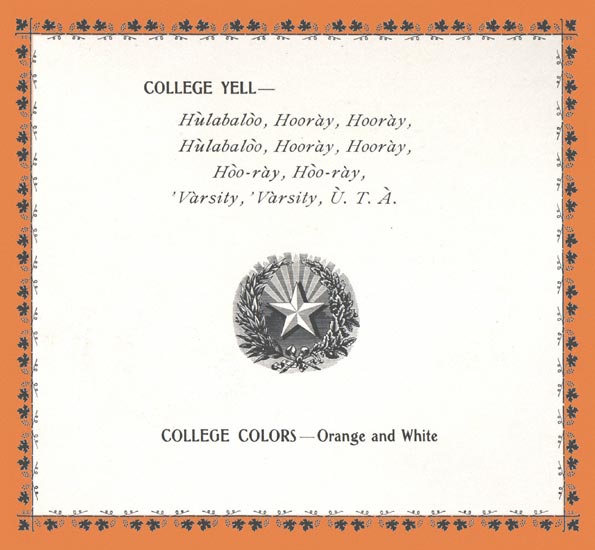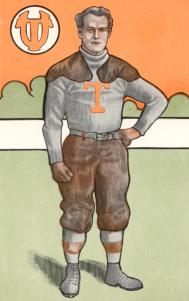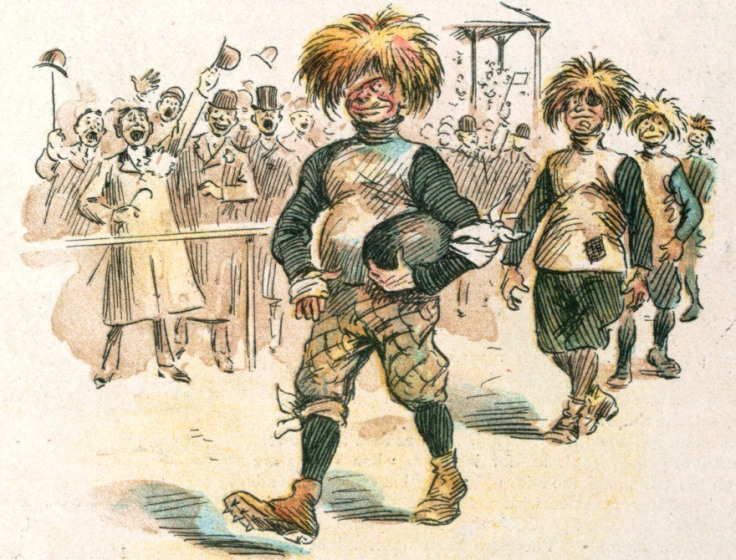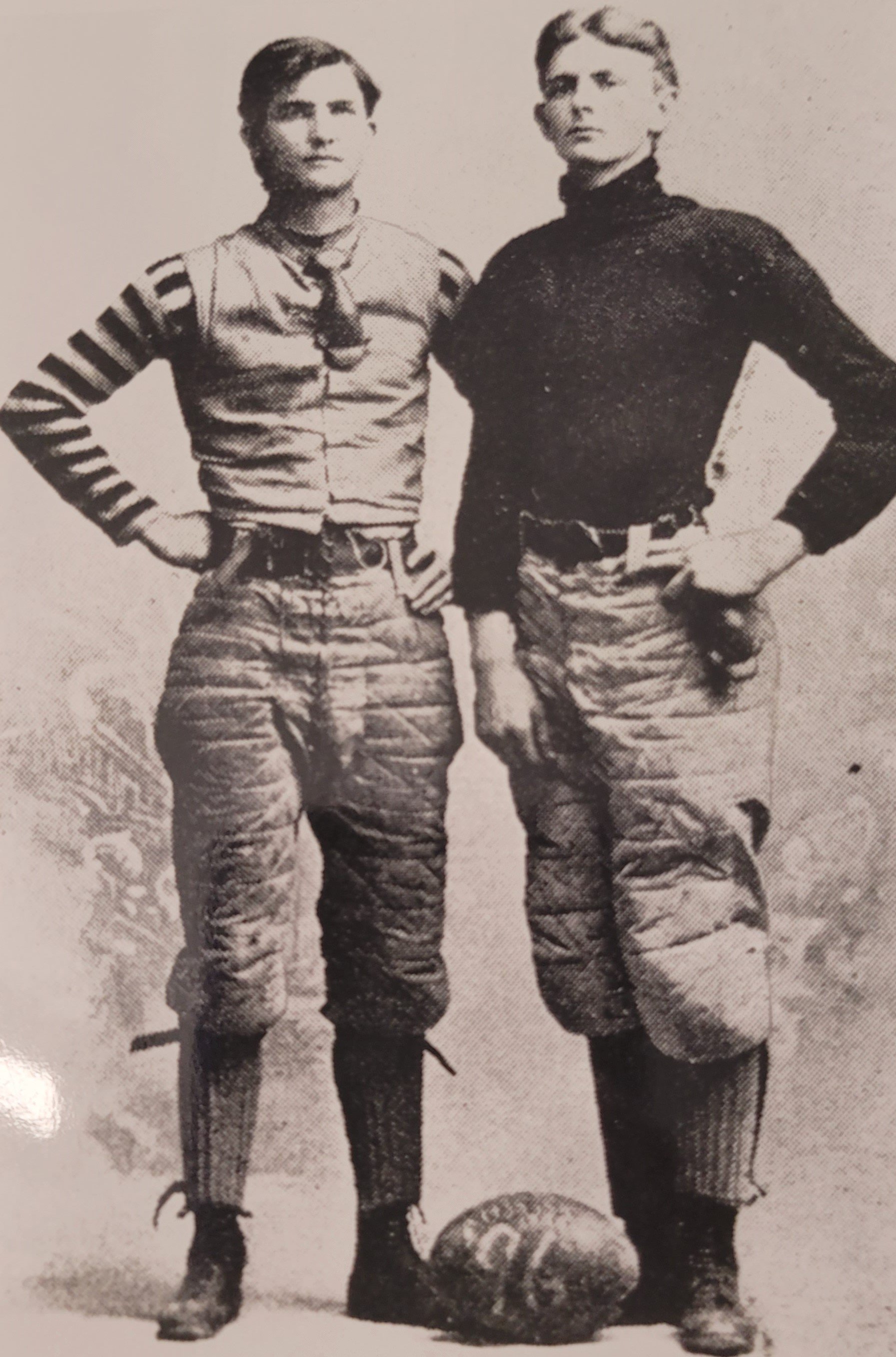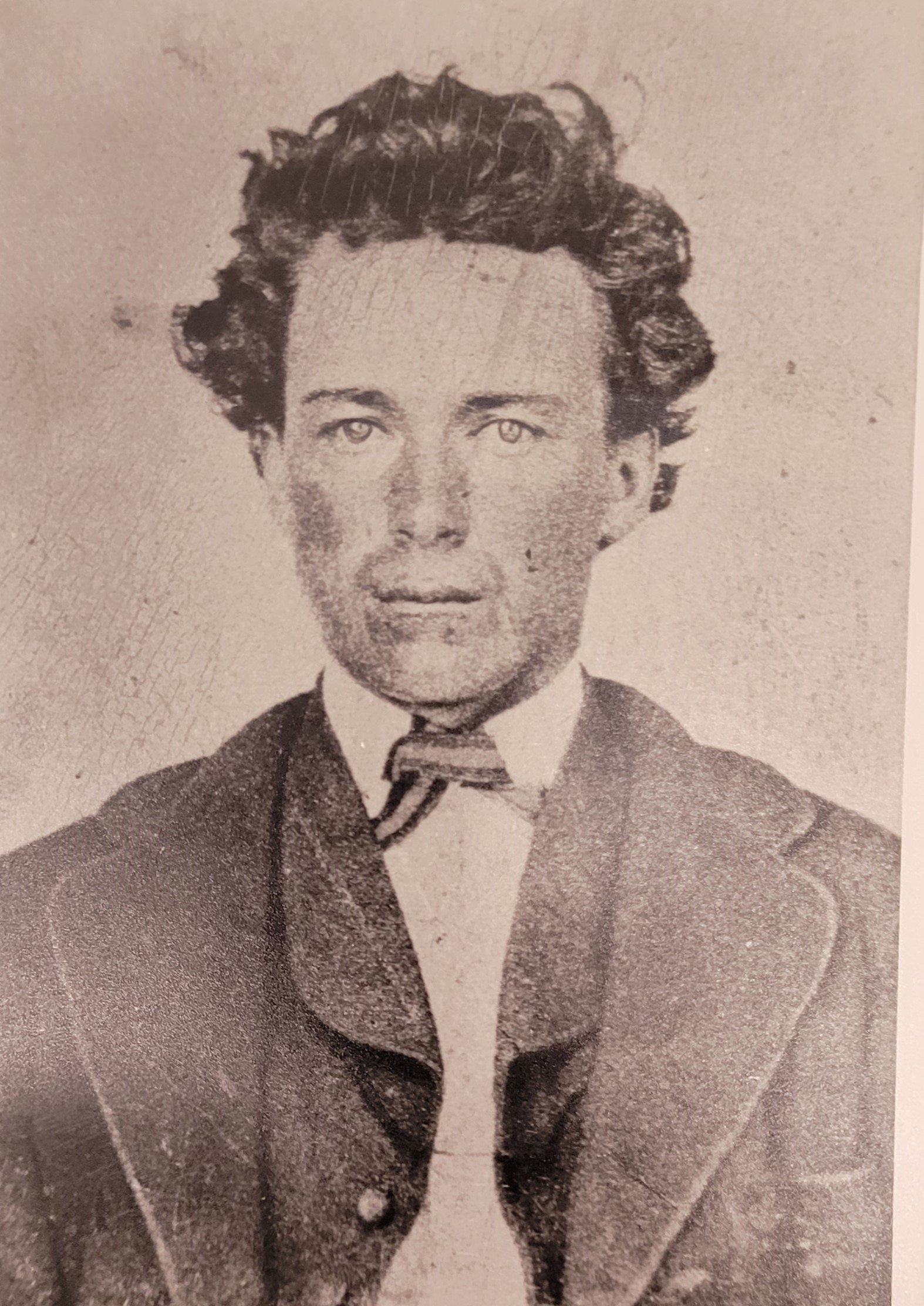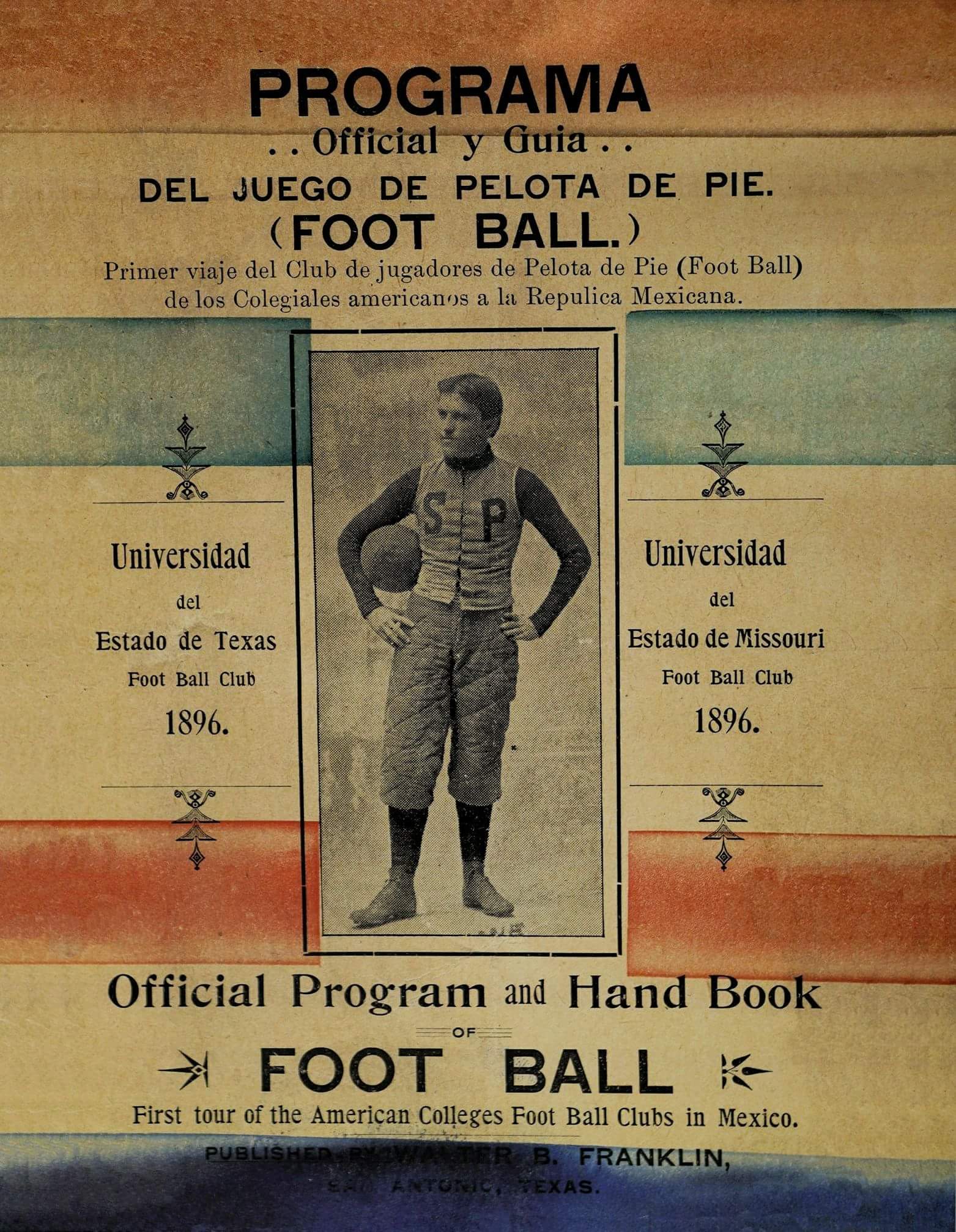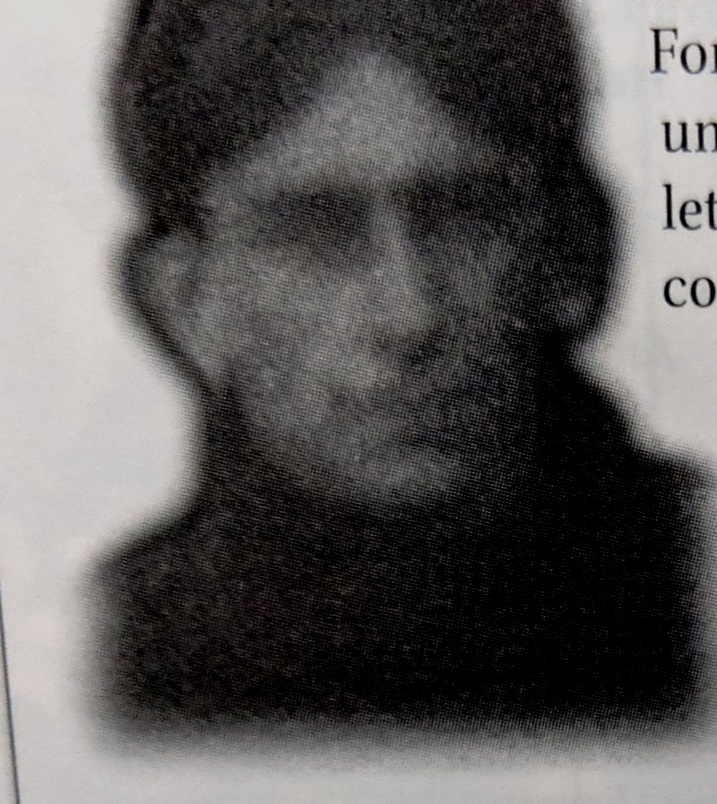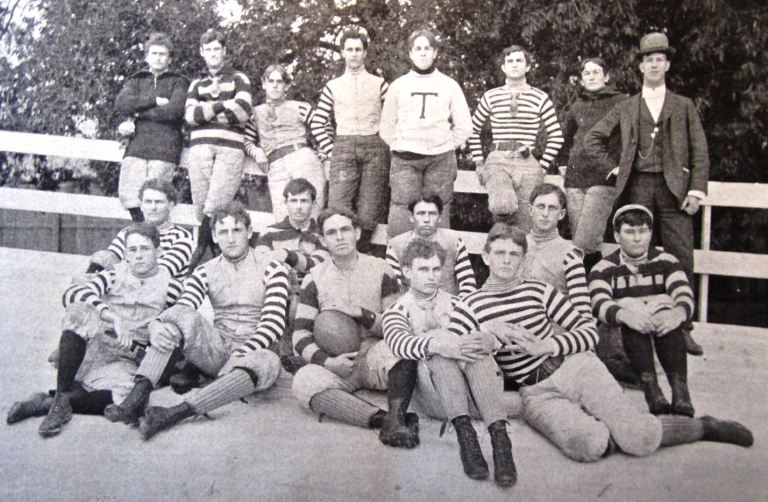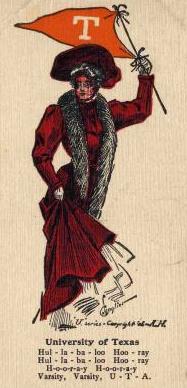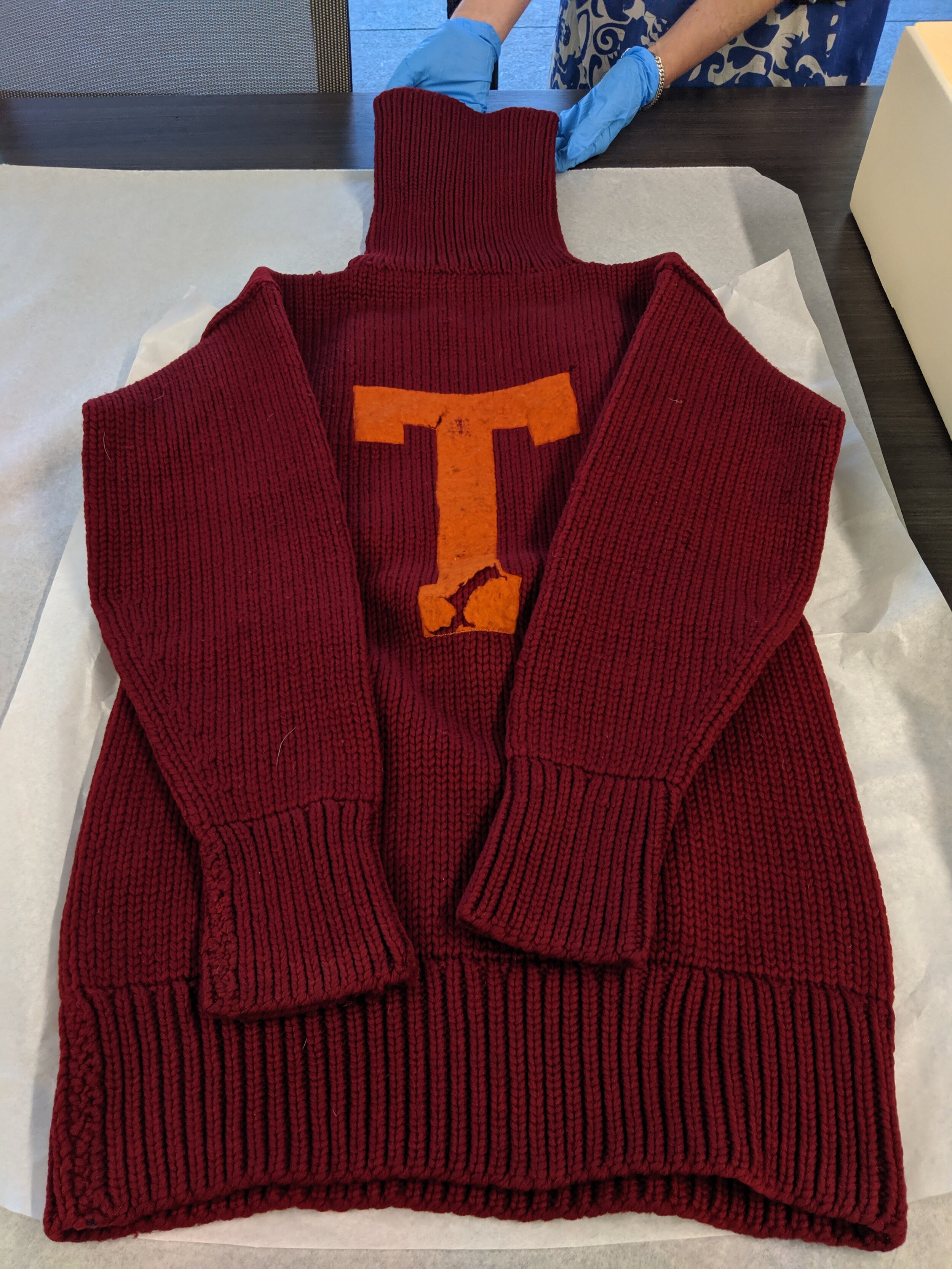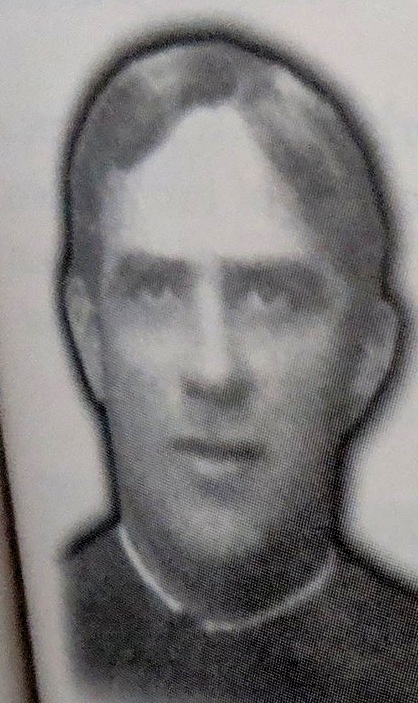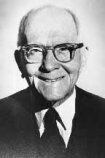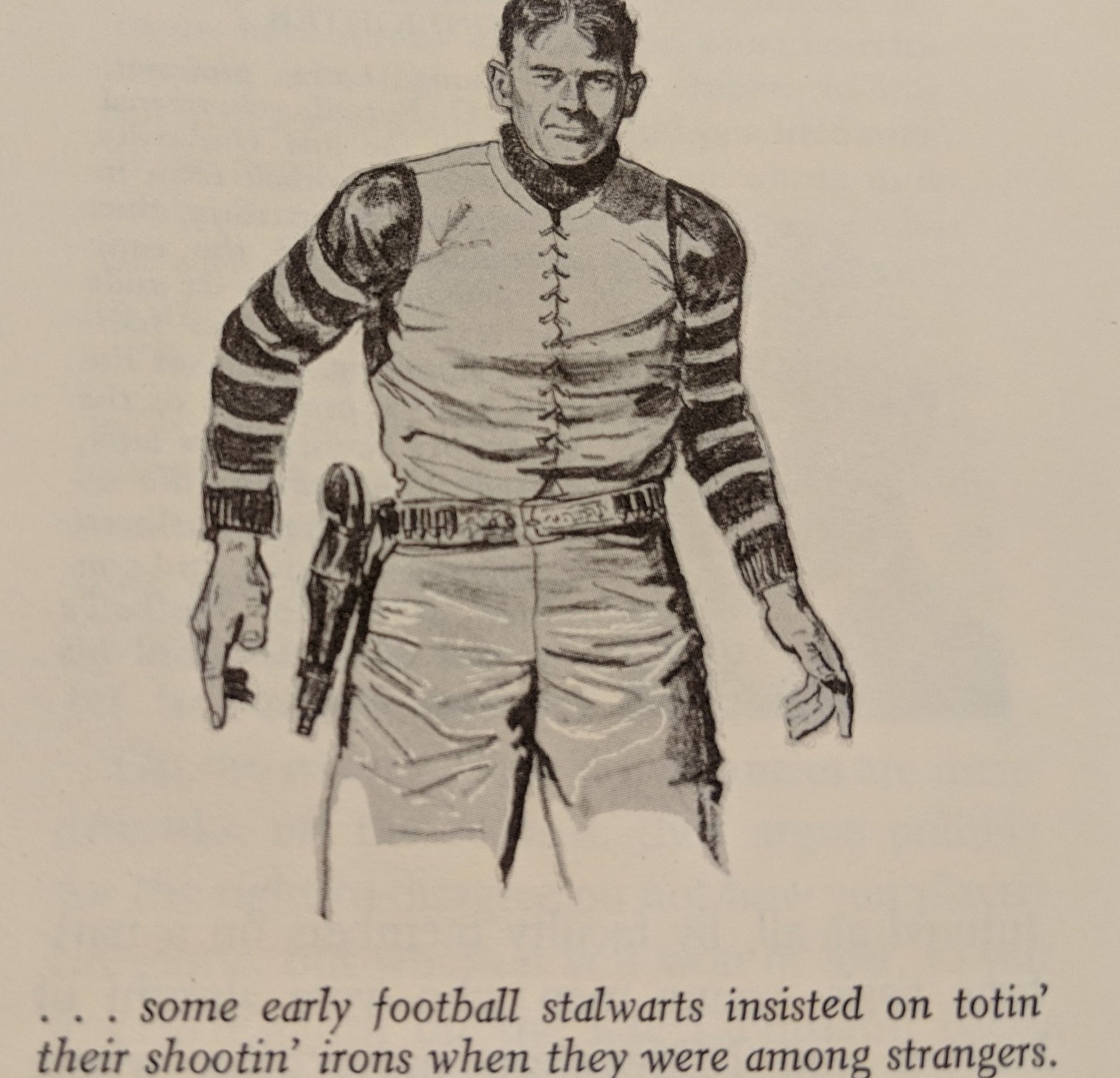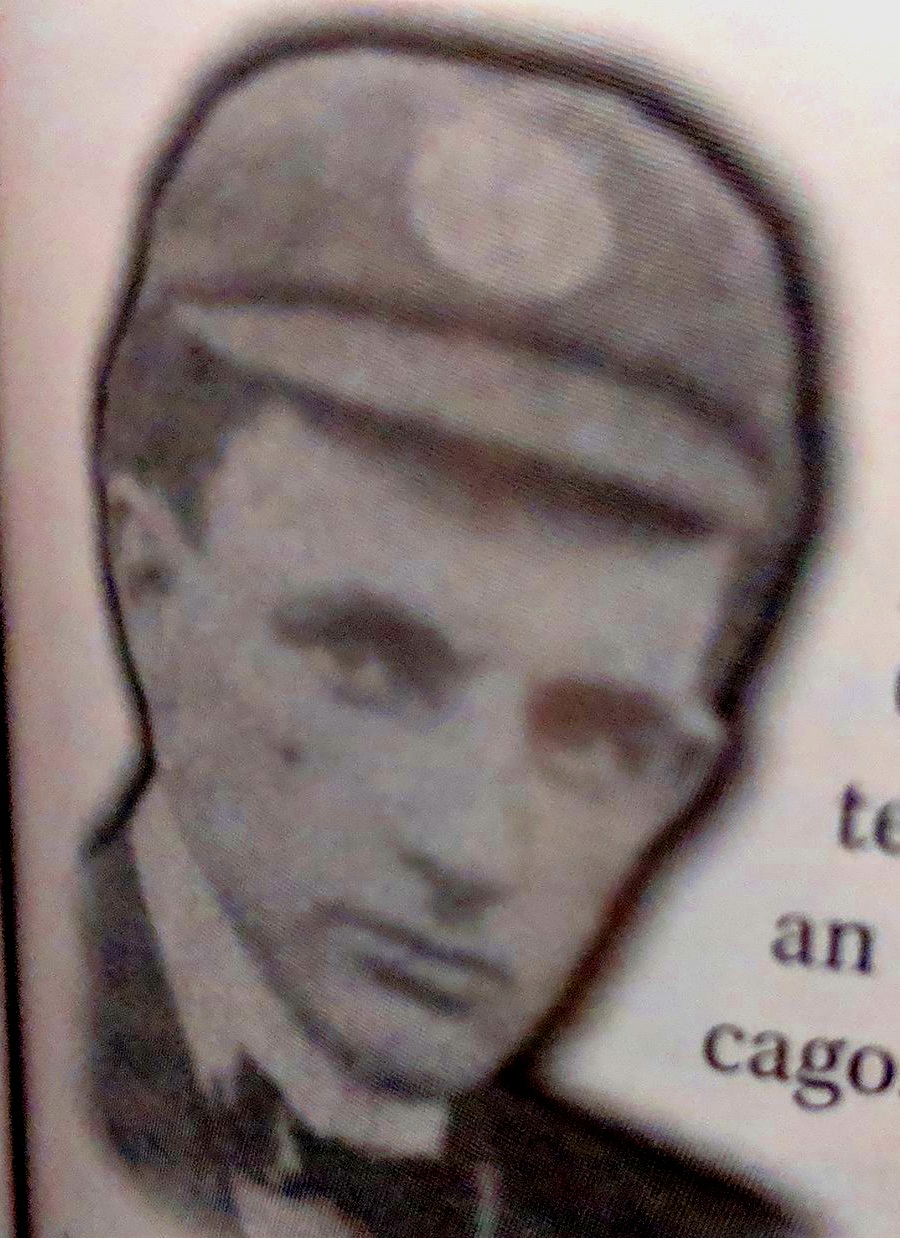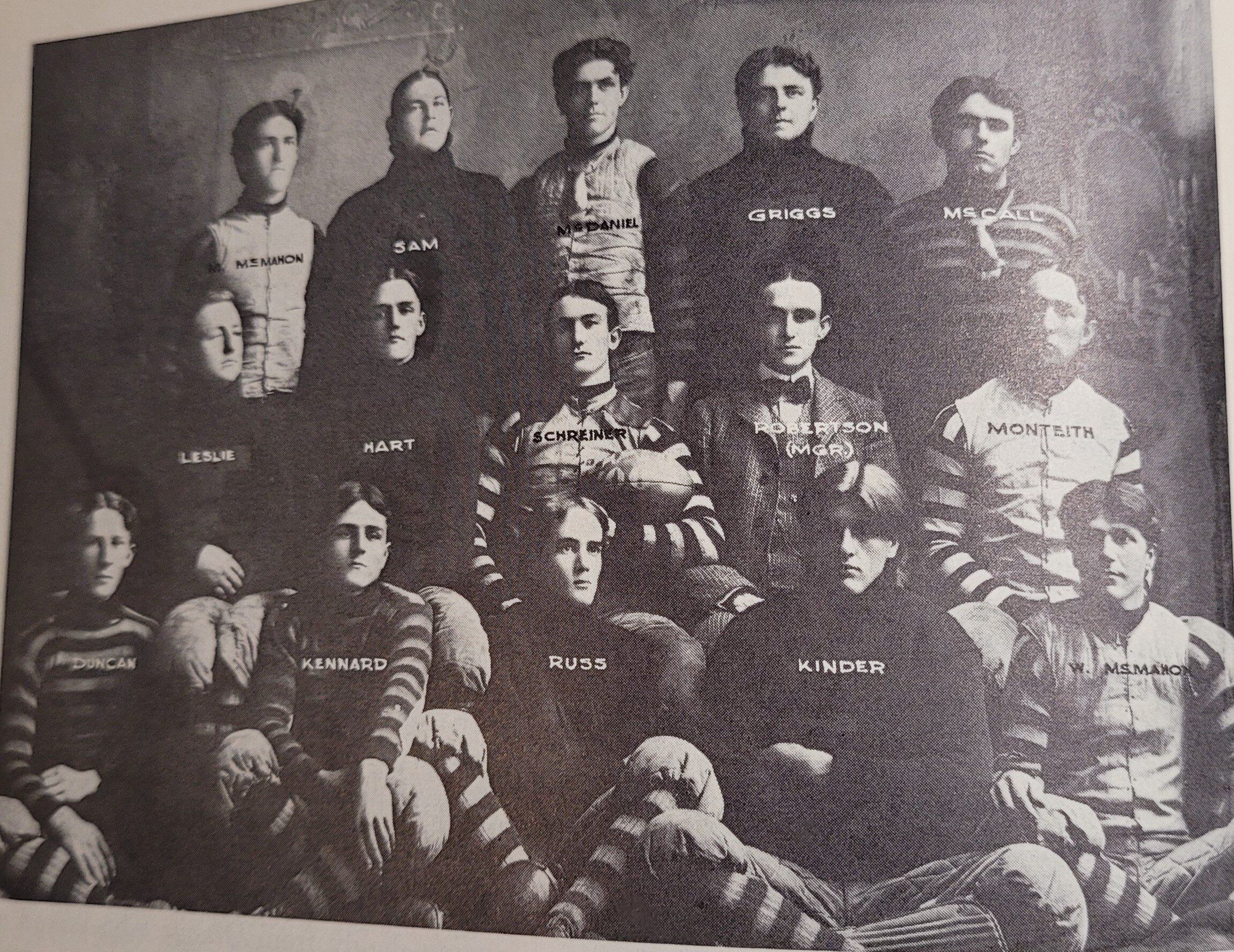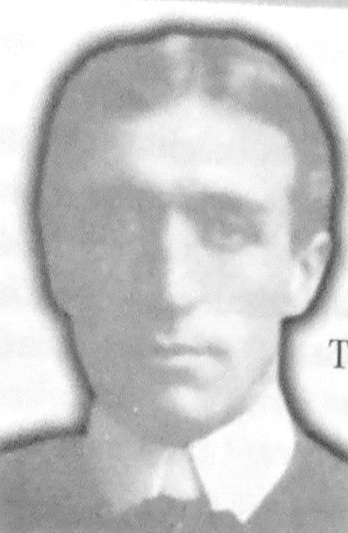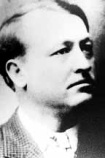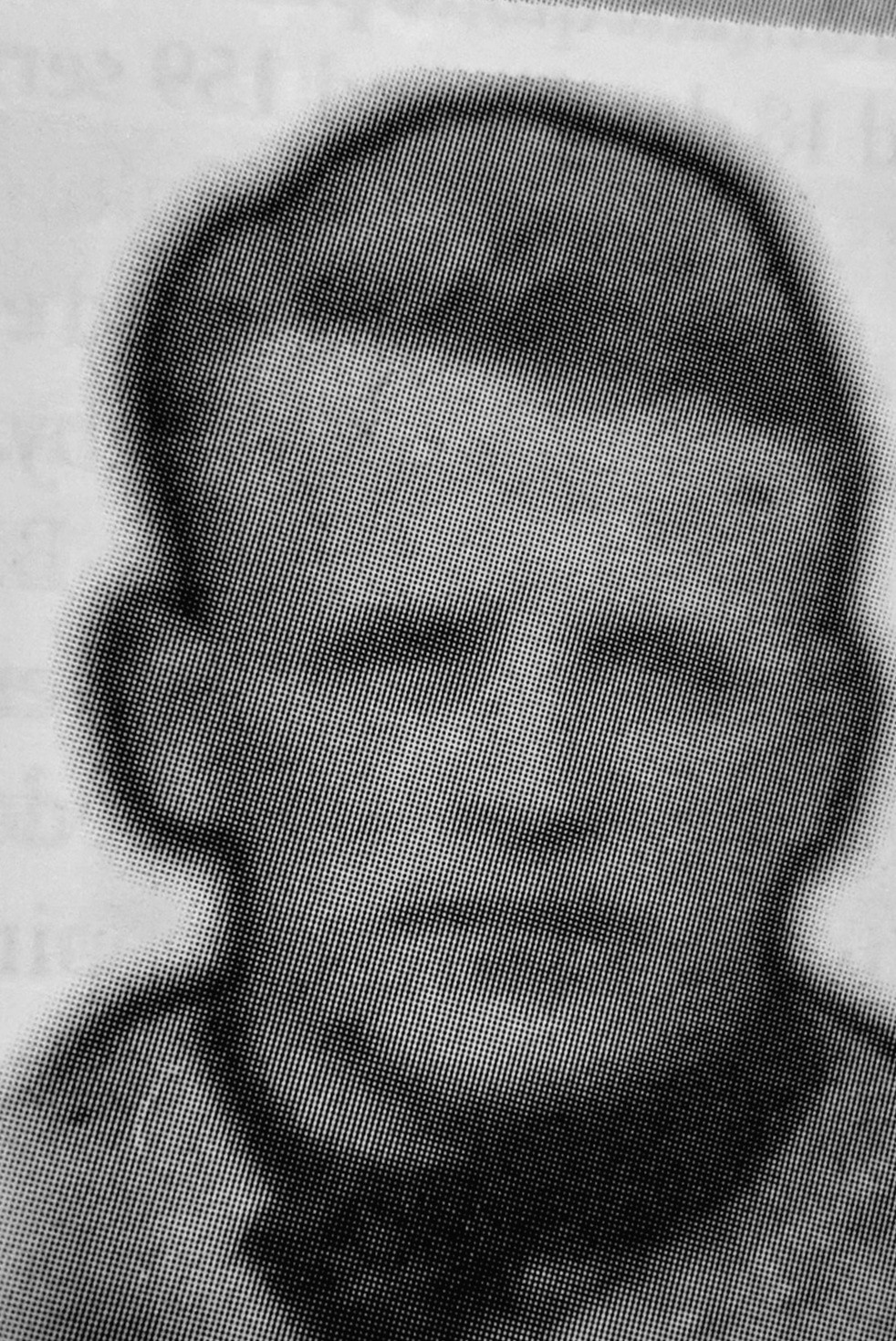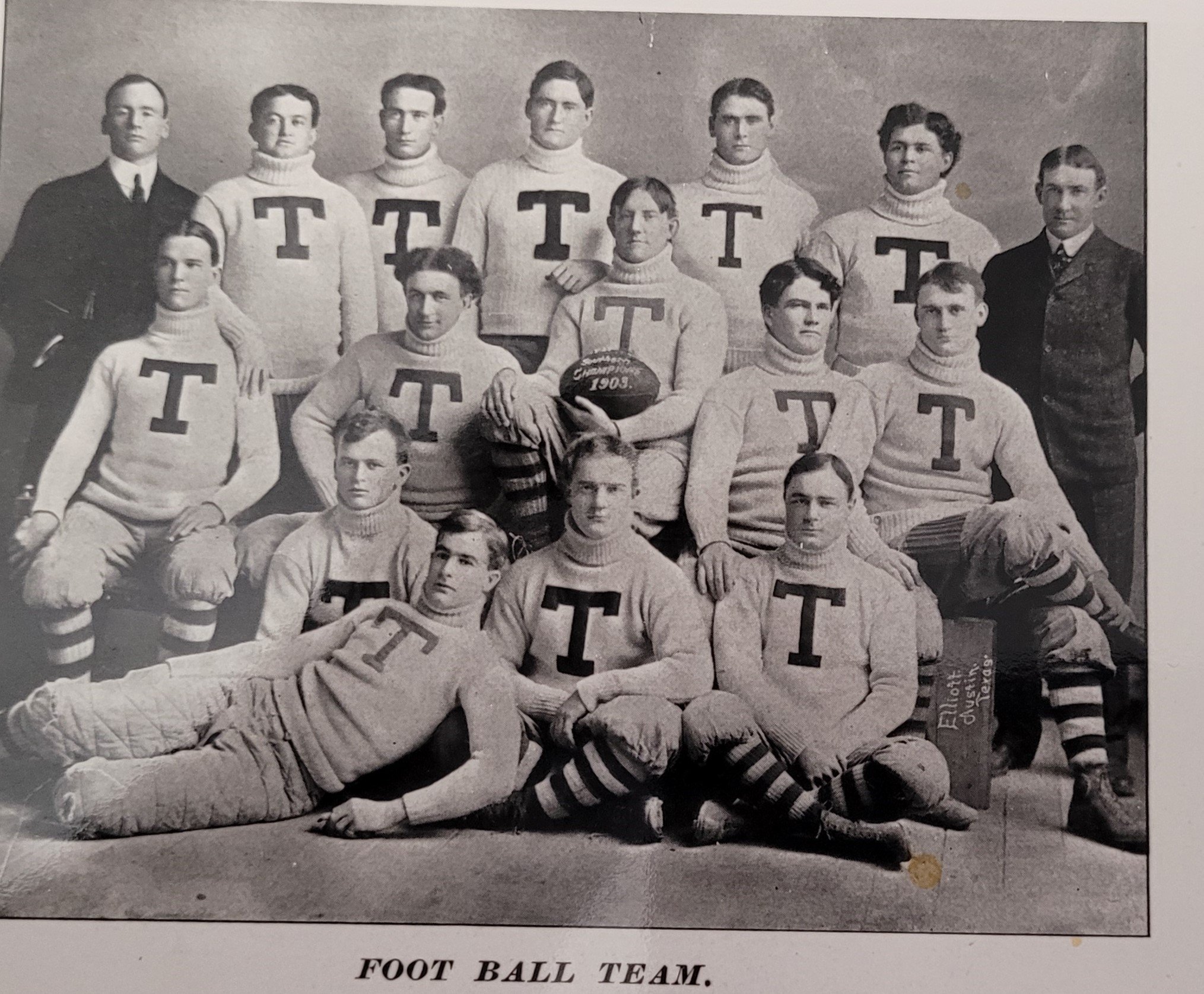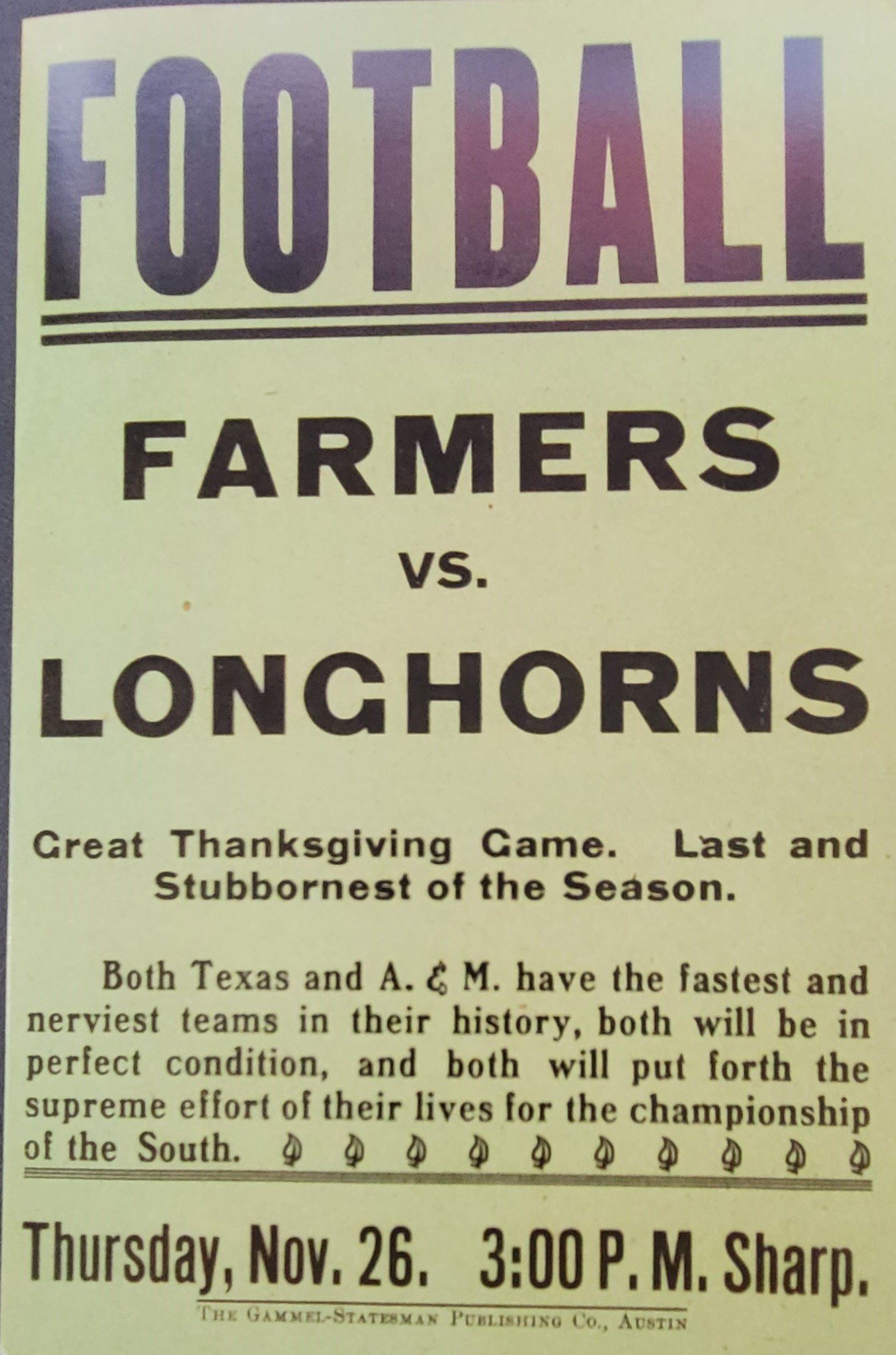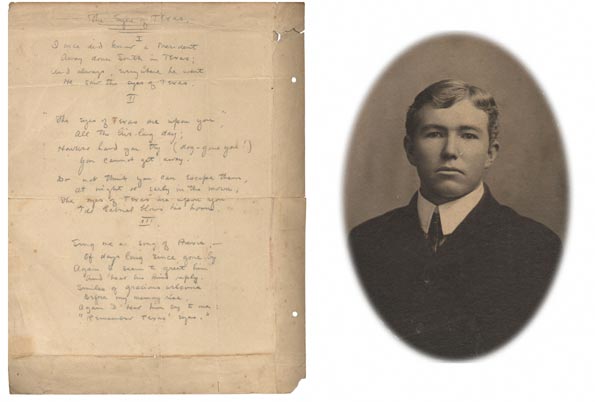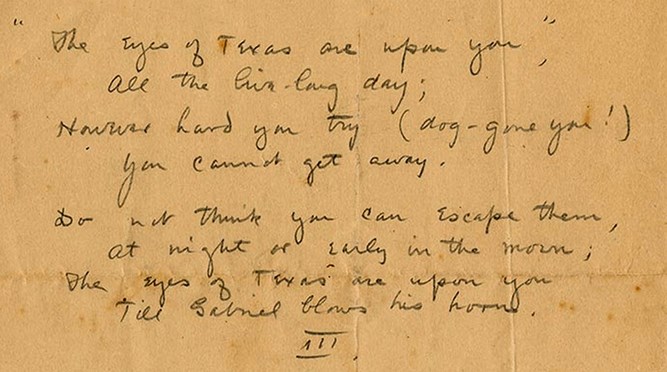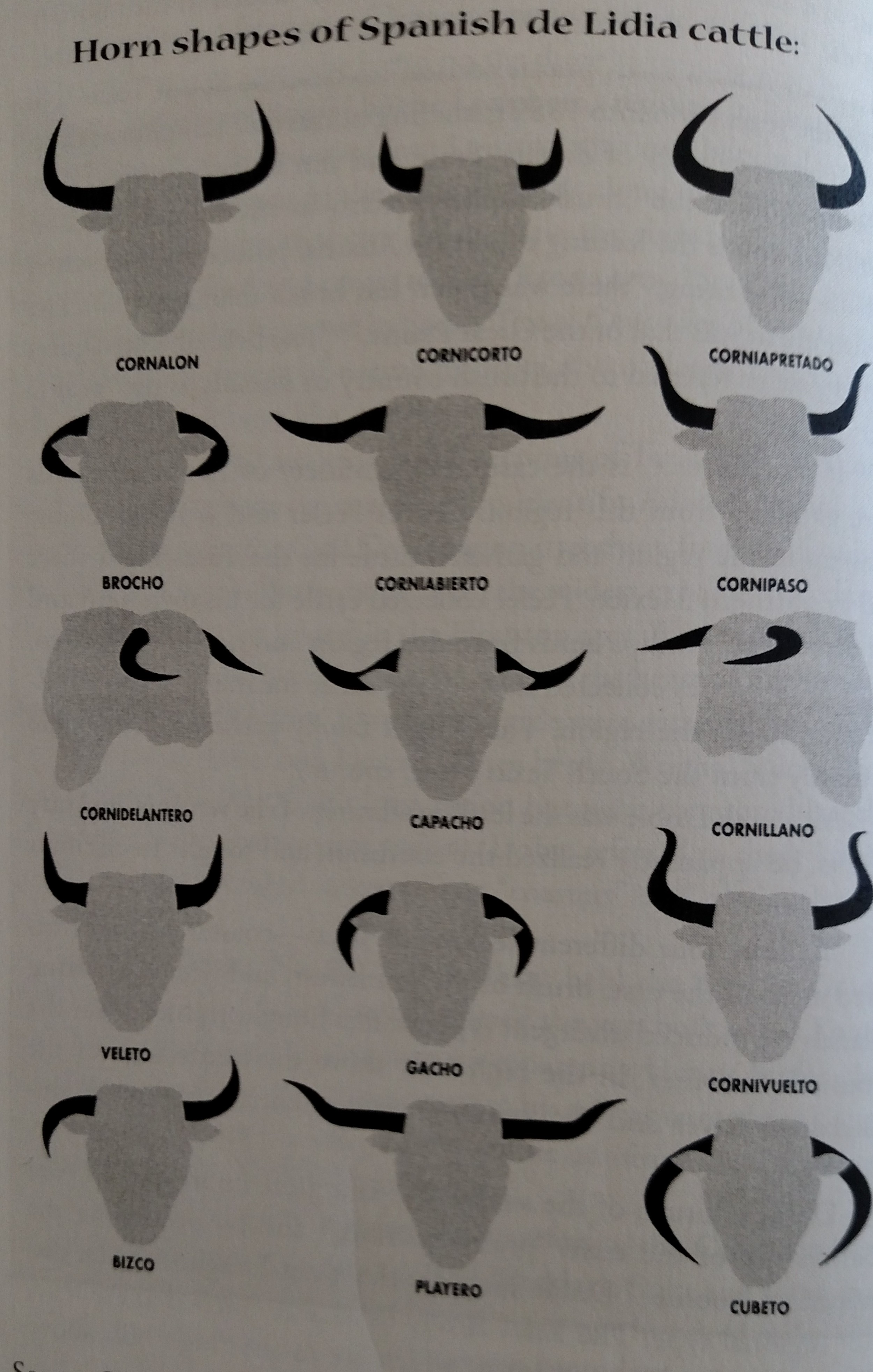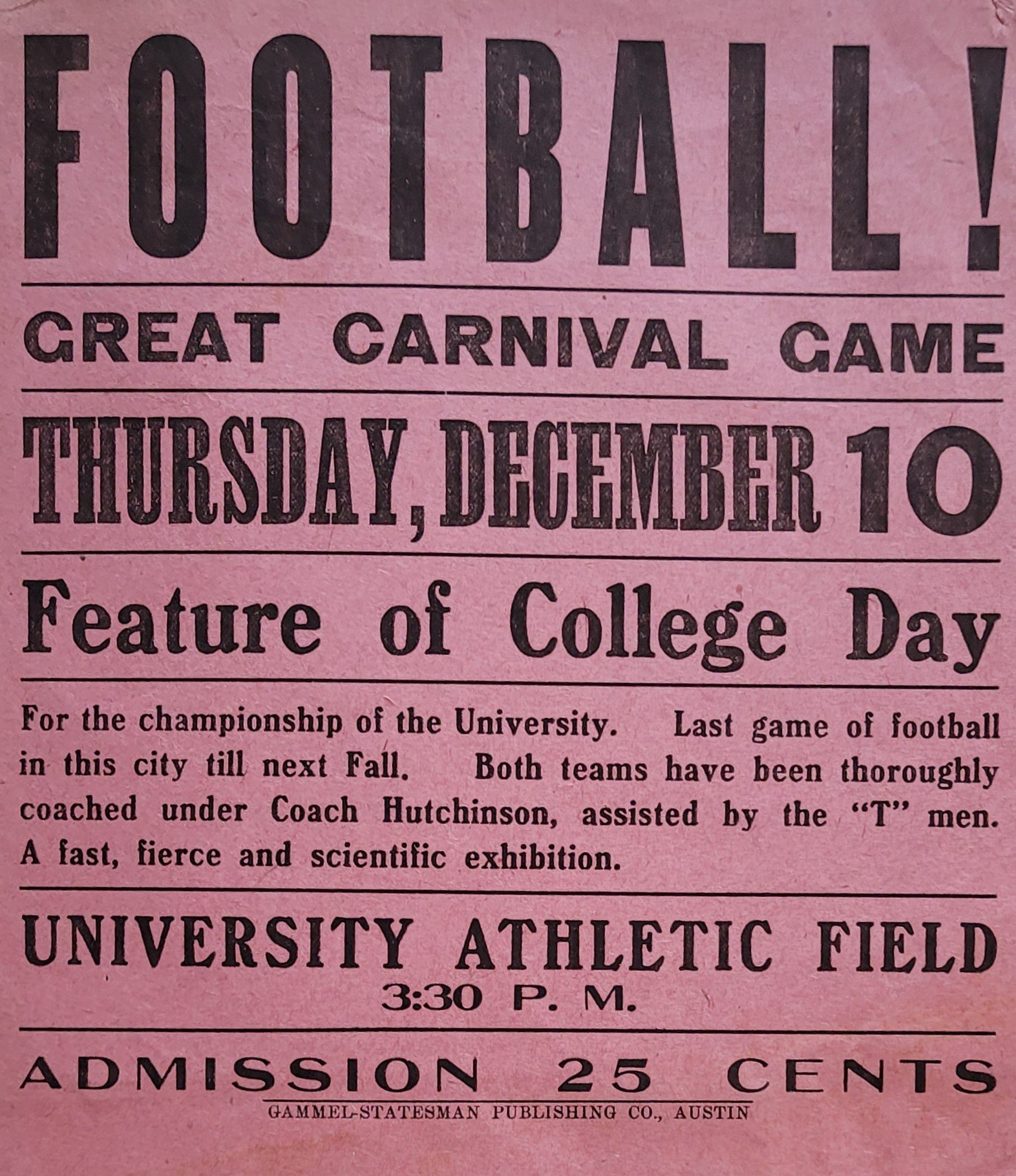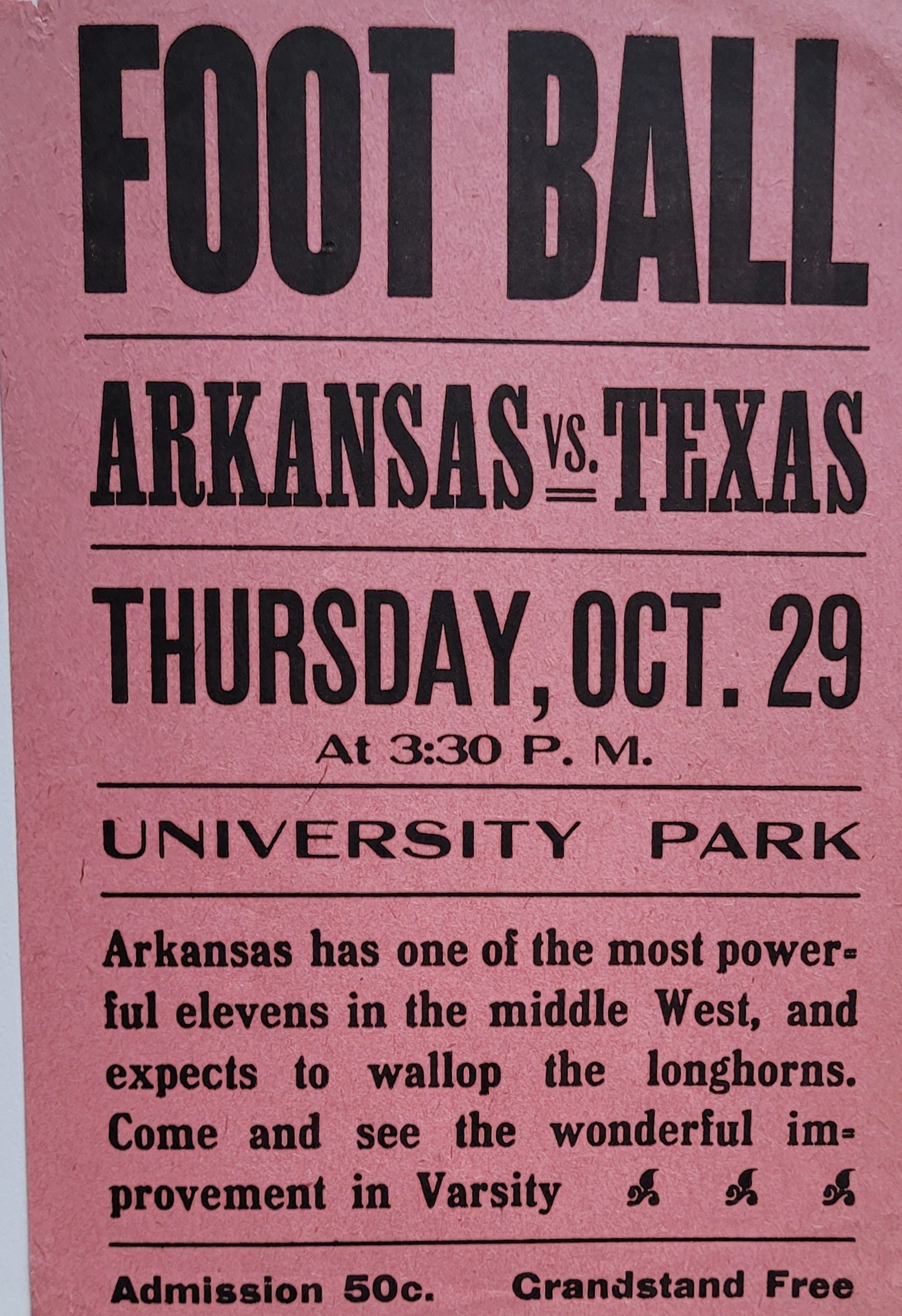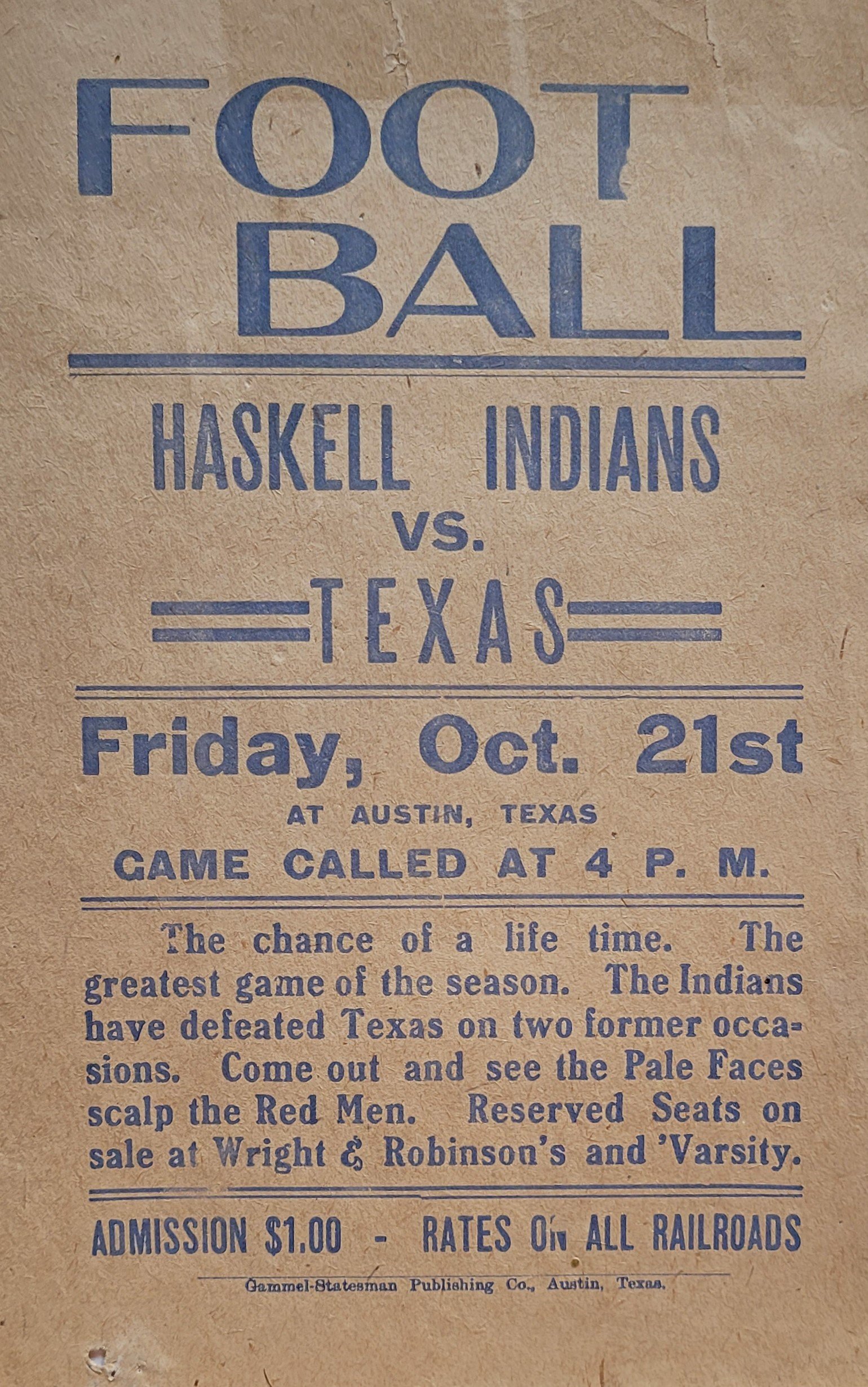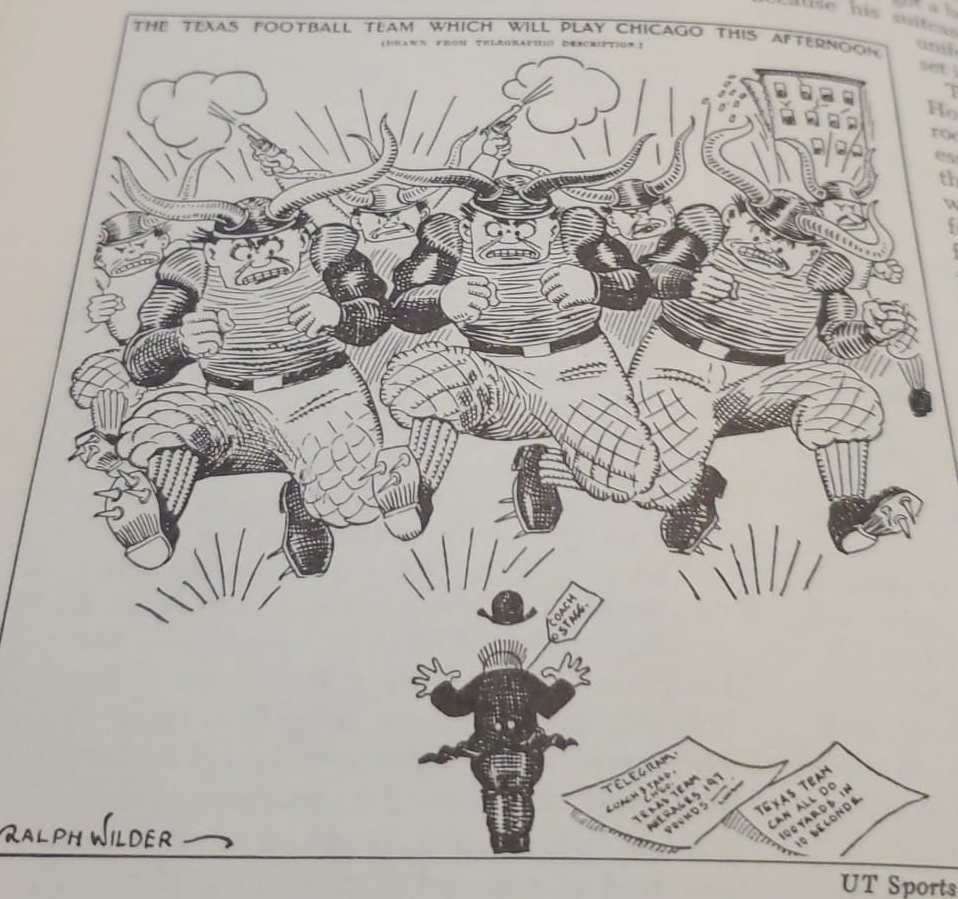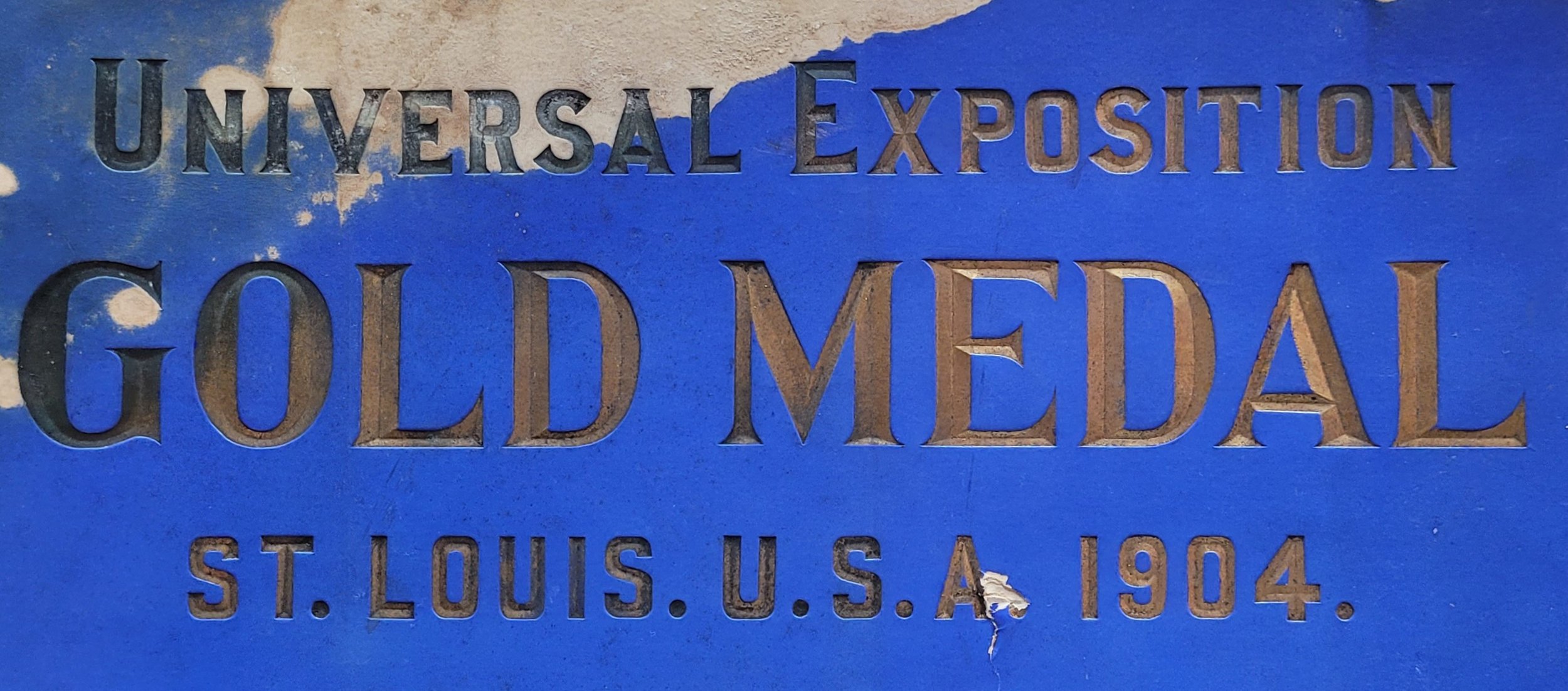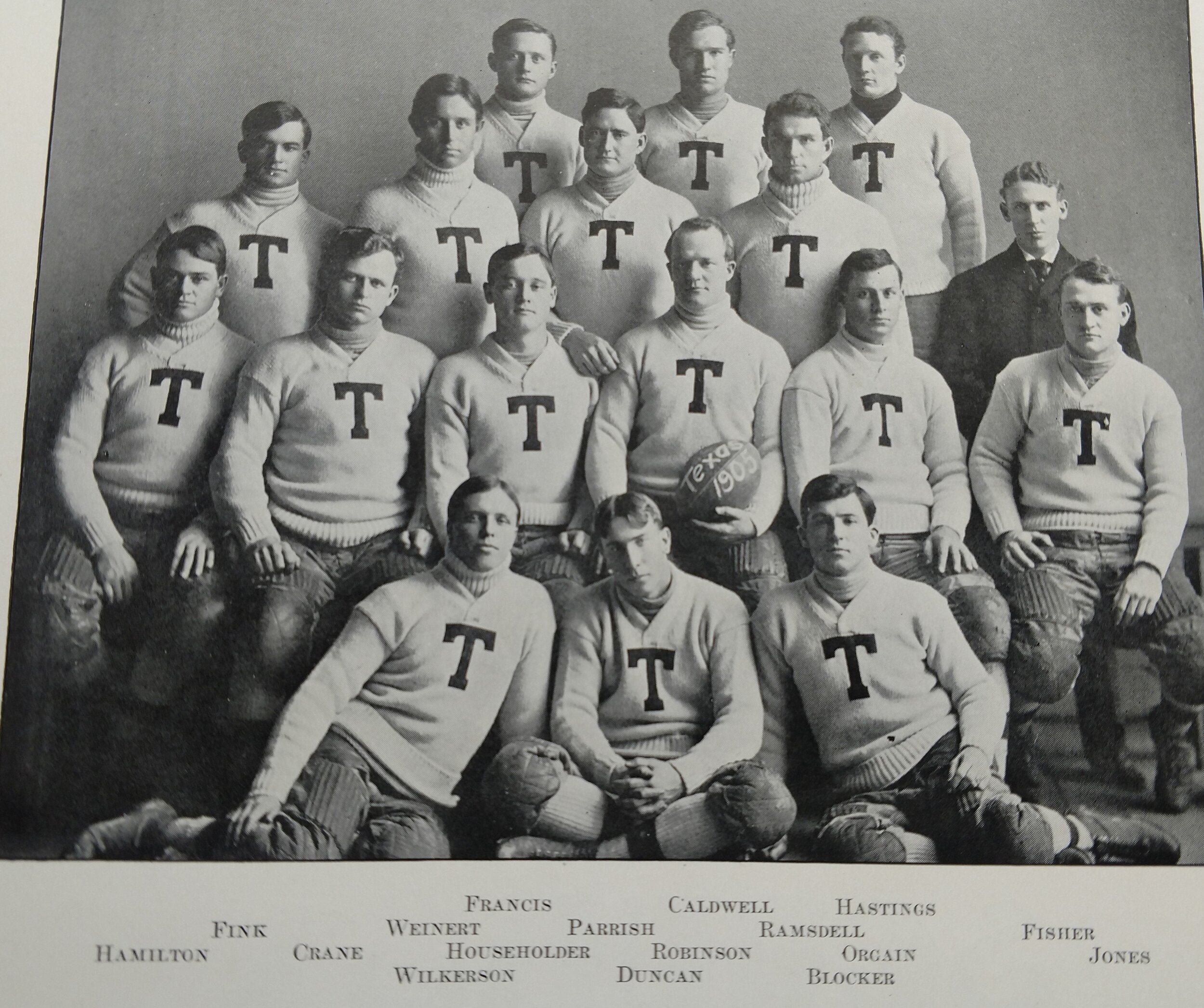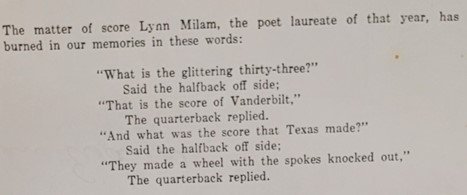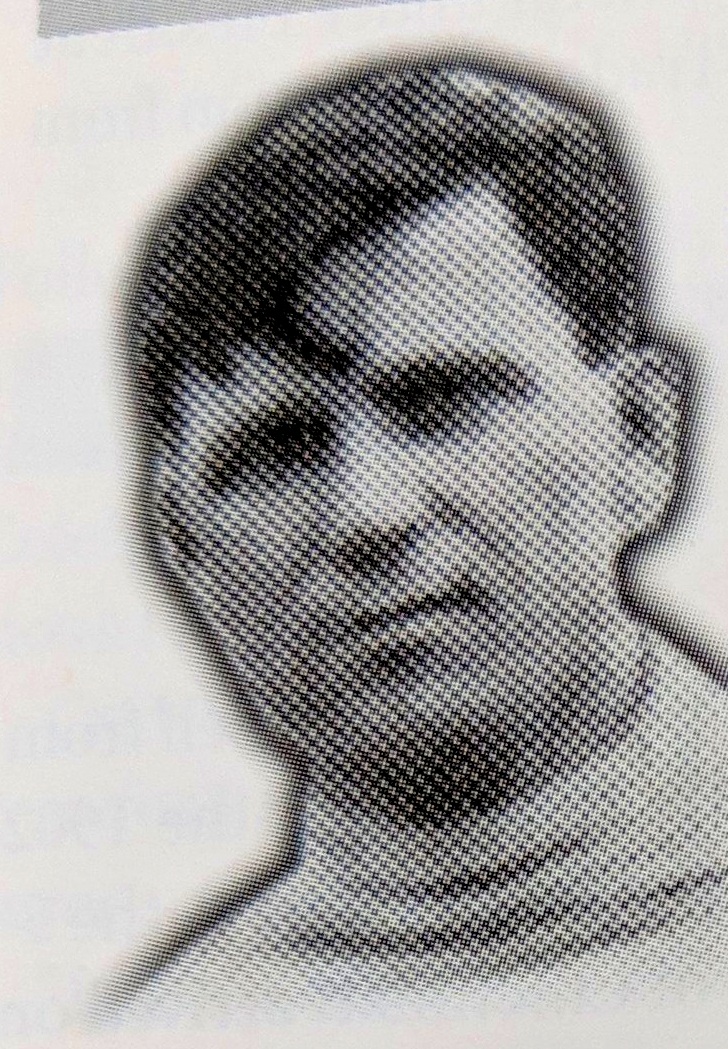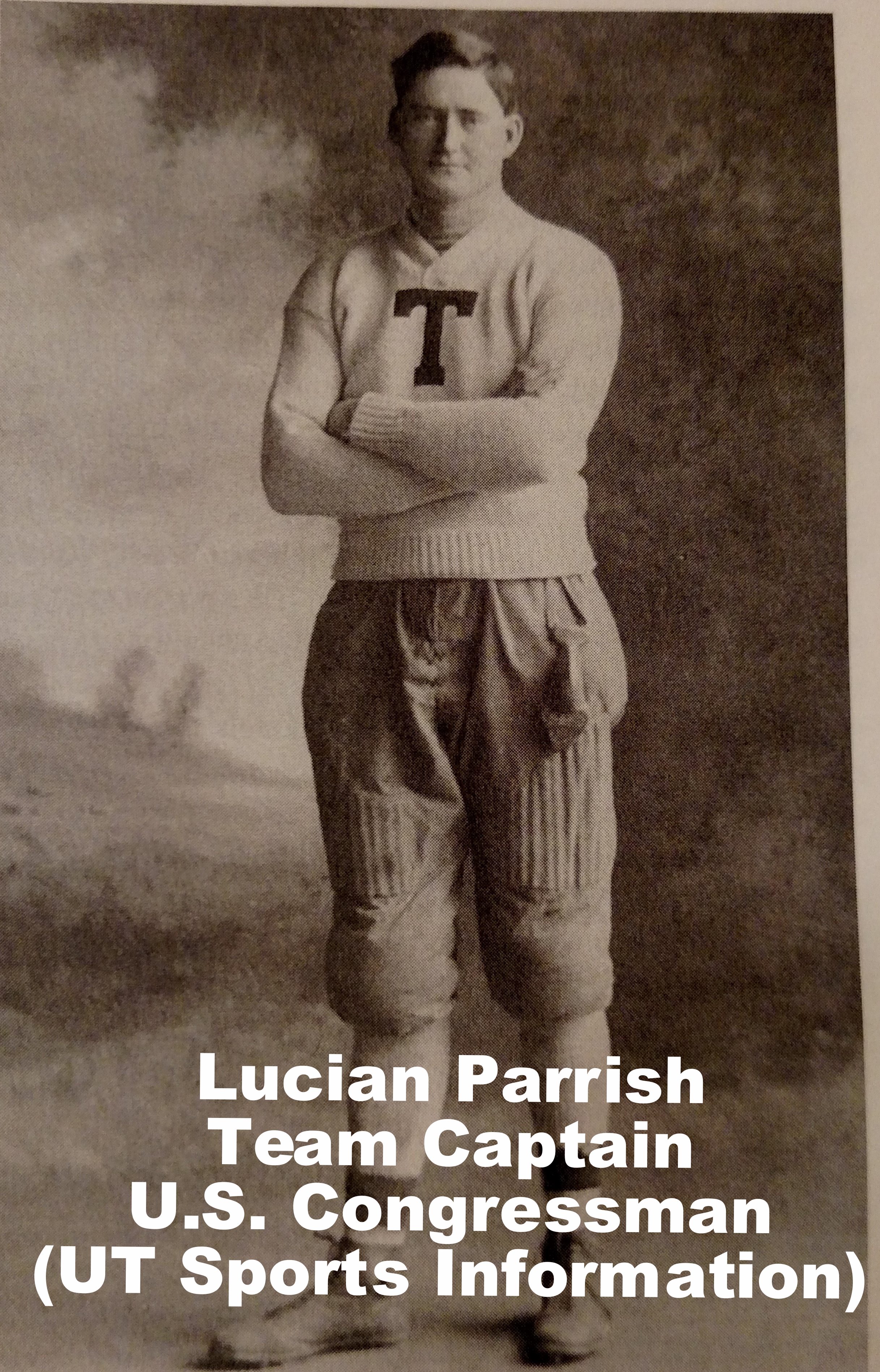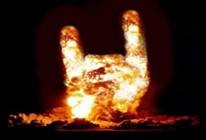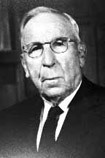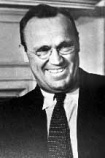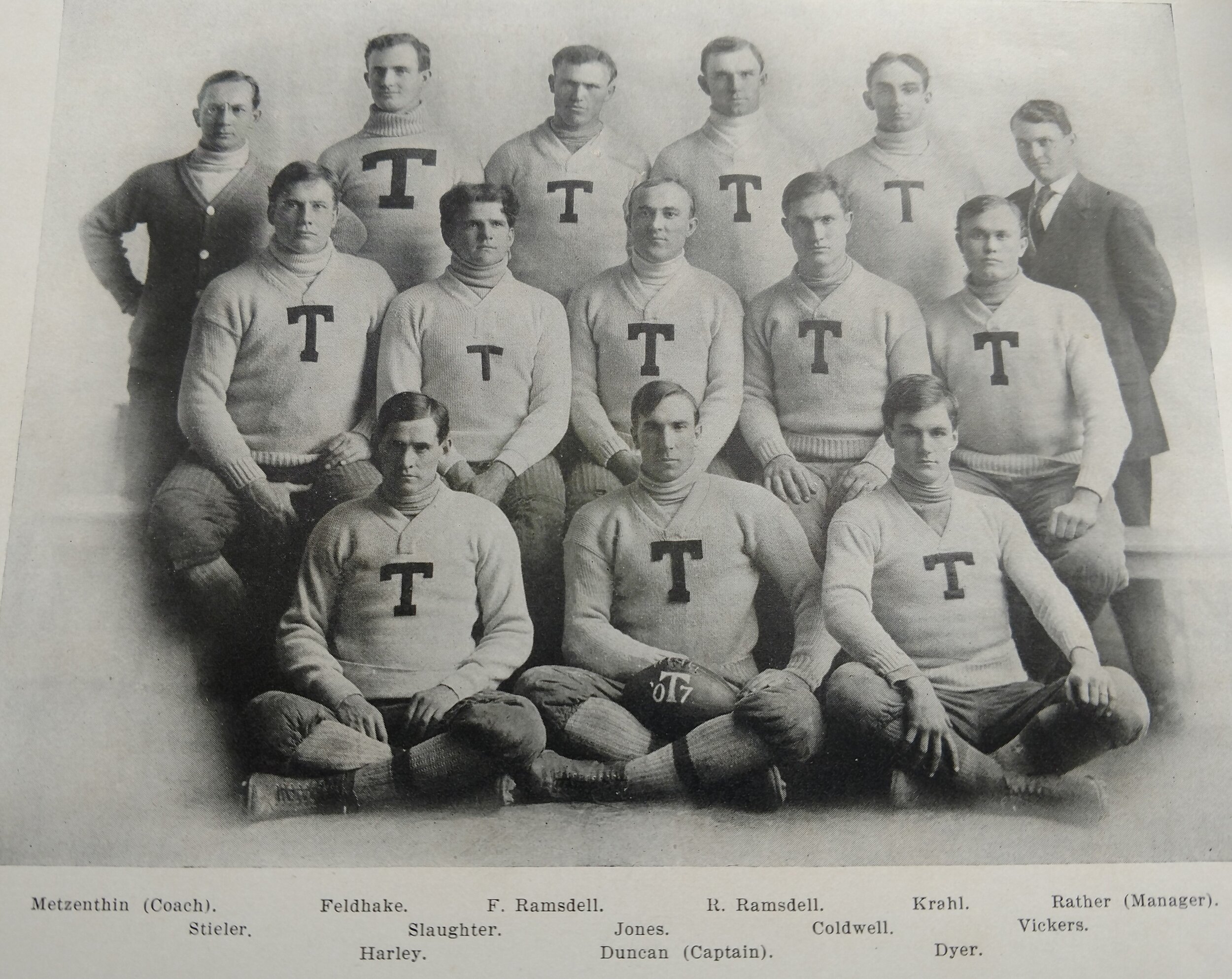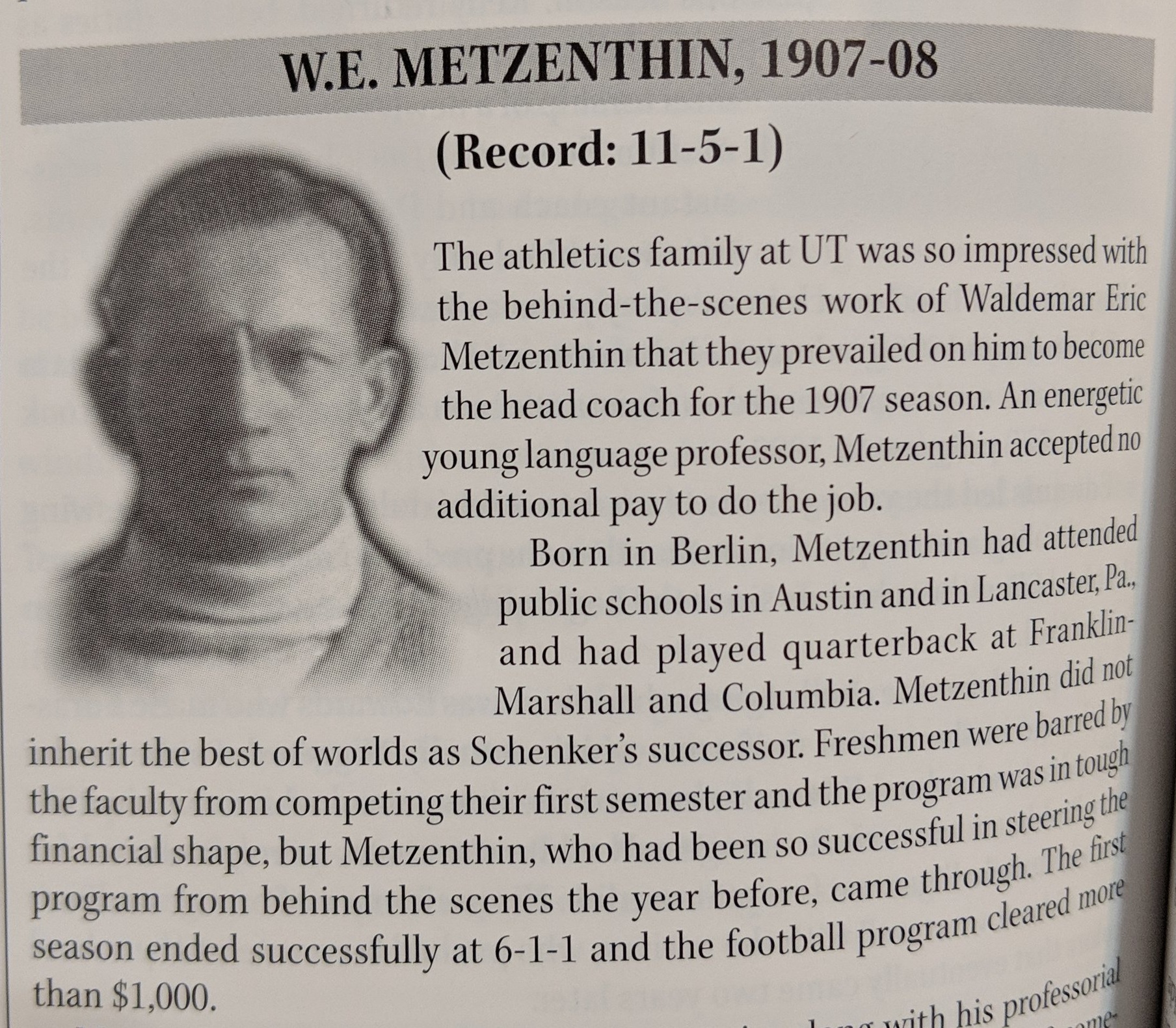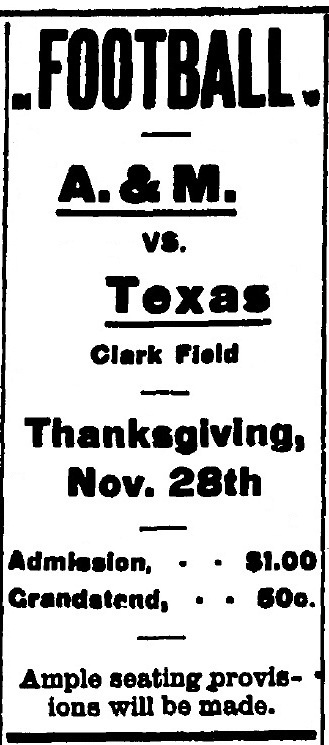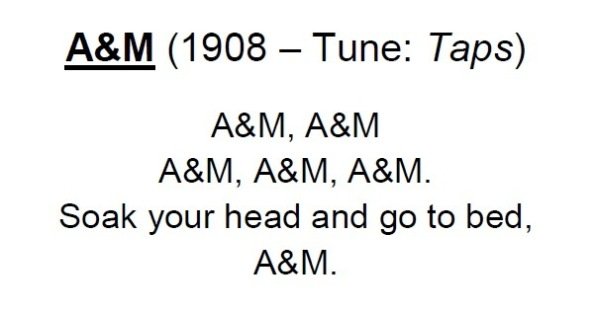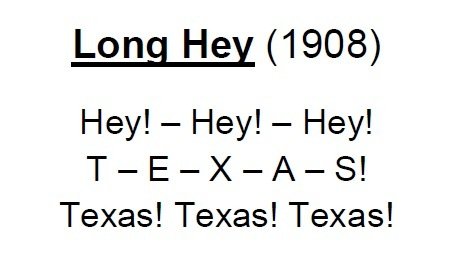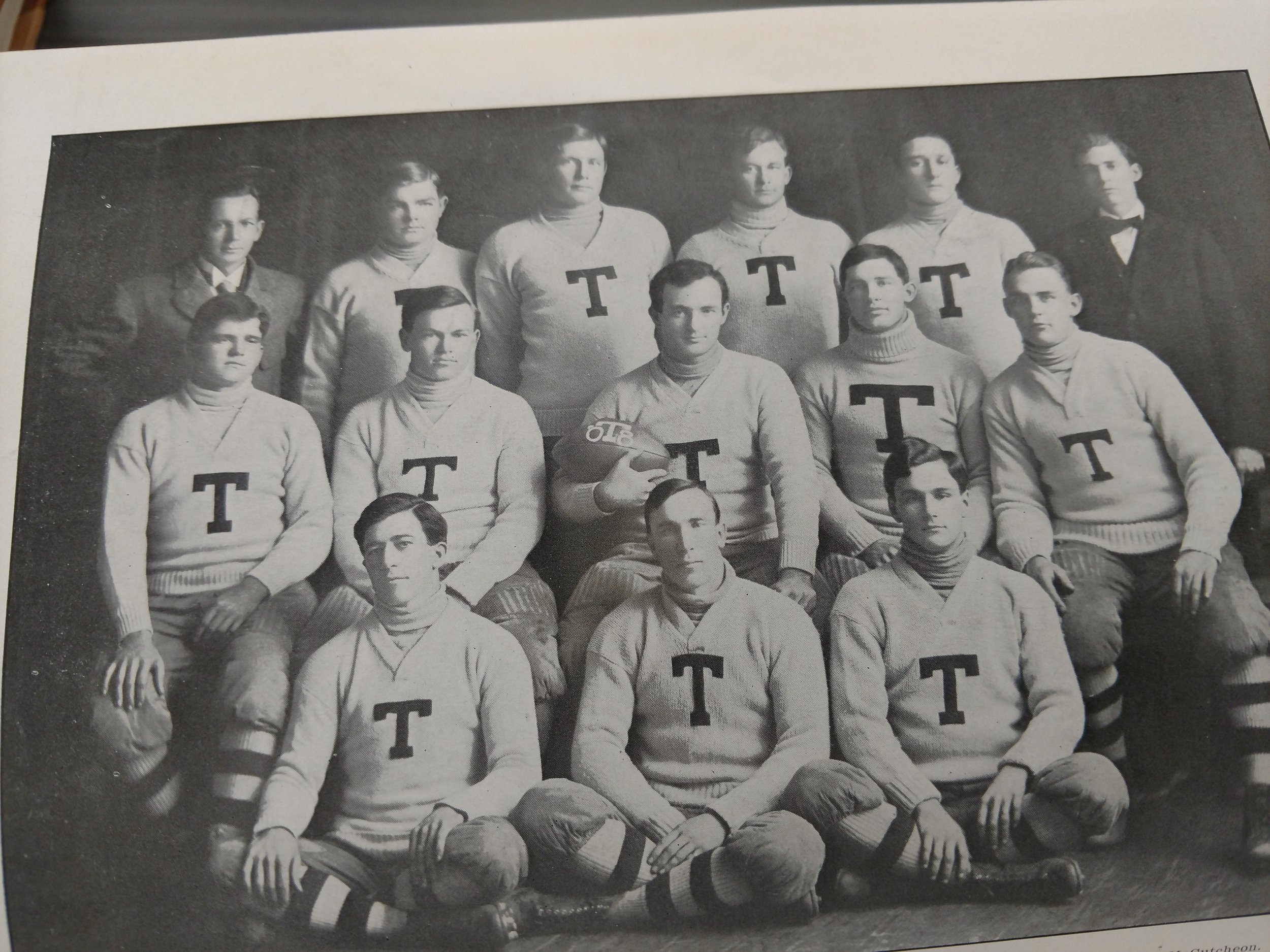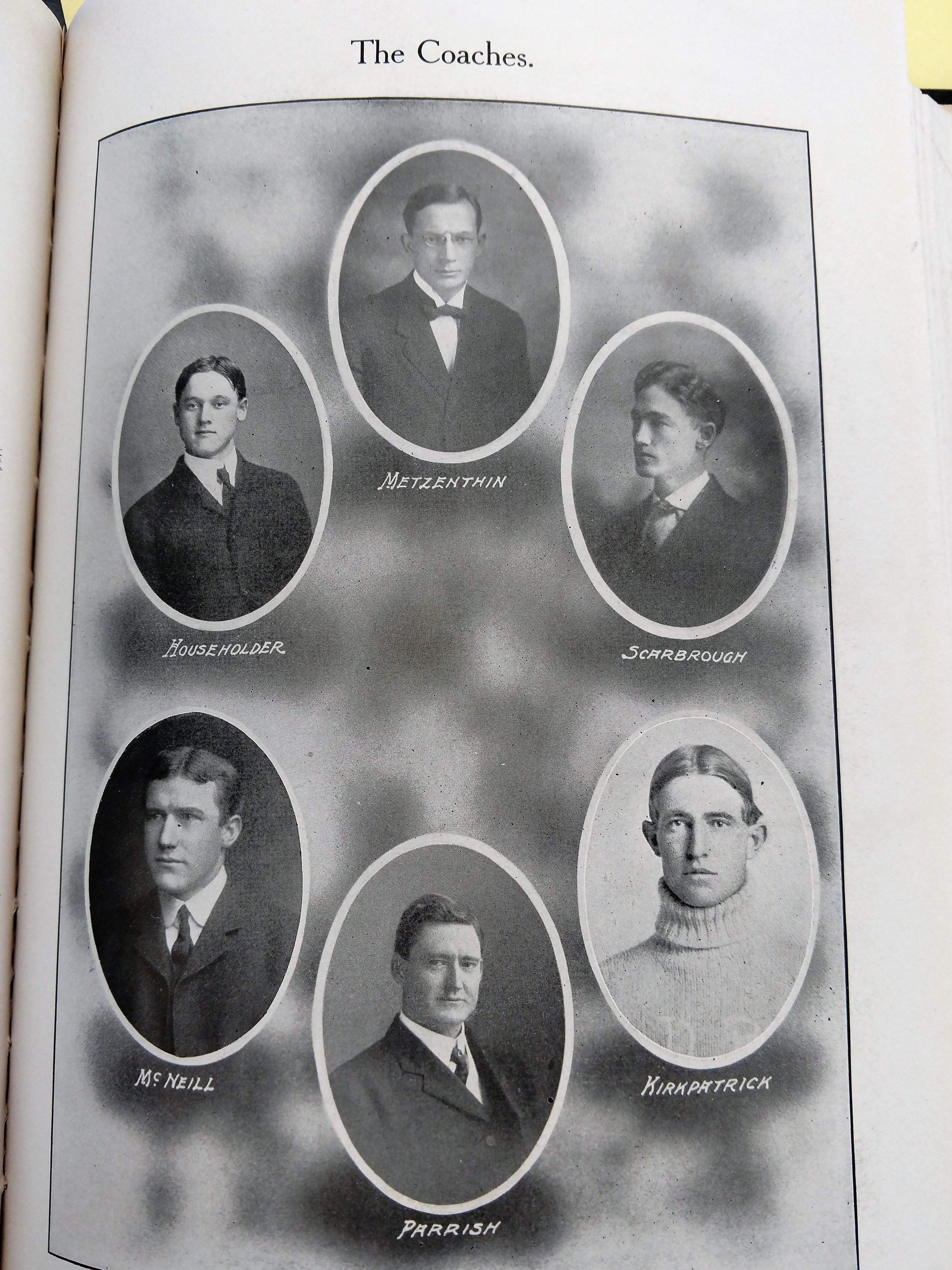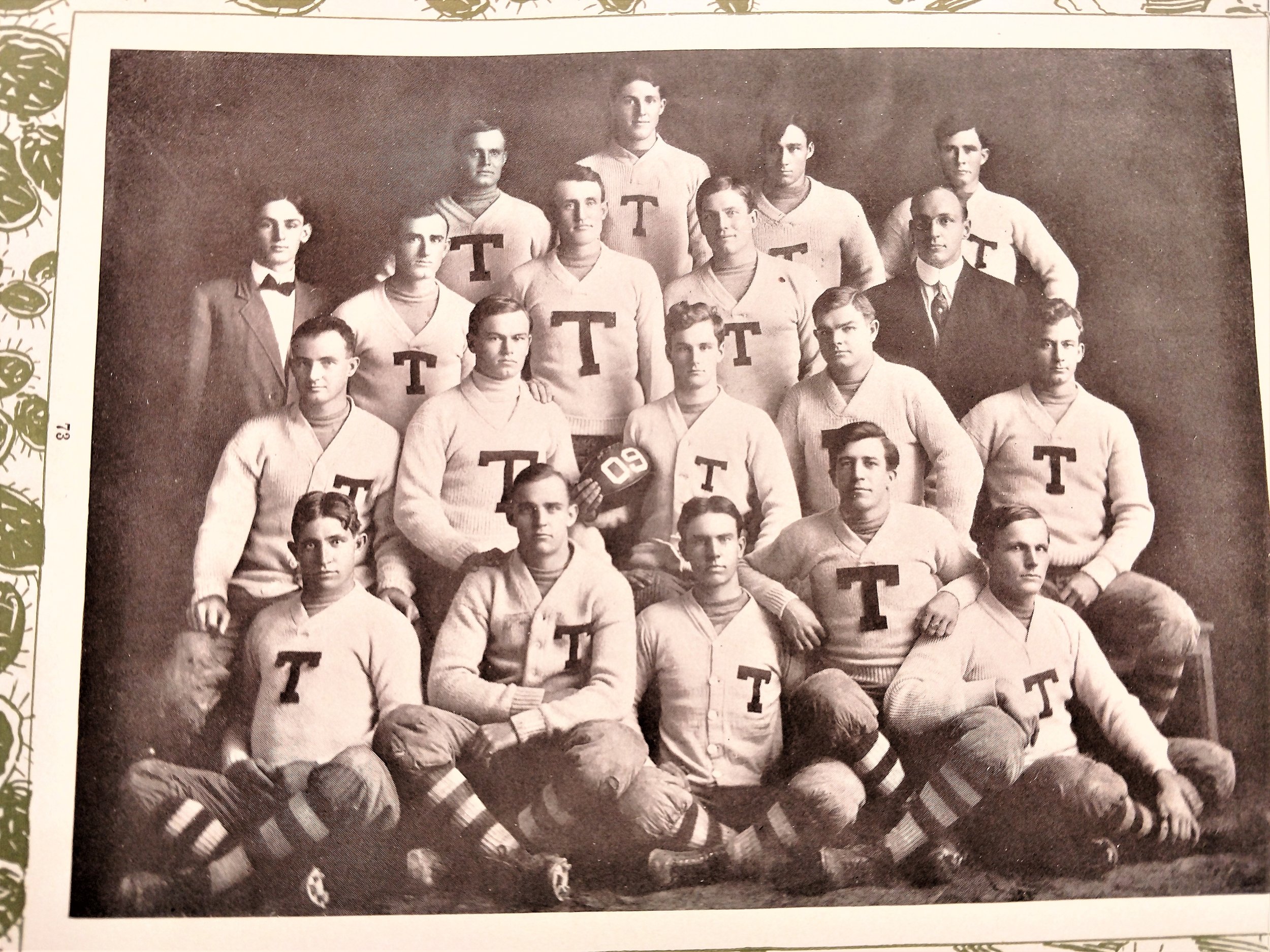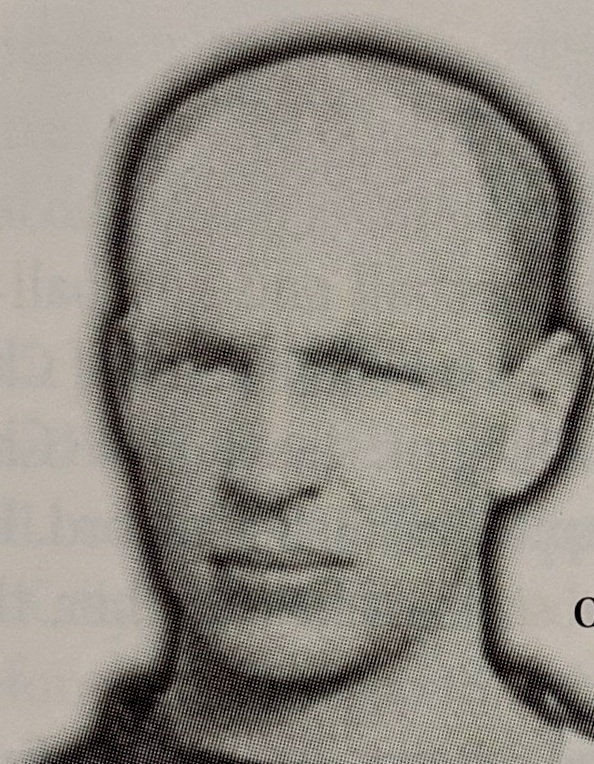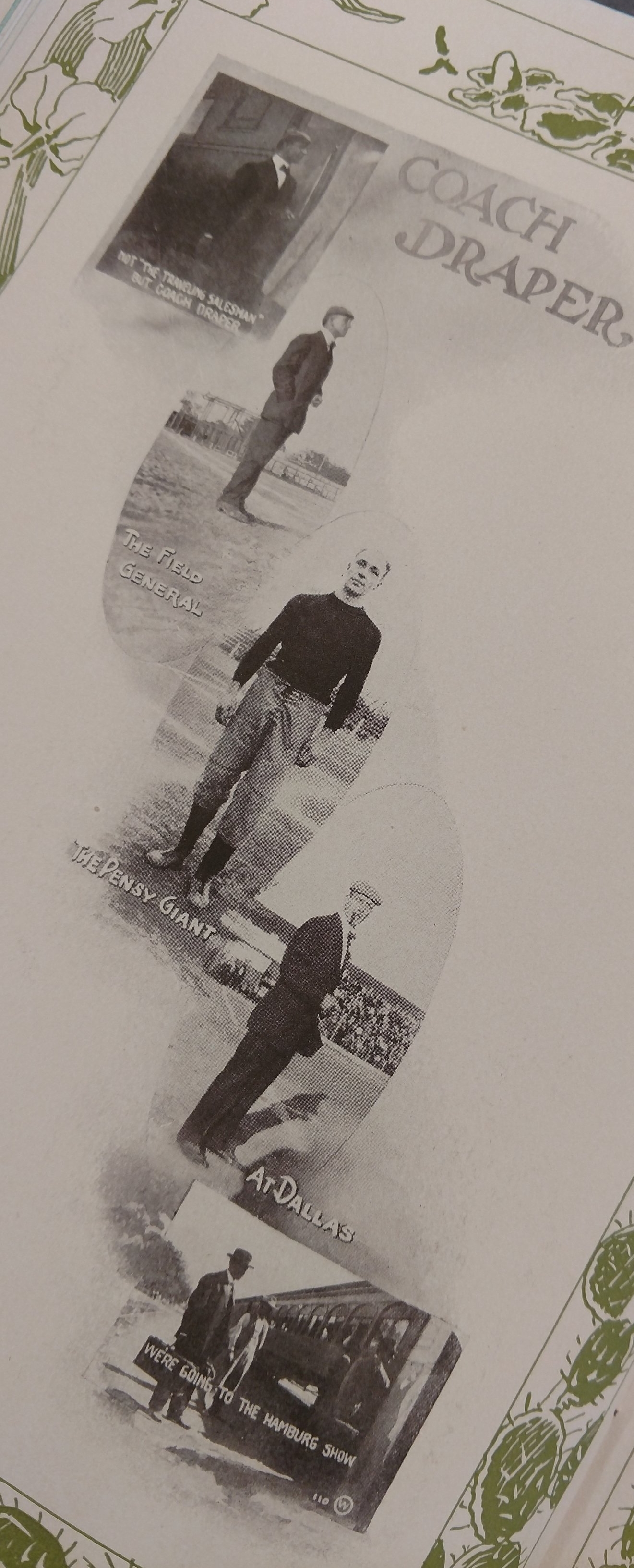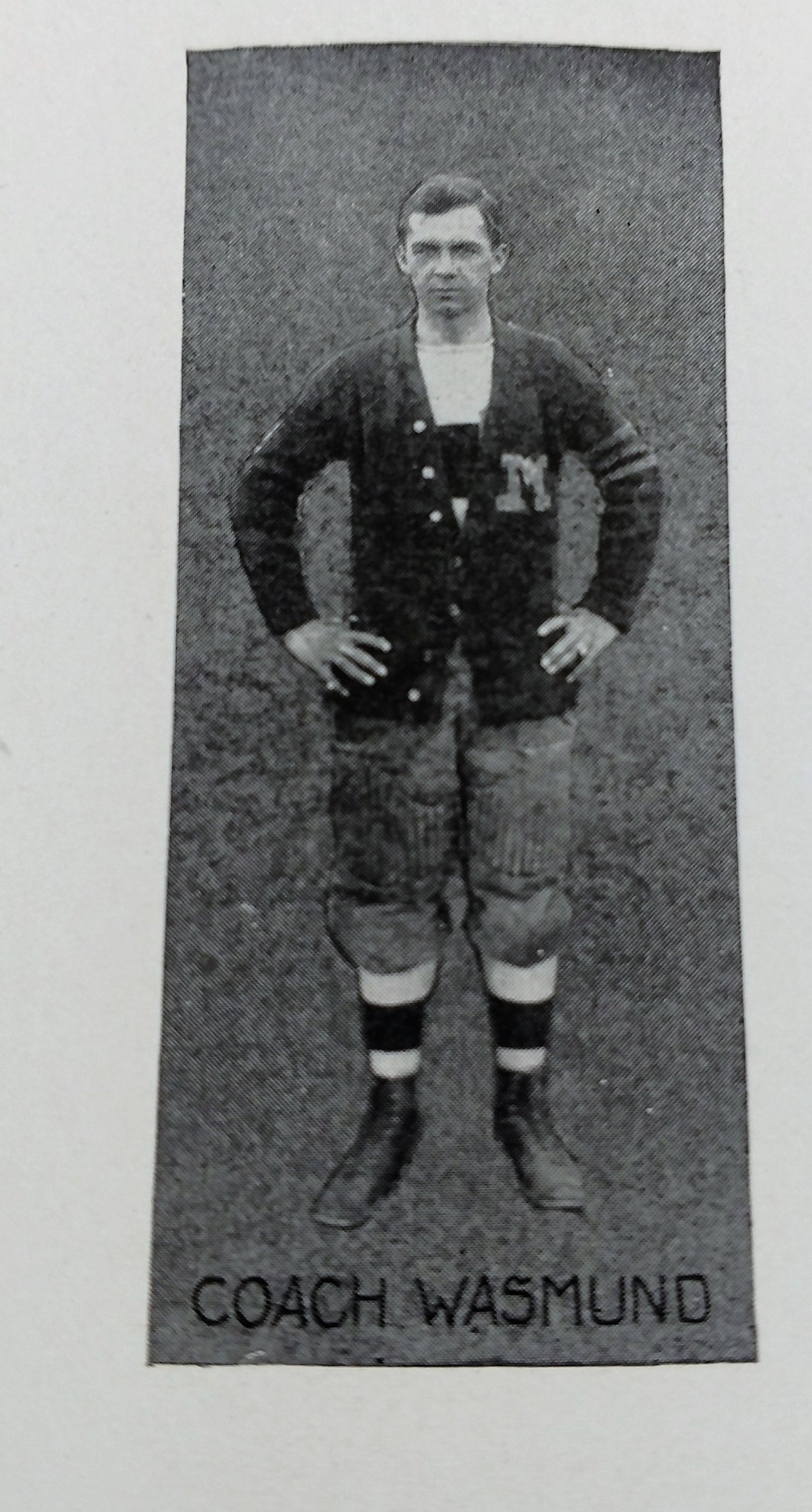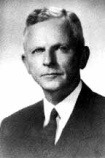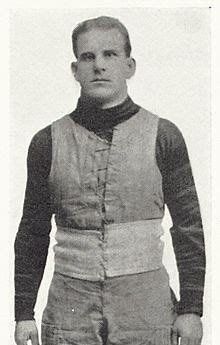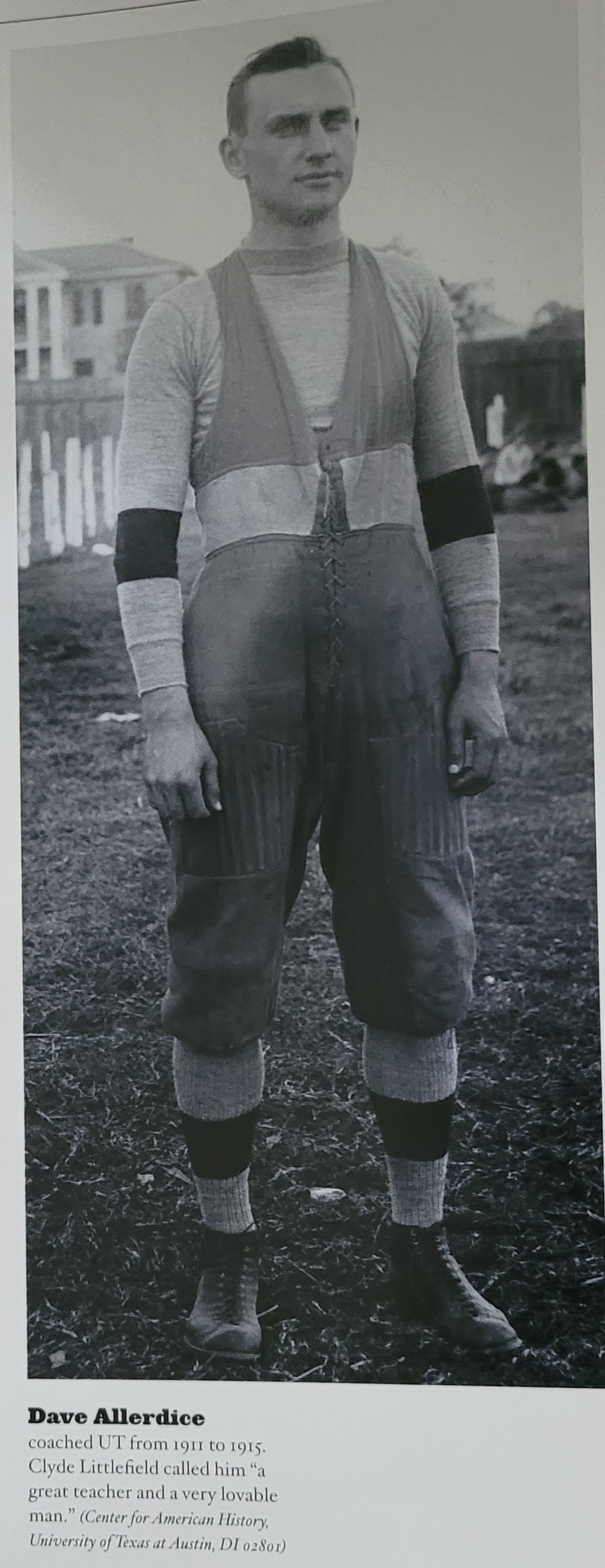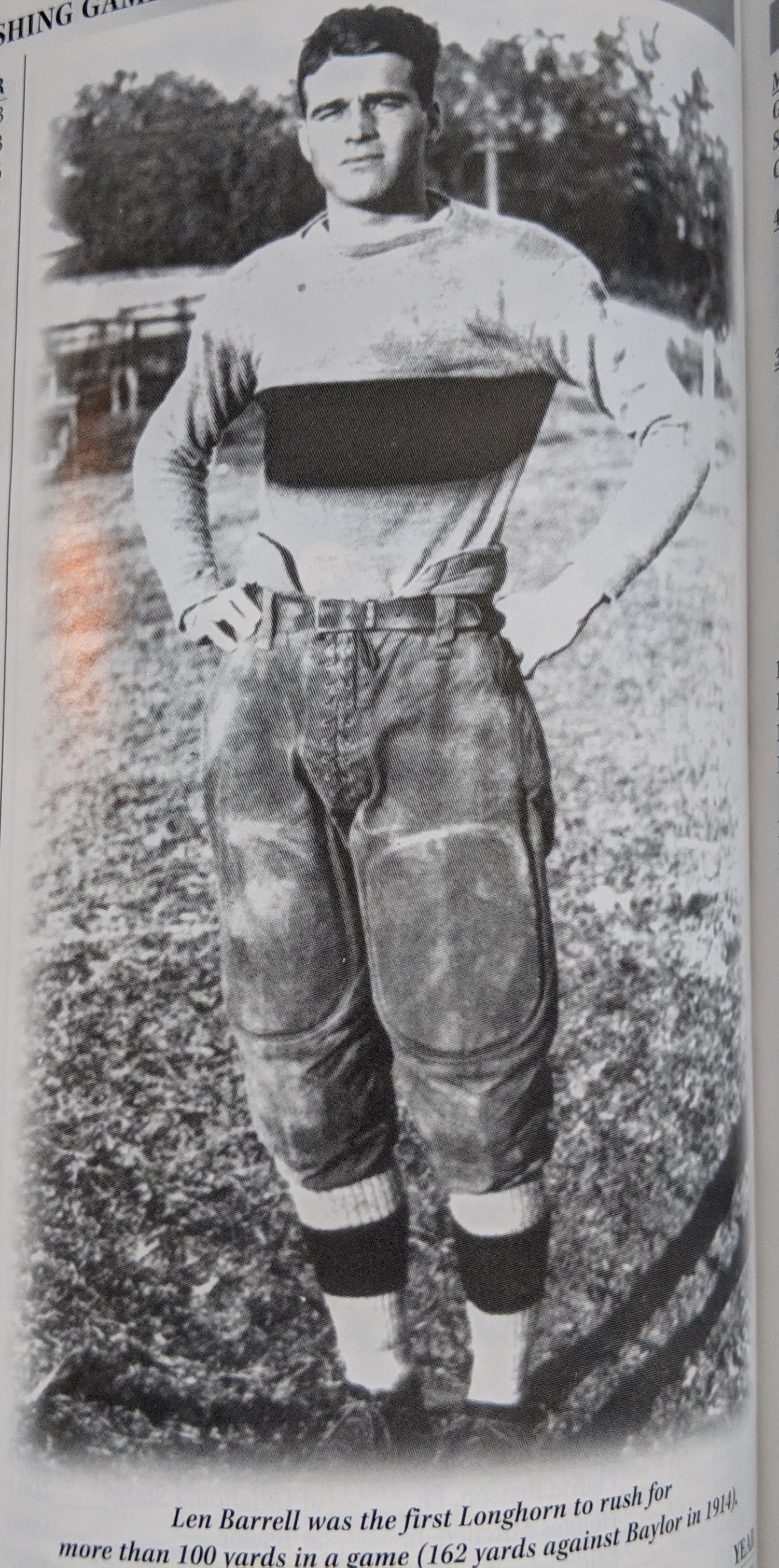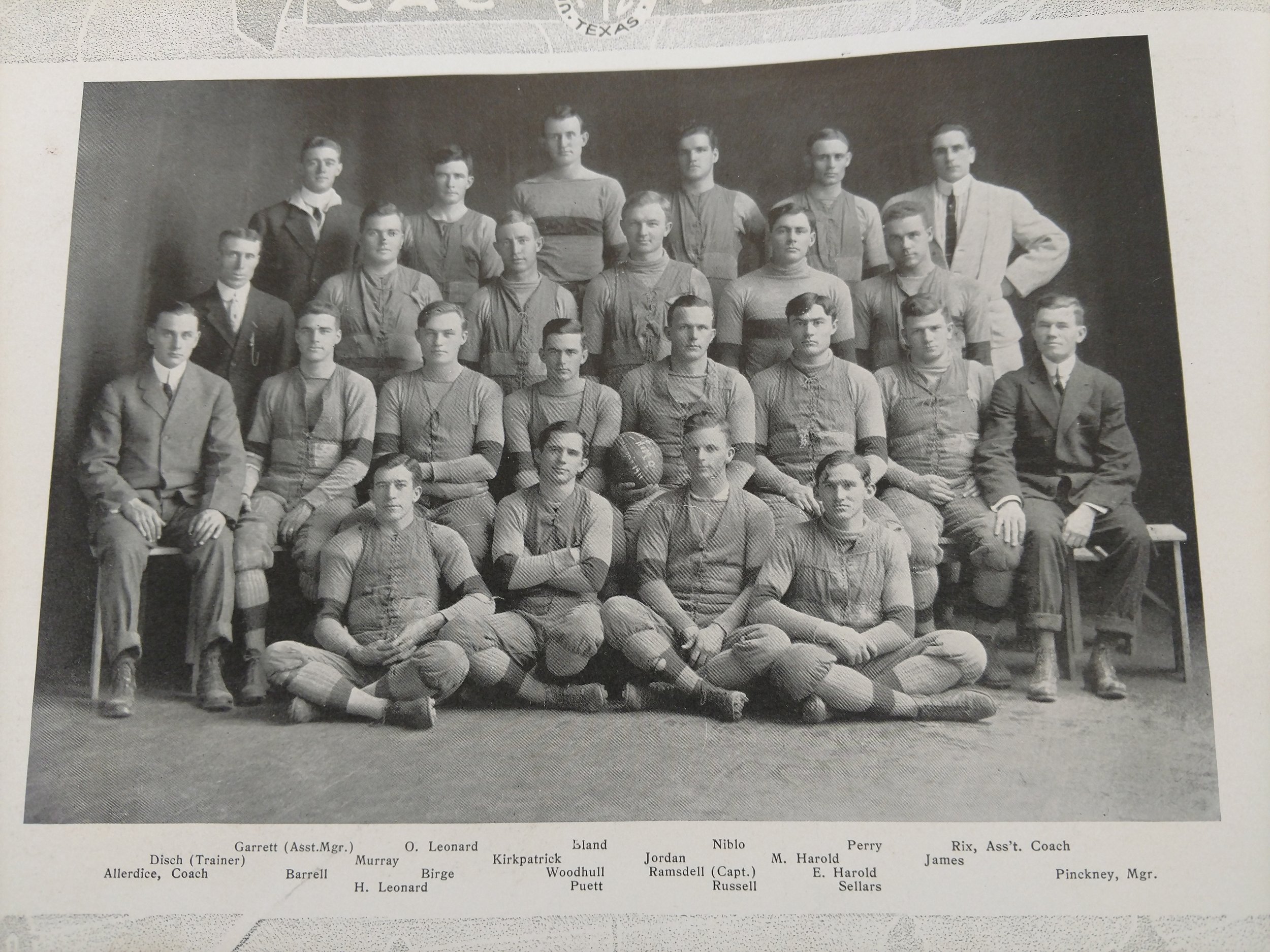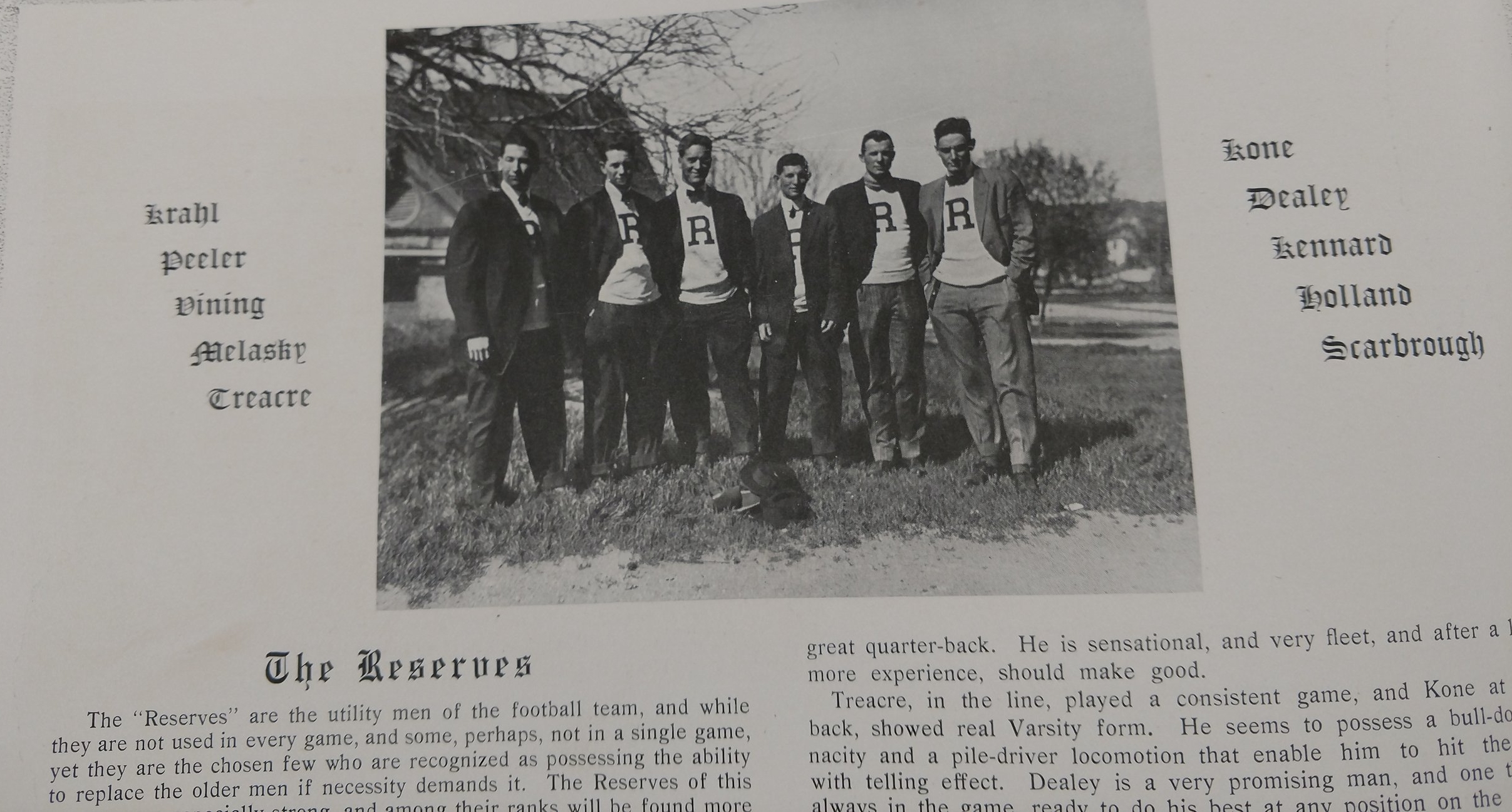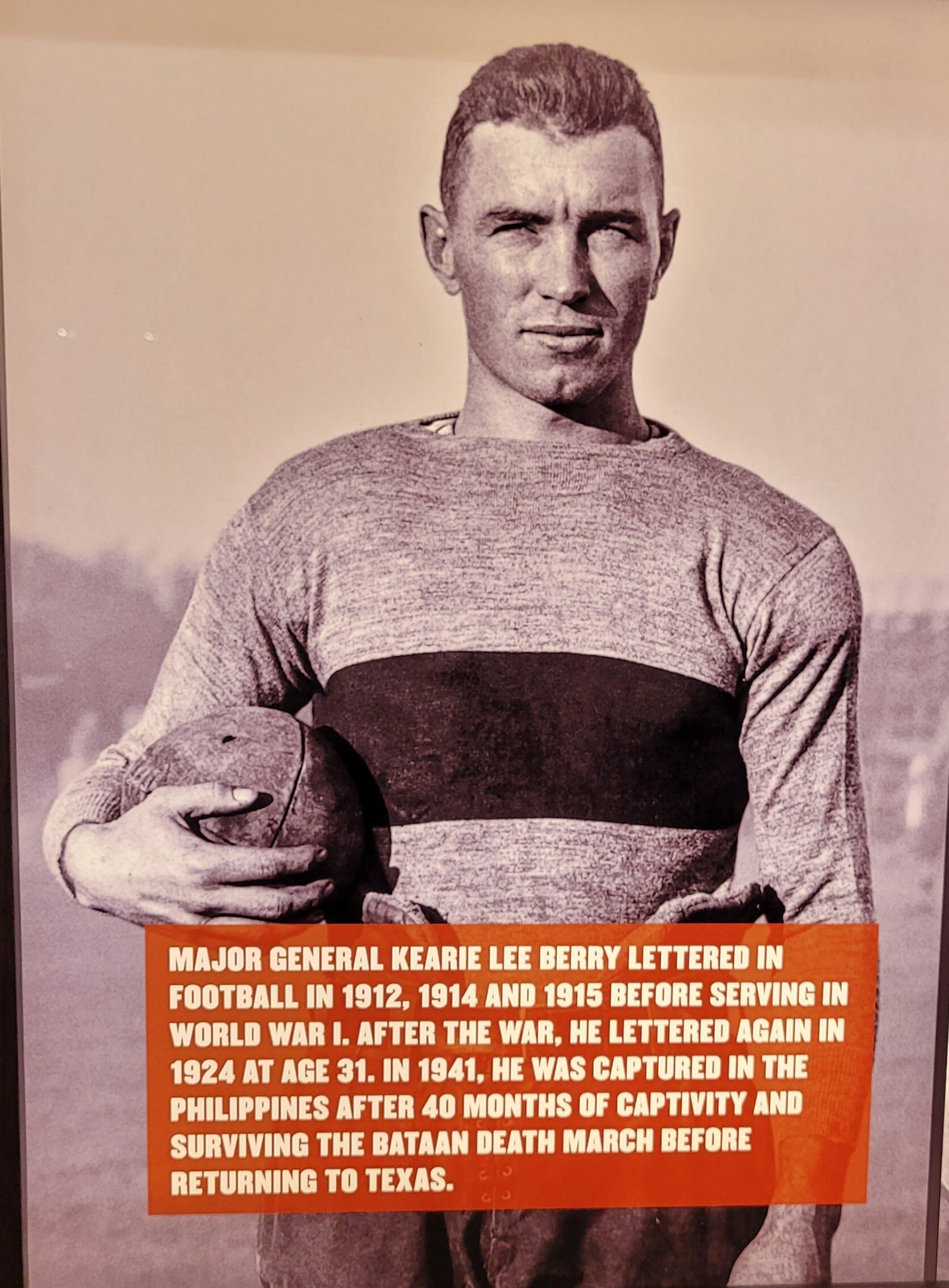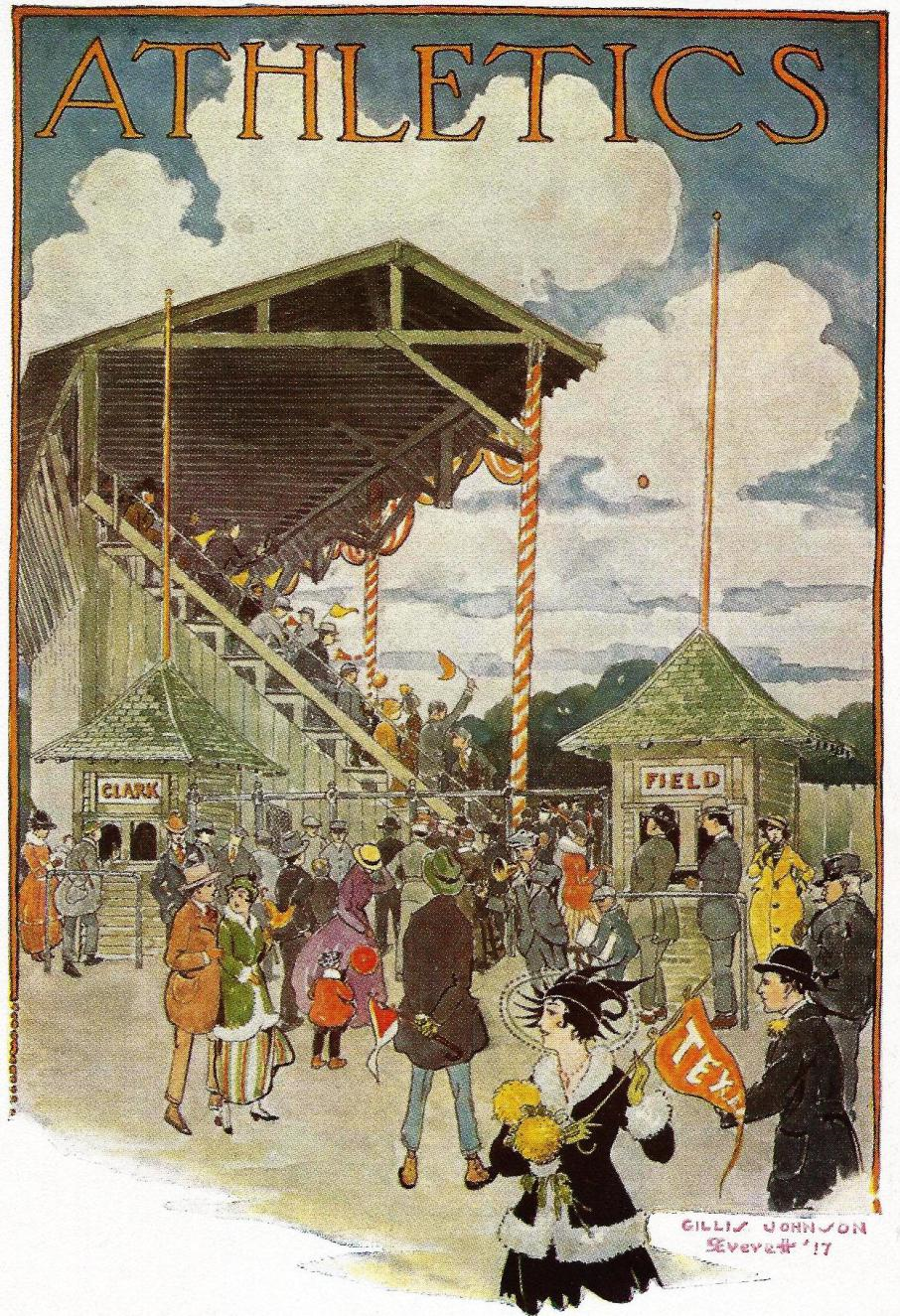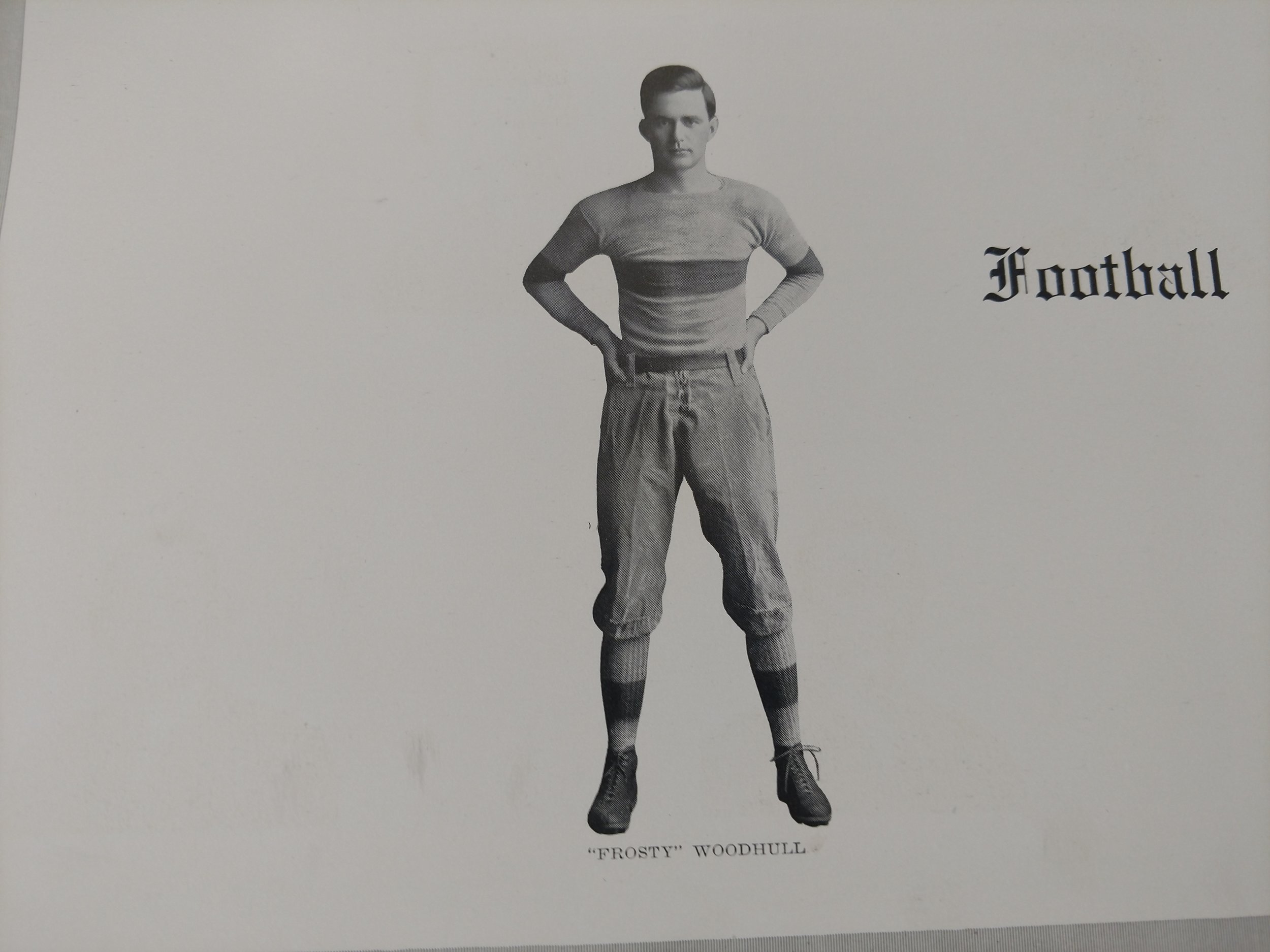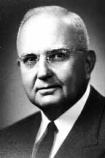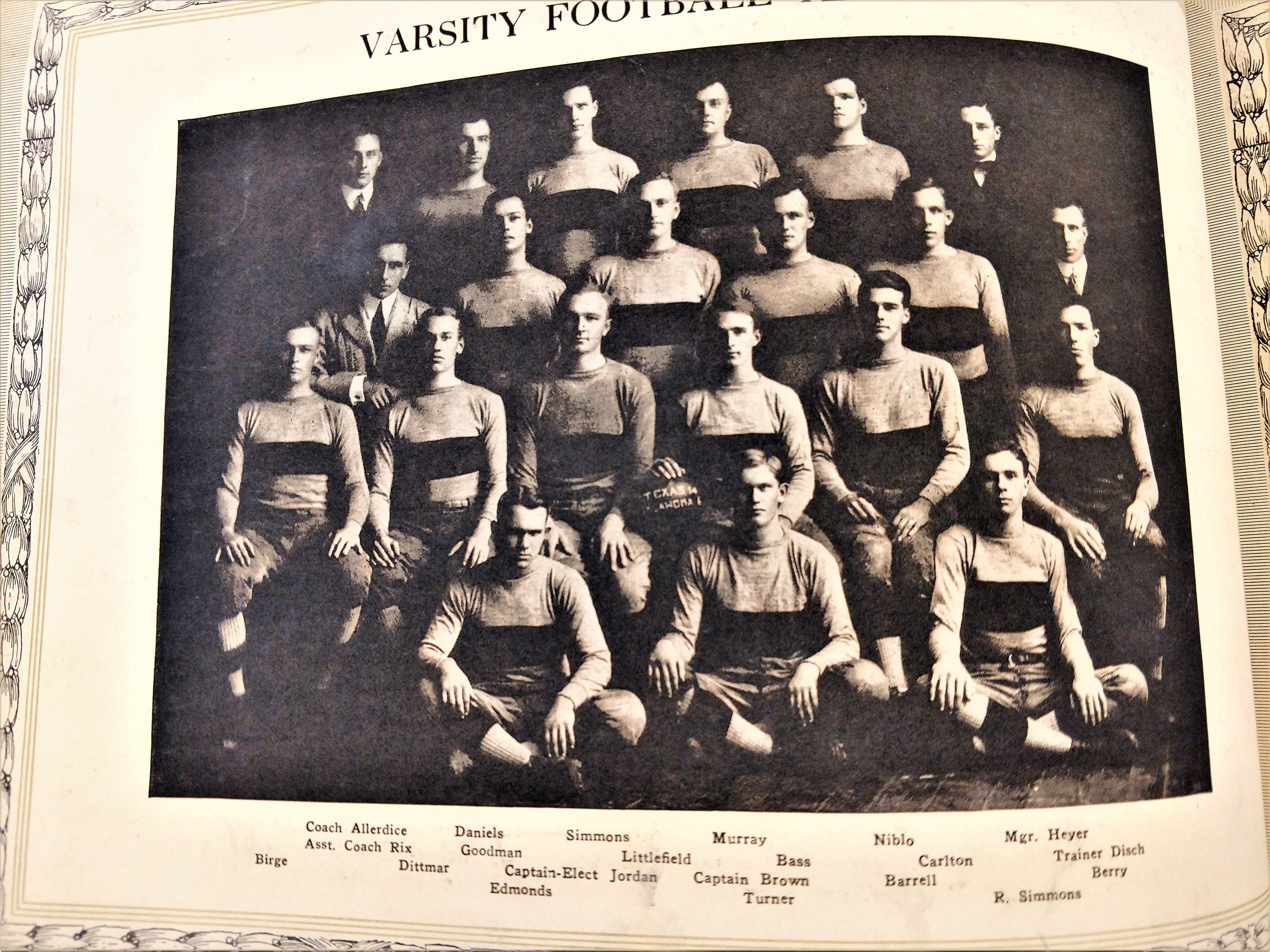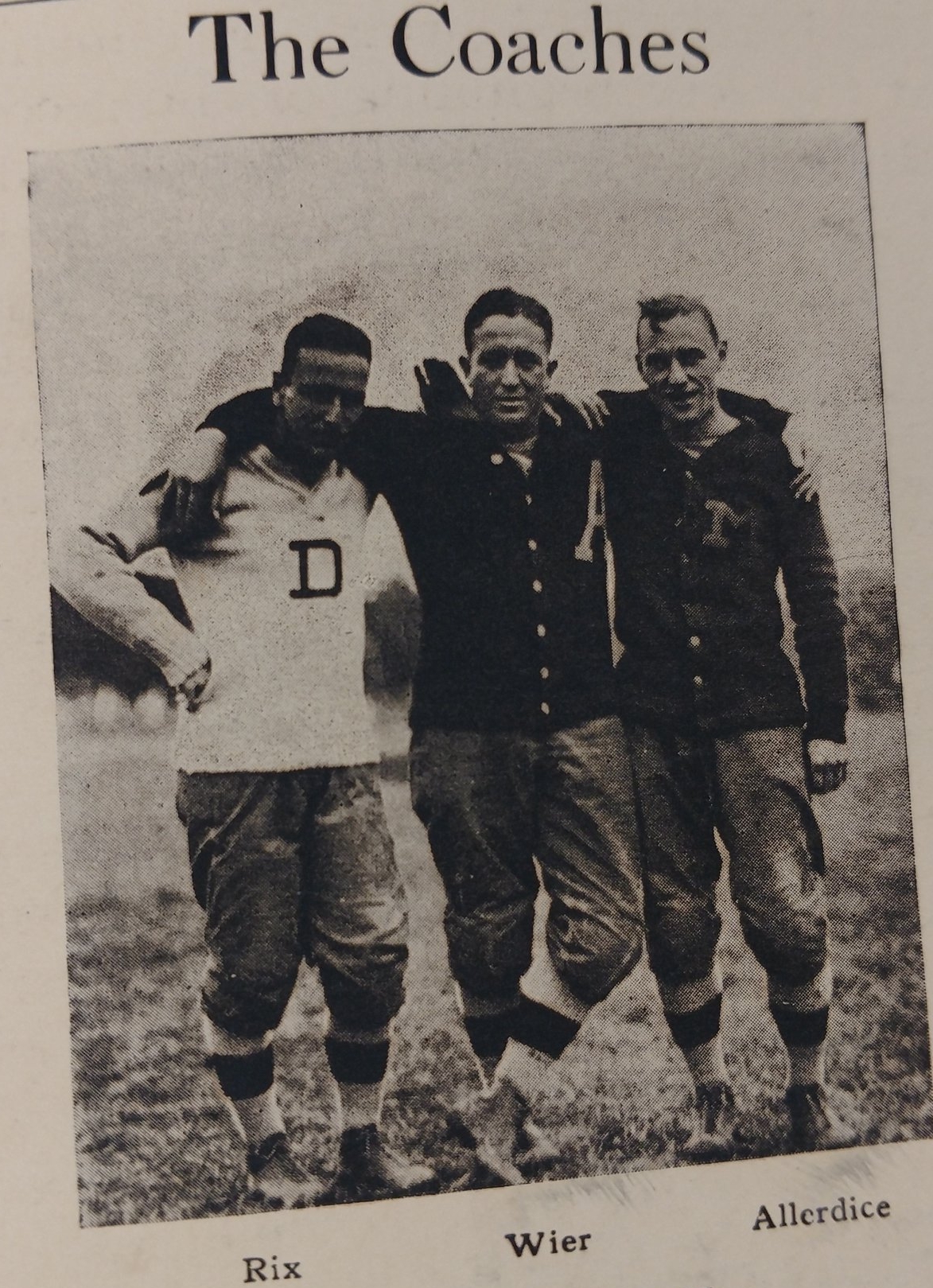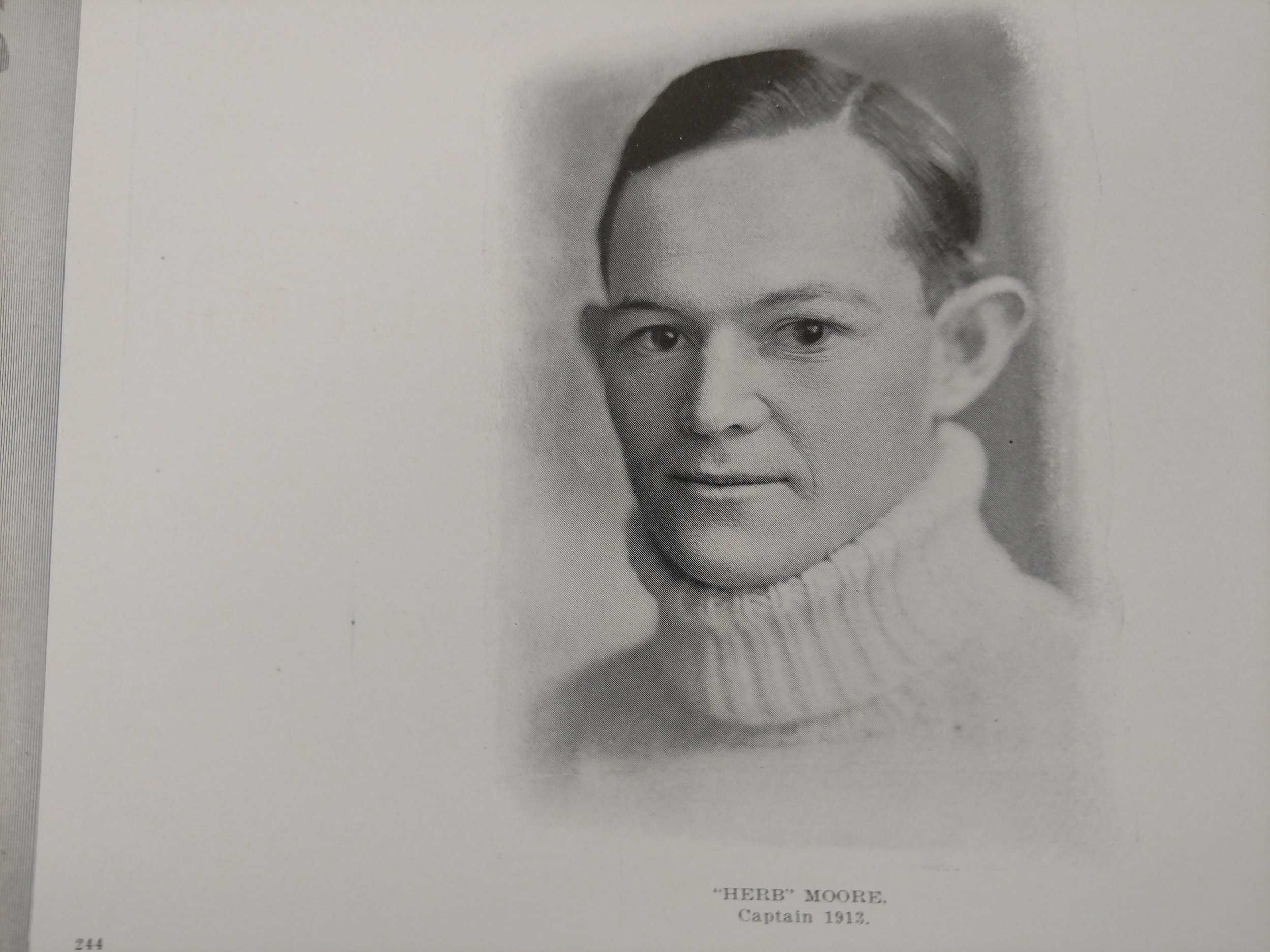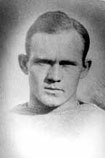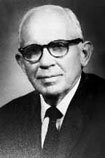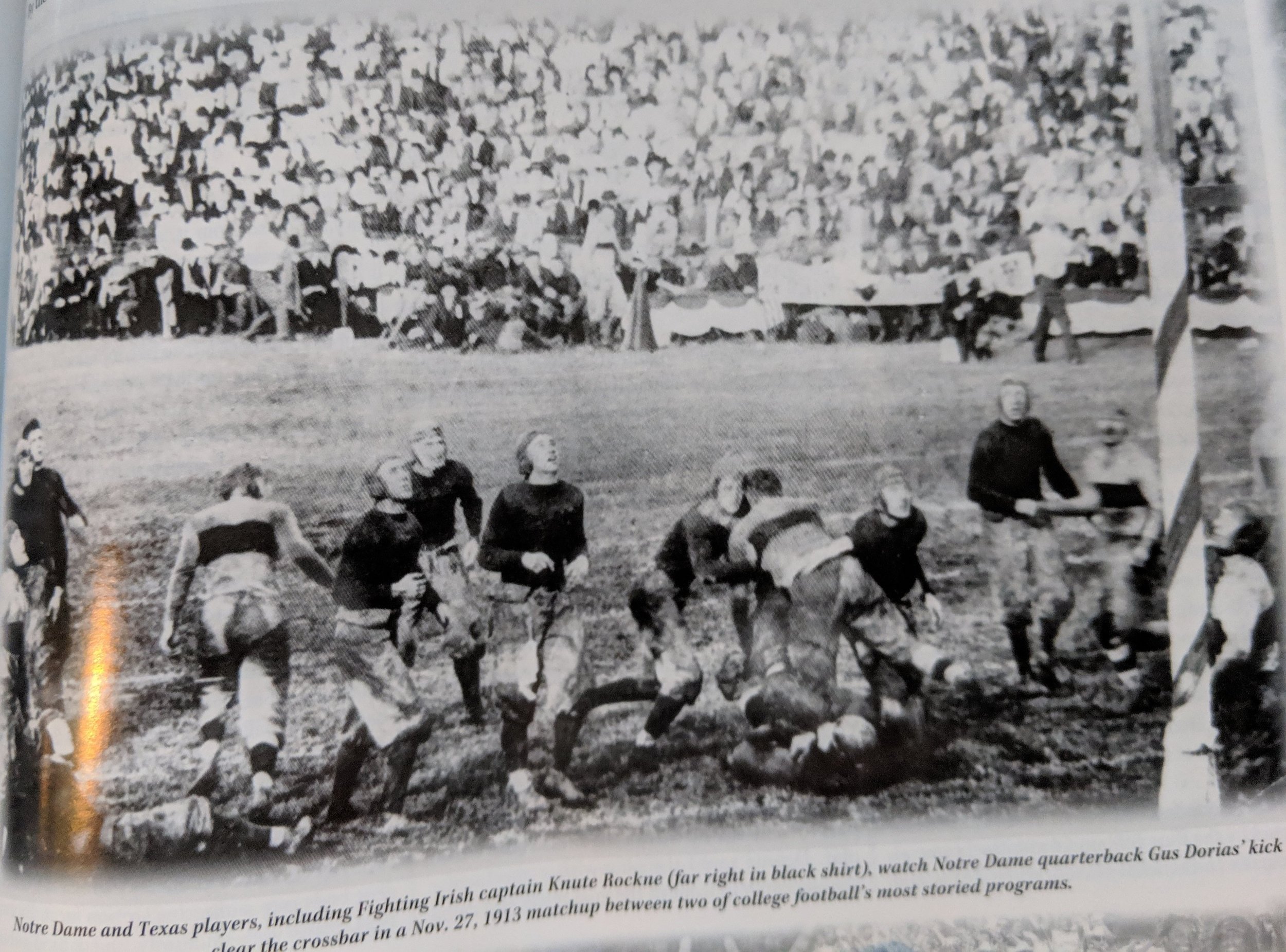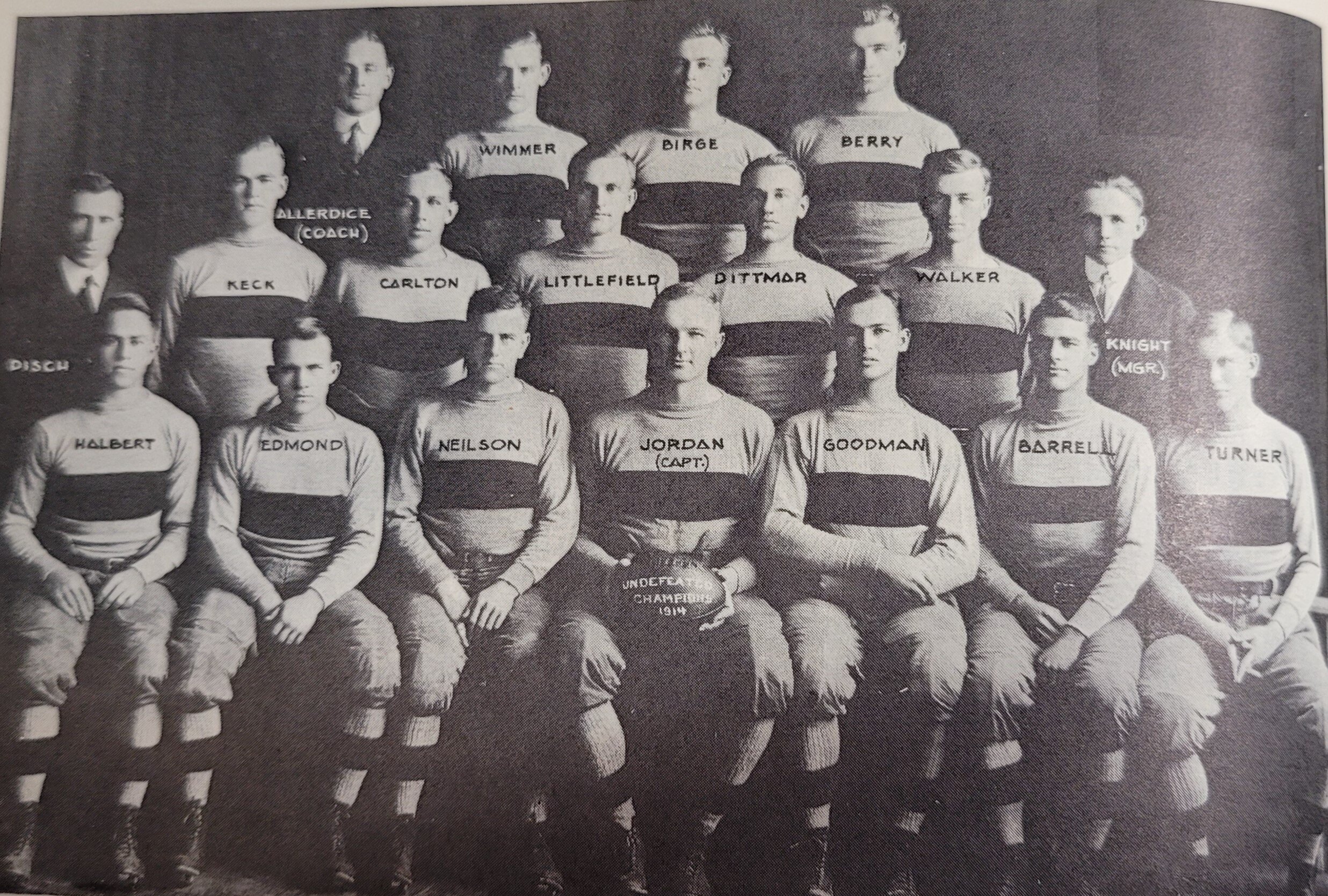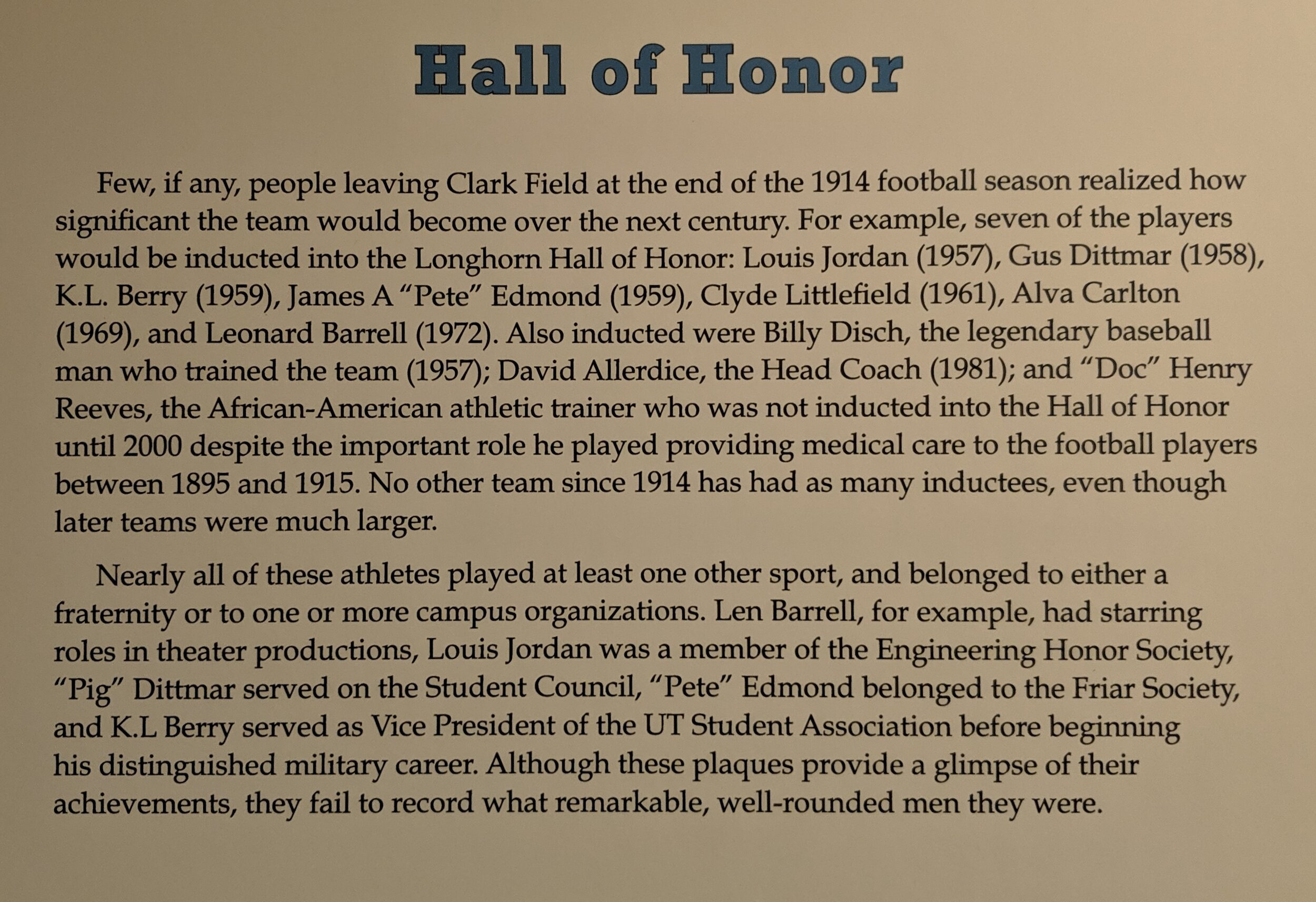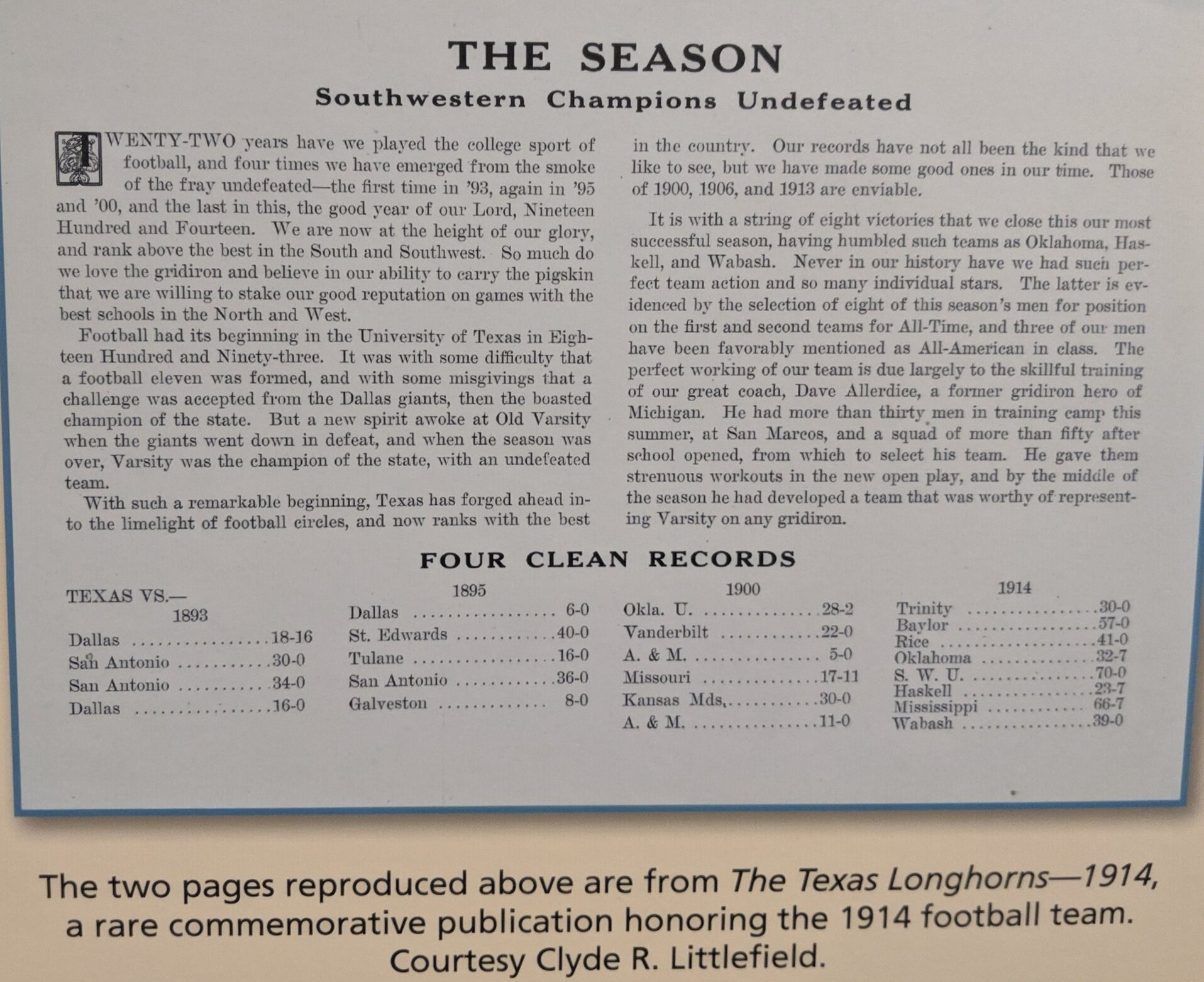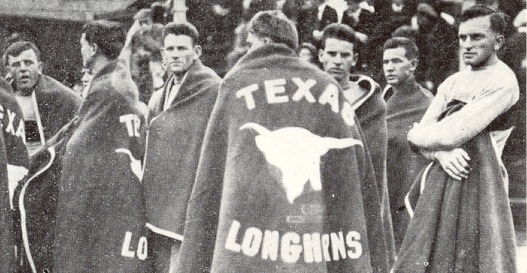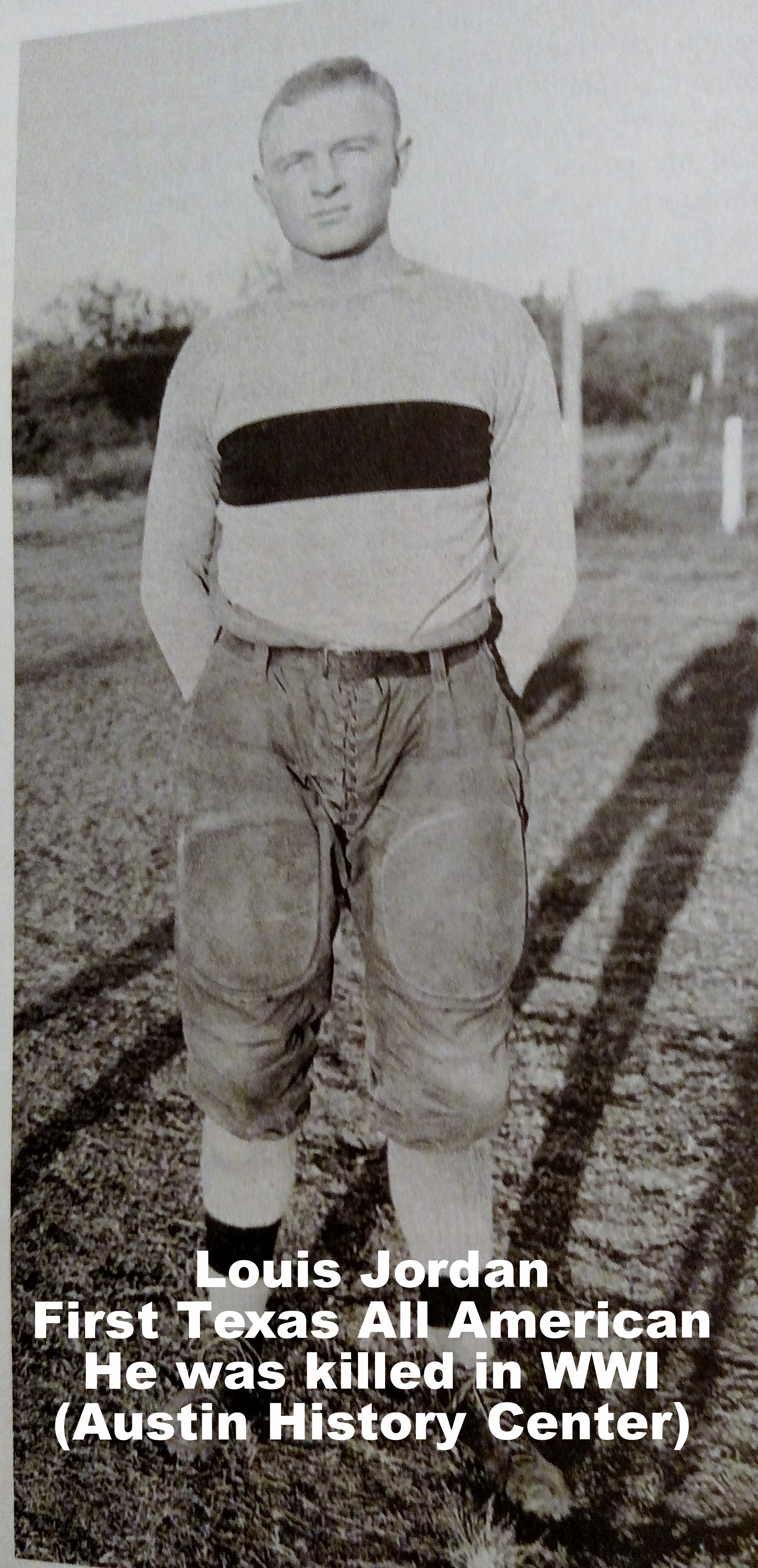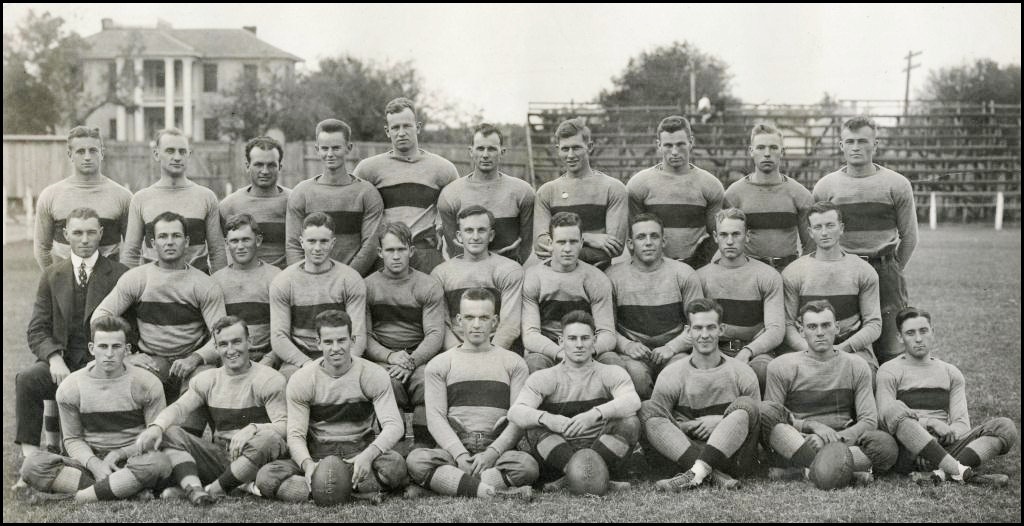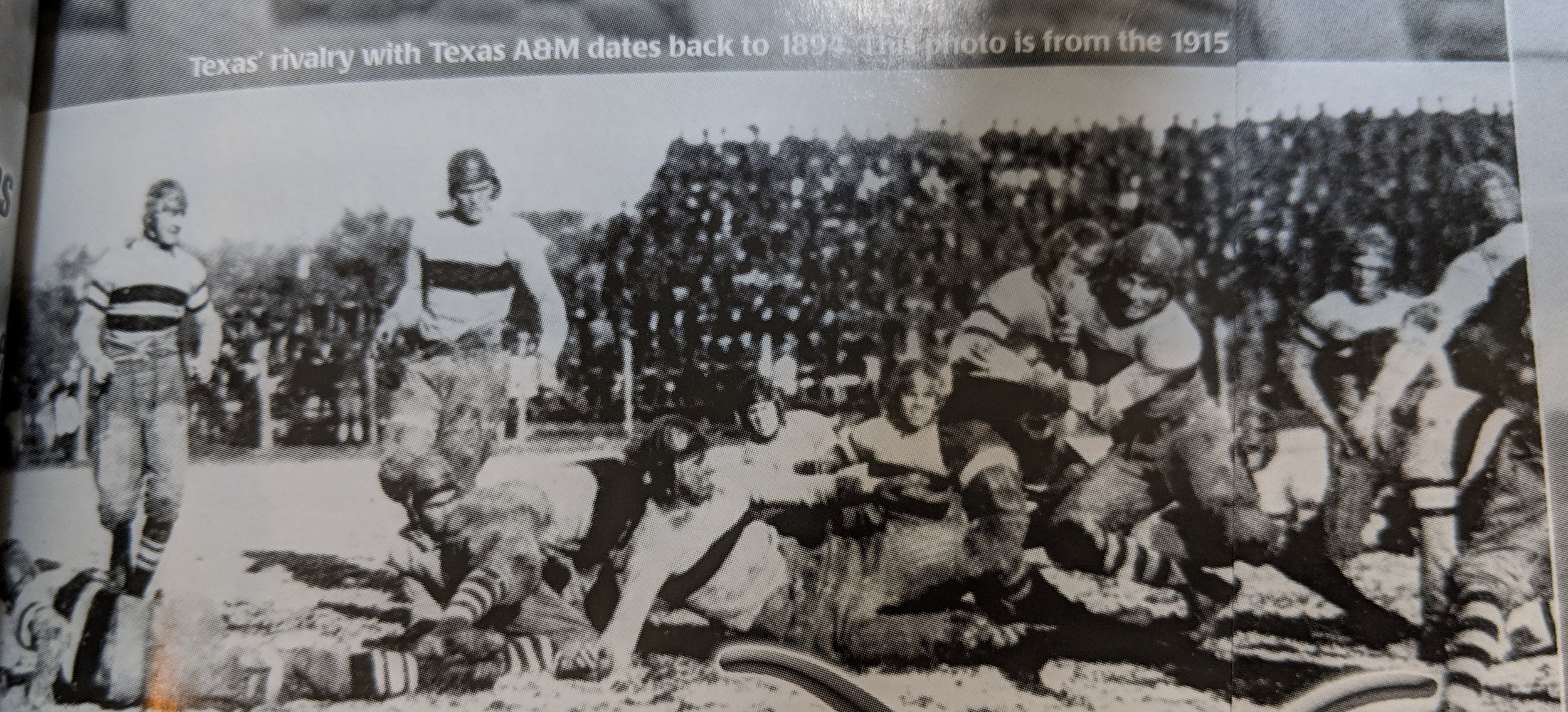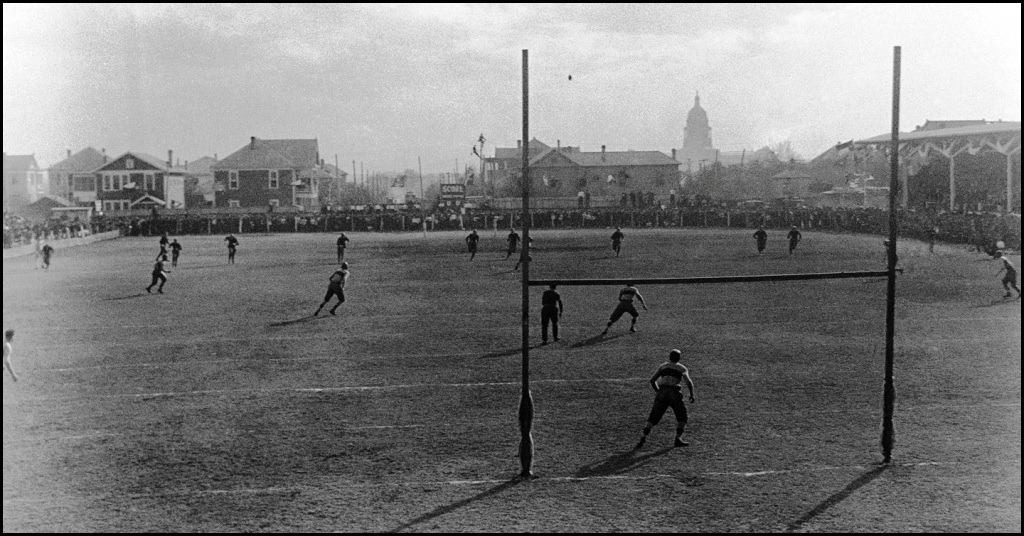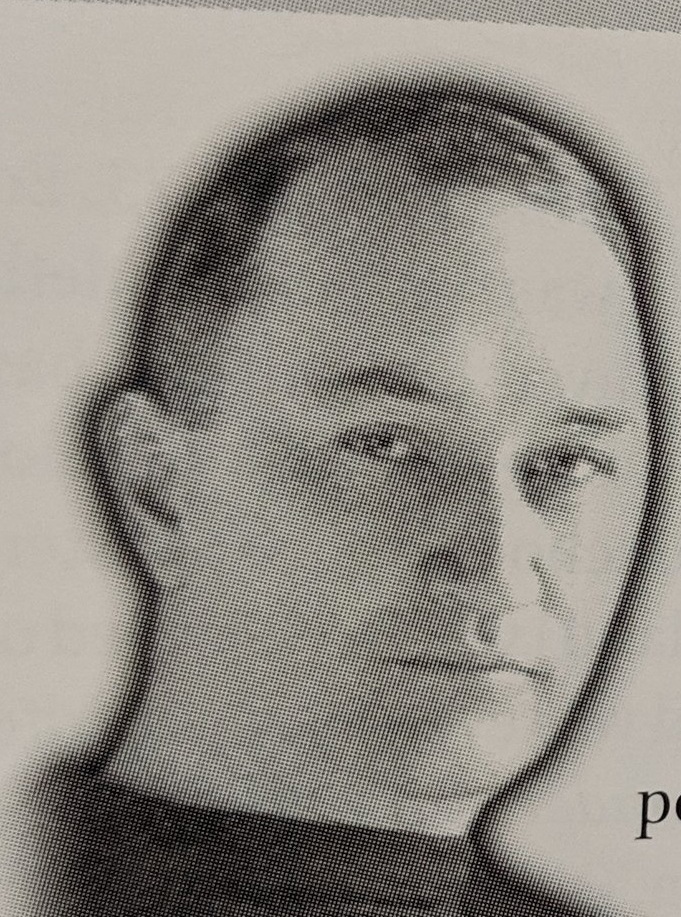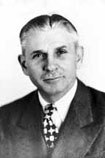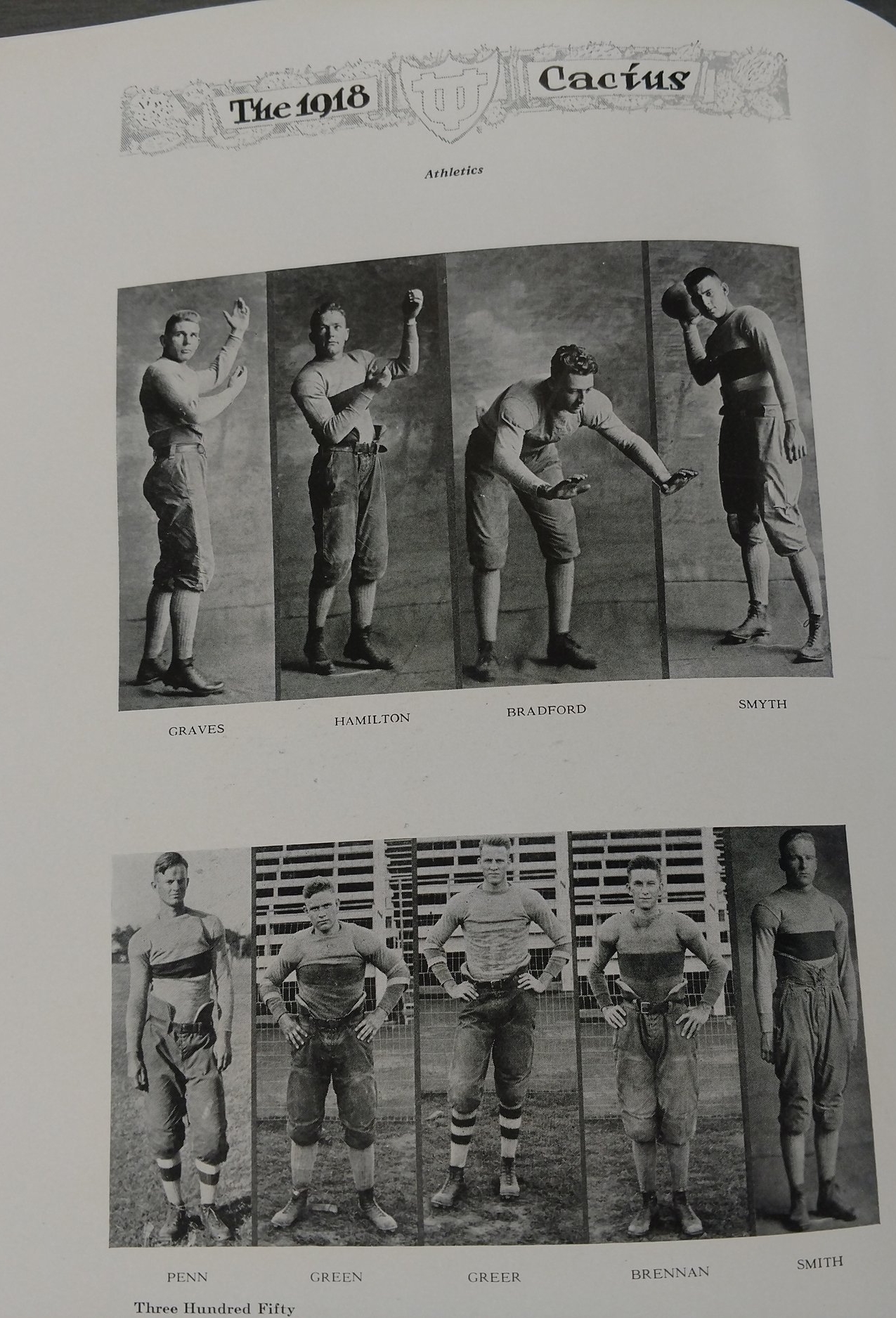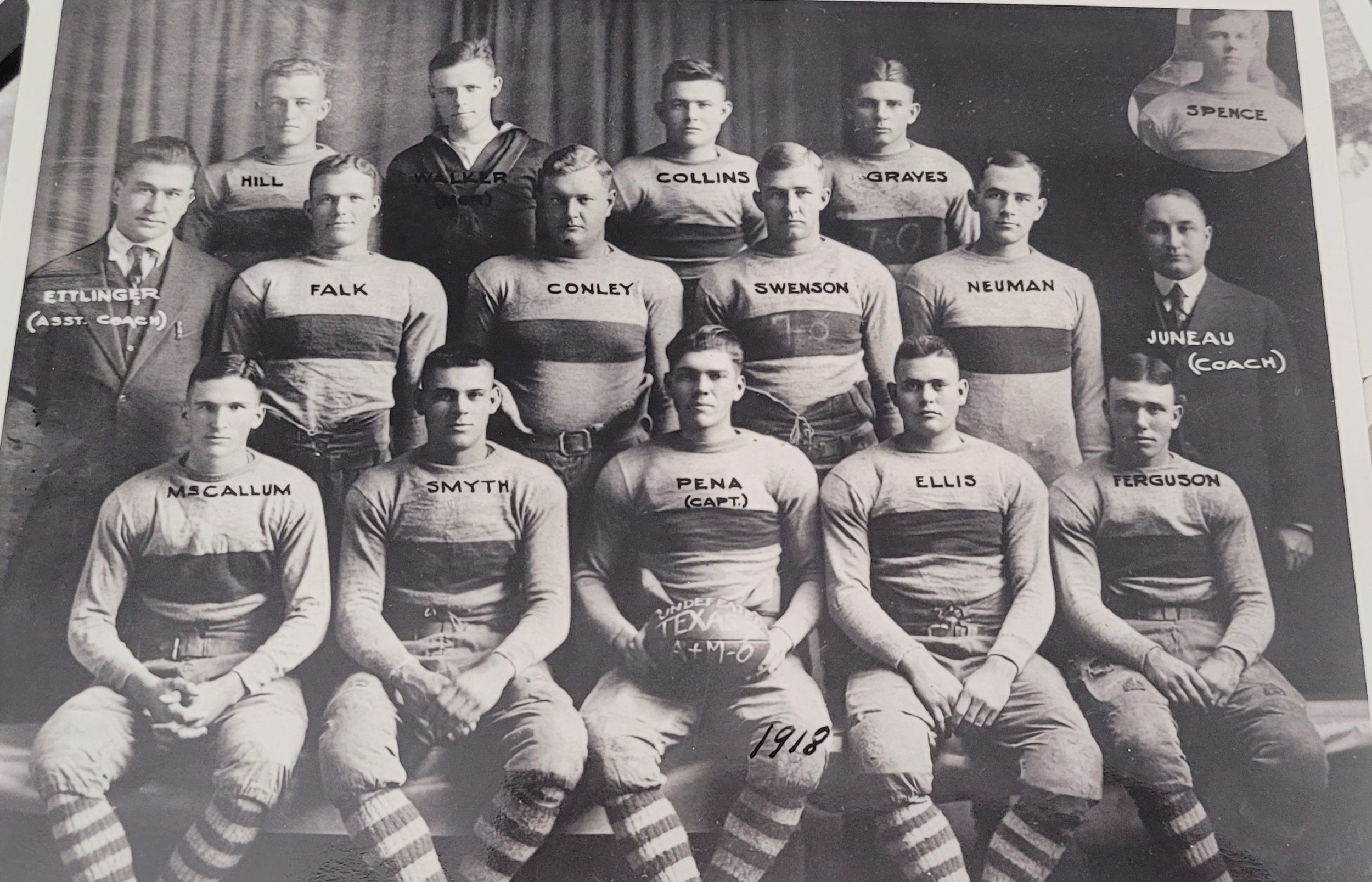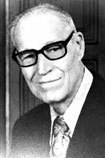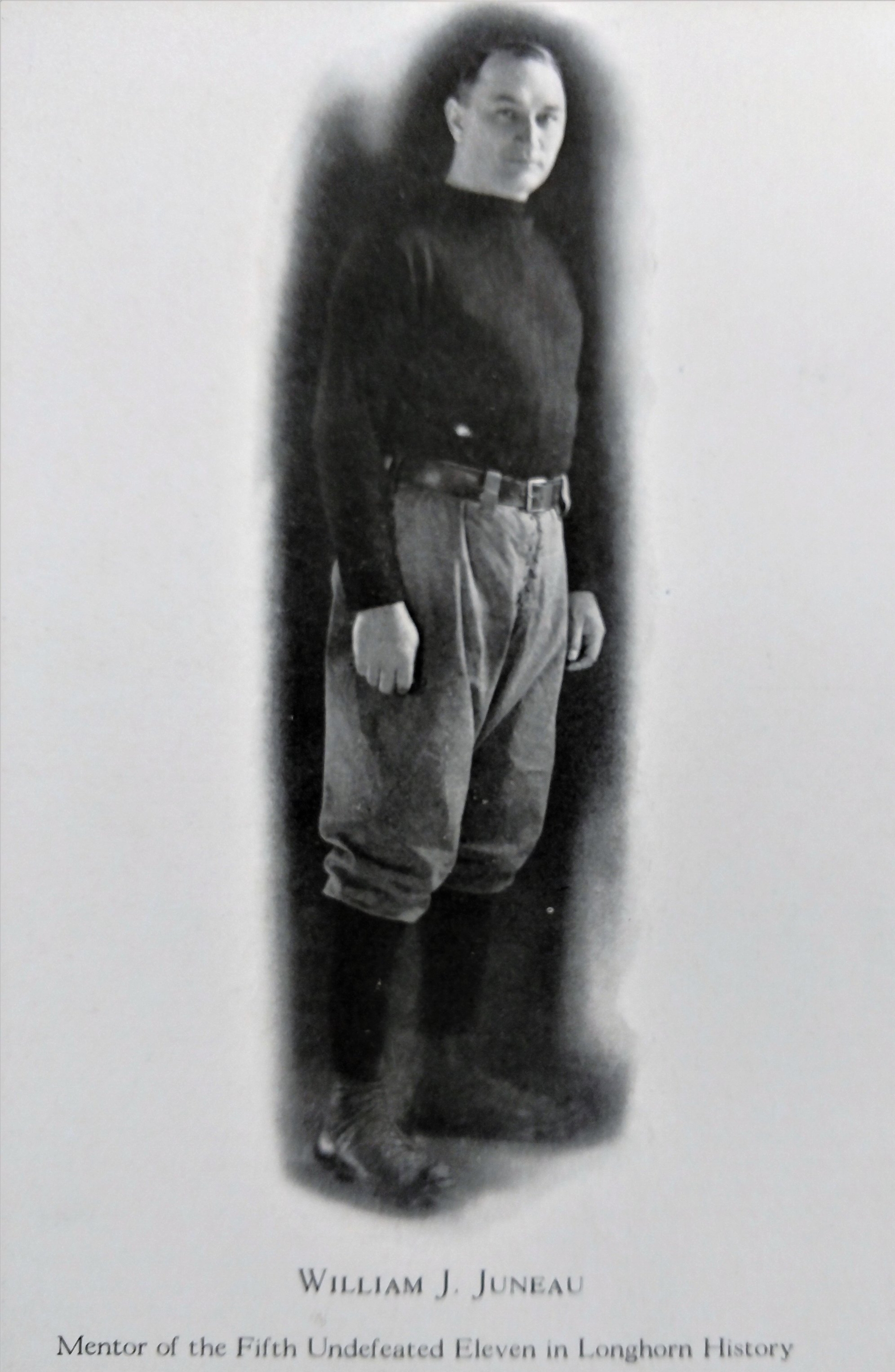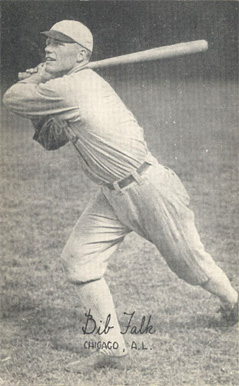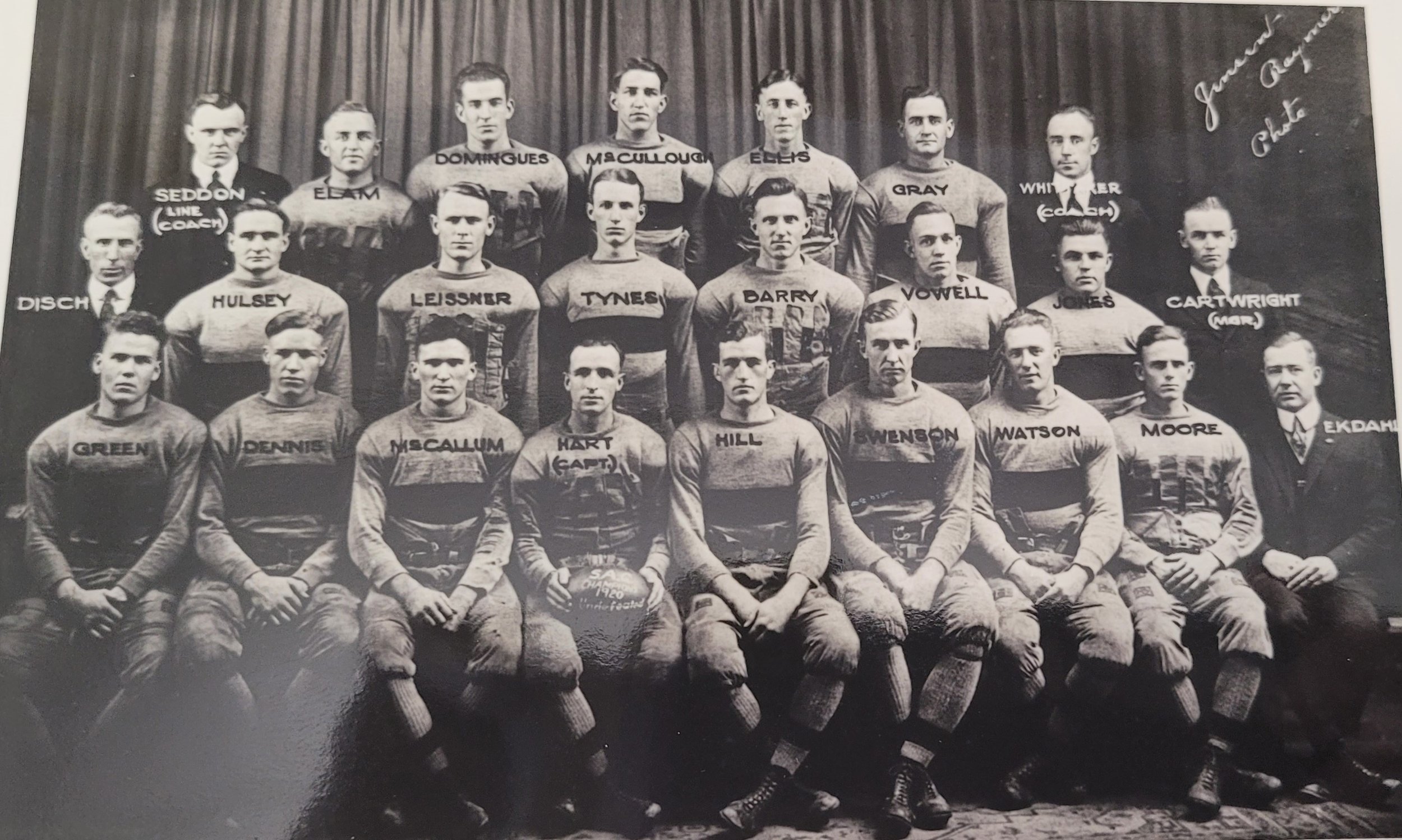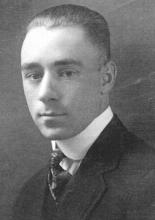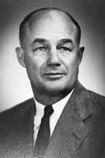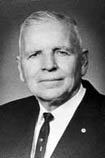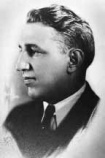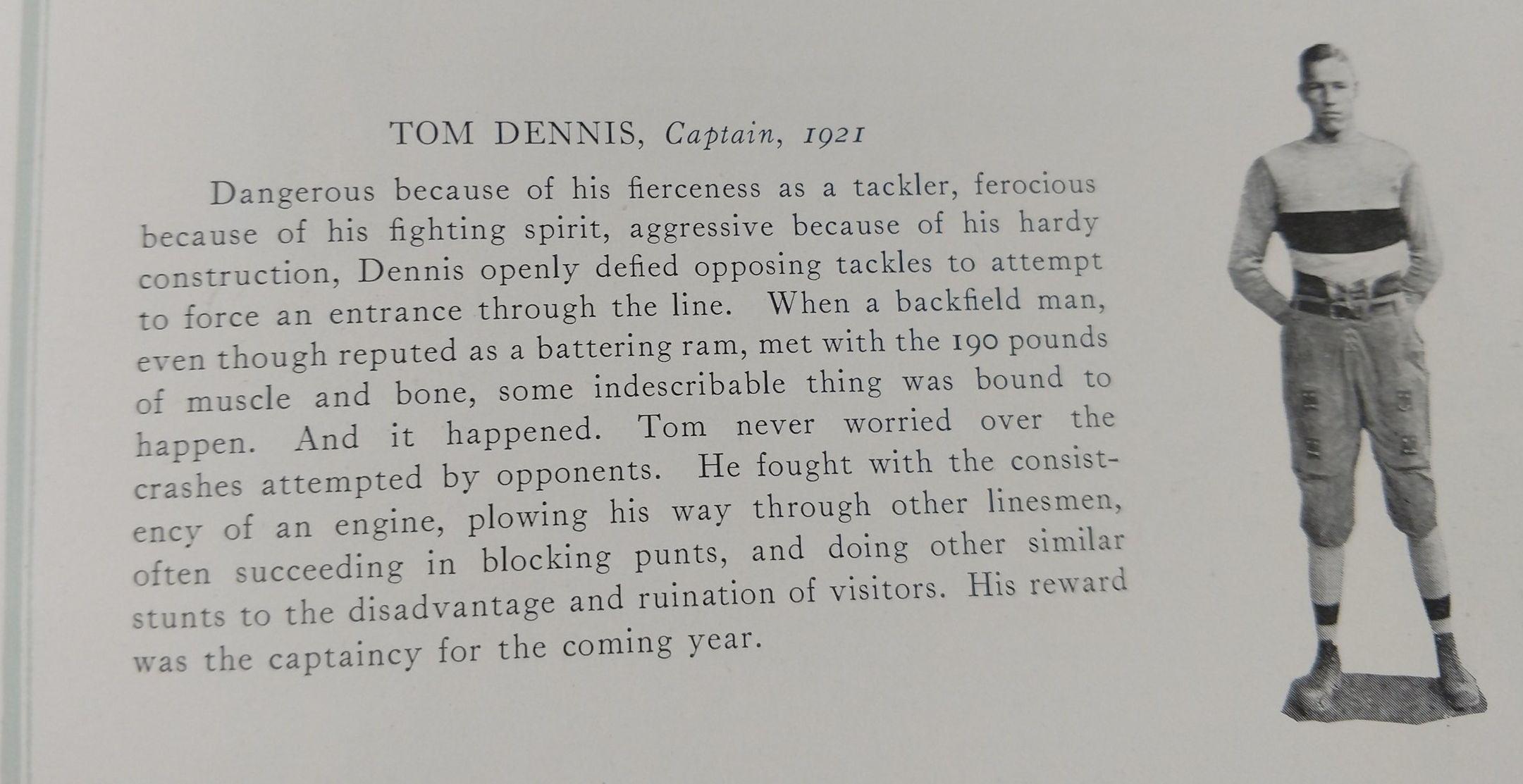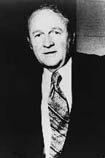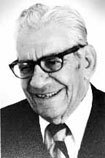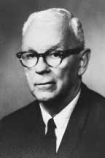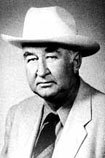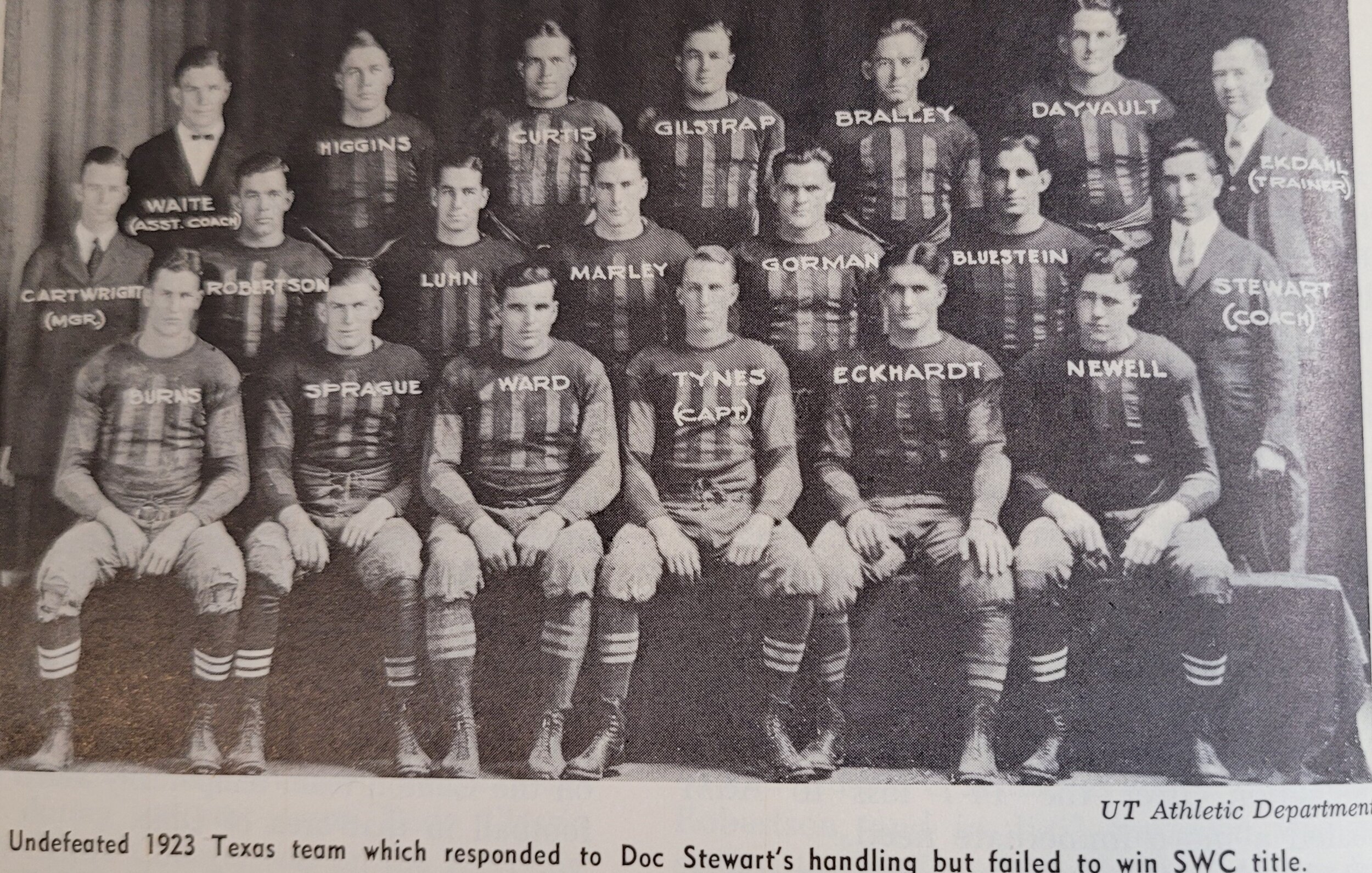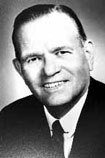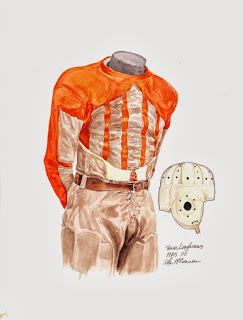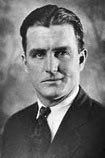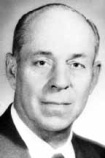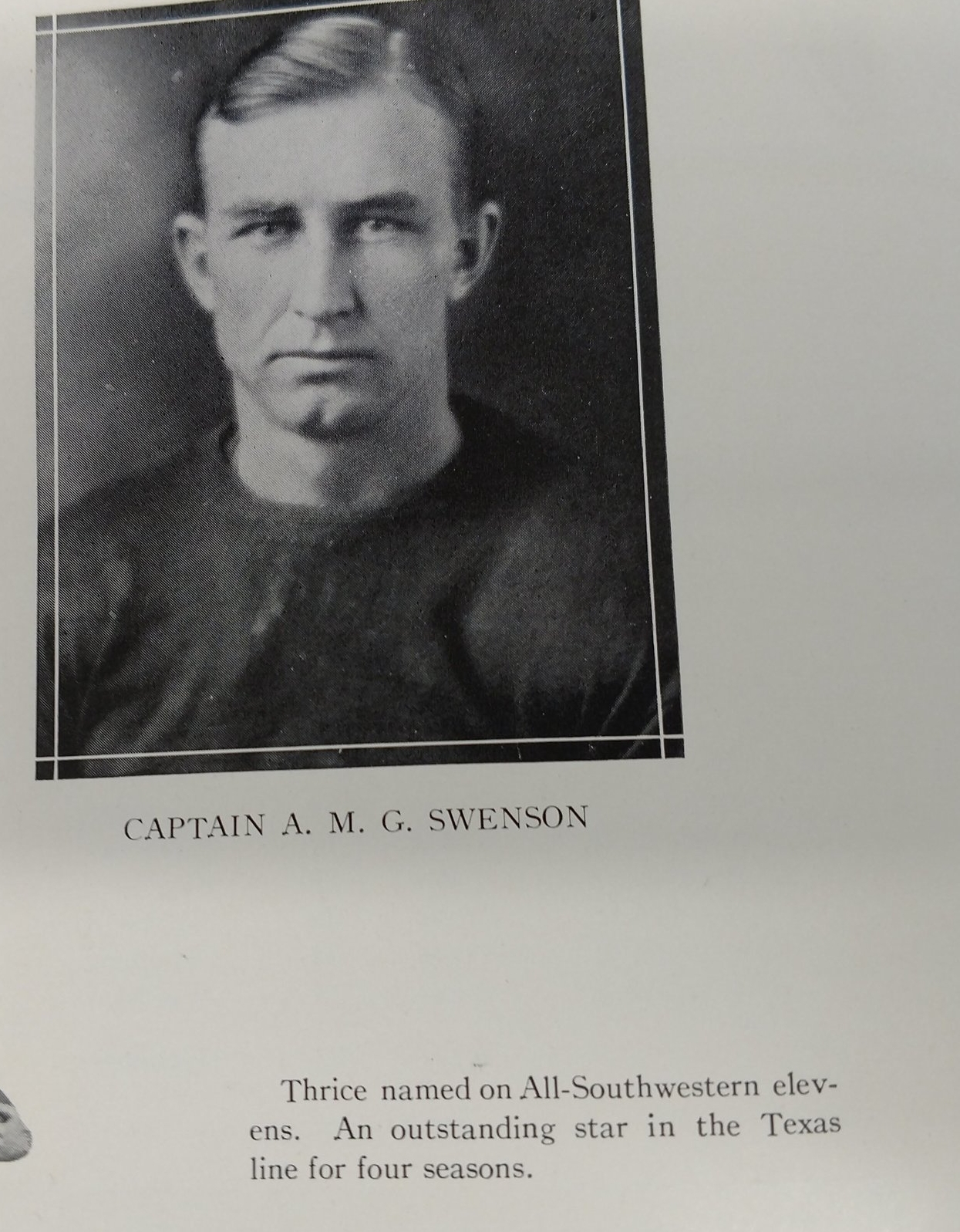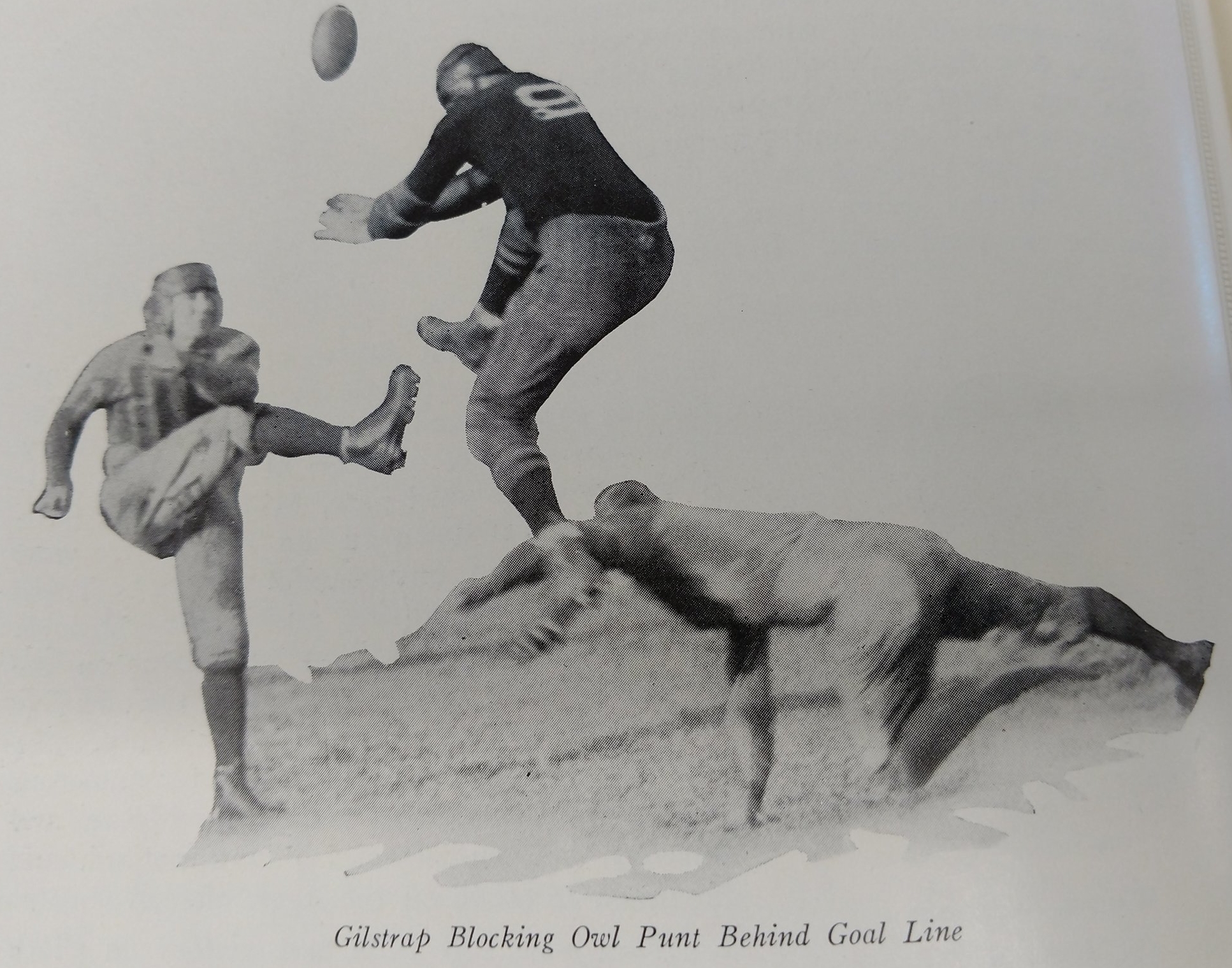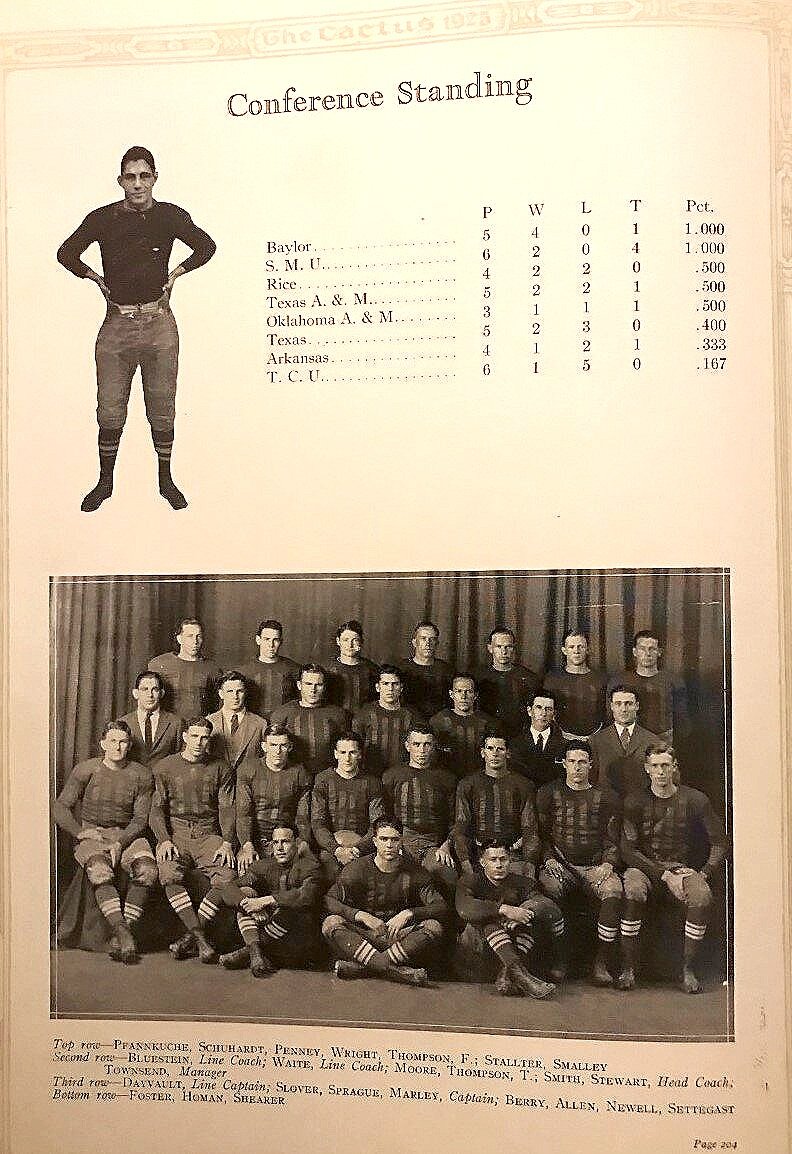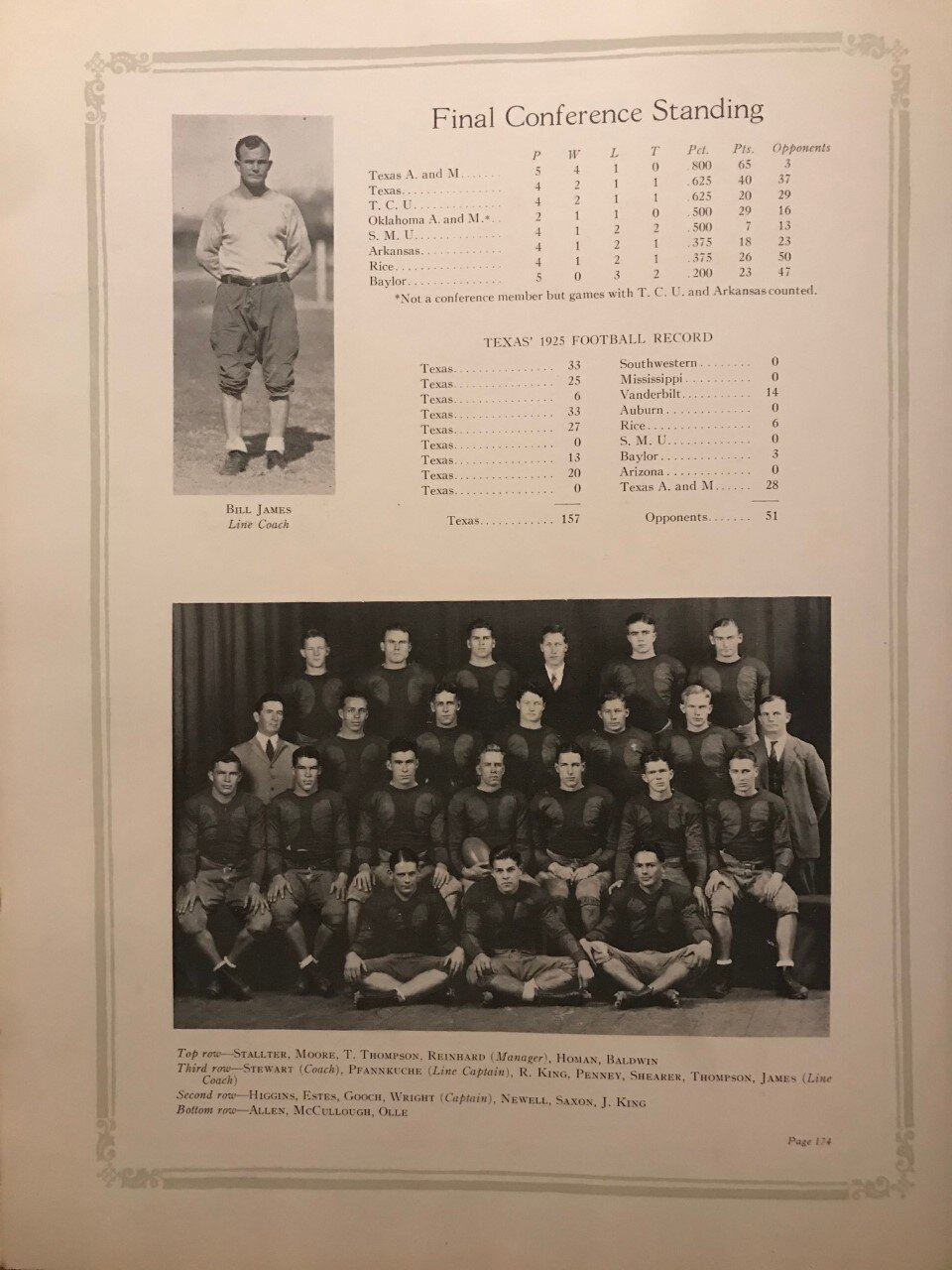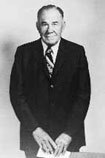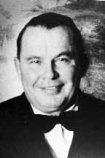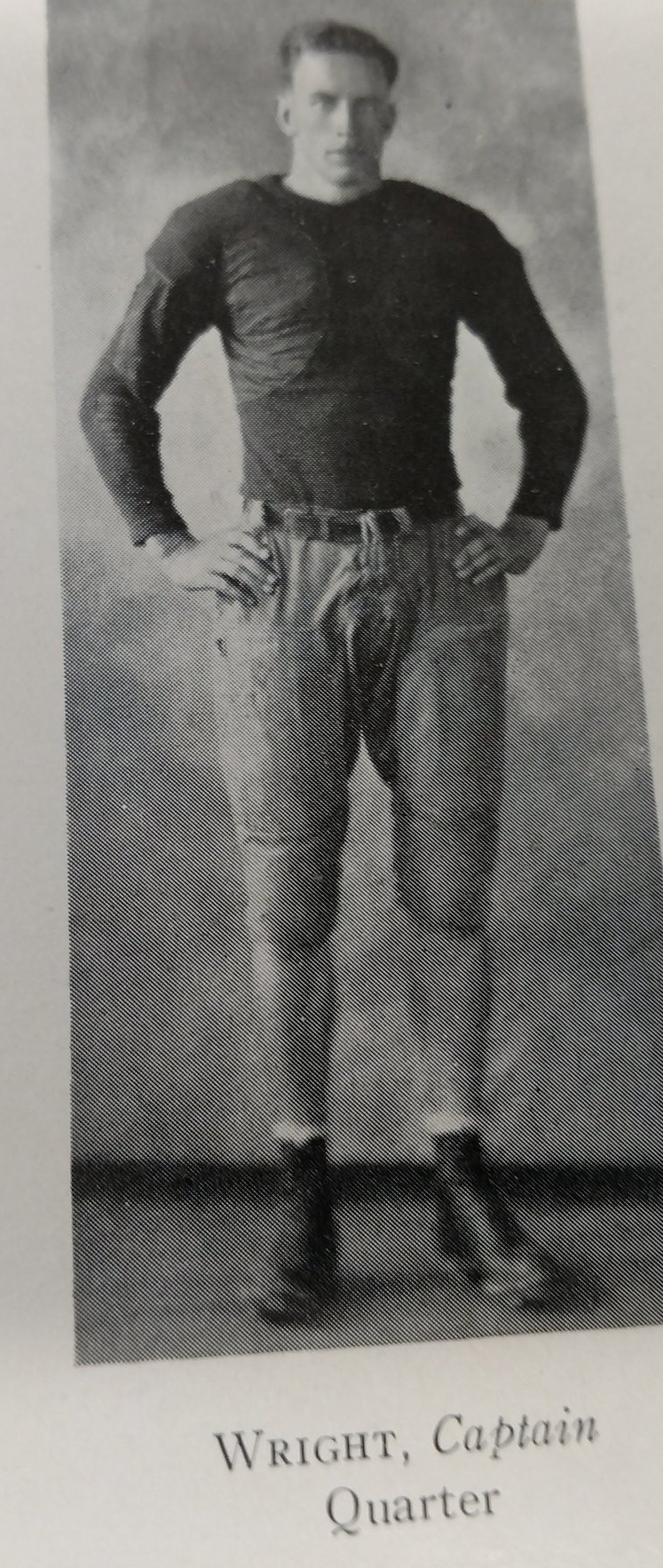9/15/1883 is the day that U.T. first opened with classes starting the next year.
In the book Bowled Over by Michael Oriard, the author says:
Football initially belonged to the players beginning in the 1870s. They made the rules and ran the teams, but by the 1920s, it had become indisputably a coach’s game. As intercollegiate football spread from the northeast throughout the rest of the country, the hiring of professional coaches became necessary. And as it was transformed from an extracurricular activity to a commercial spectacle with promotional value for universities, the pressure on coaches to fill stadiums through winning teams seeded them more and more power and financial rewards.
By 1892 football was already seen as an agent for building a university, and the coach was the key to the success. By the 1920s, Newt Rockney was far and away the individual at his university best known to the public, and like other top coaches in the 1920s and 30s, he could supplement his salary with income from football clinics, off-season banquet talks, and magazine articles.
A history of Texas Longhorns who won high school football state championships
Longhorns have played on state championship teams in 15 different states over the past century.
By Jonathan Wells@jwells1982 Jan 3, 2023, 10:00am CST
Most of Texas’s major colleges and universities fielded their first football teams in the mid- to late-1890s. The first varsity football team at the University of Texas was organized in 1893, and since there were not yet a lot of nearby colleges with teams to schedule games against, UT played most of its earliest football games against squads from big city athletic clubs and town teams. One of Texas’s games in the 1894 season was played against a San Antonio team whose roster was reportedly composed of players from San Antonio High School, the San Antonio Academy, the West Texas Military Academy, and the Mission Athletic Club.
National Brand Building
If national brand building were easy, more universities would pass the consumer brand recall test, but that is not the case. Ask 20 individuals not from Oklahoma to name 10 universities; the majority will name Texas. All Universities dream of reaching the consumer “brand recall” level, but most never will.
Building a national brand requires decades of superior team and individual performance, a supportive university, passionate fans, and positive press.
In addition, brand building requires good recruiting, a competent coaching staff, players with faith in the system, teammate trust and respect, talent, team chemistry, a strong work ethic, and a little luck.
Apparently, the University of Texas has the most "rivals" of any college football team. There are 11 schools who see the Longhorns as their rival.
In 2019, University of Memphis professor Cody Havard, who studies fan behavior, told ESPN that research showed that matchups with the Longhorns were frequently circled on the calendars of other teams' fans.
"We polled college fans and asked them who their biggest rival was," Havard said. "Texas has 11 different teams identifying them as a rival, by far the most in the country."
...
Sarkisian's marching orders weren't just some manufactured bulletin board coachspeak, either. Opponents didn't mind sharing how badly they wanted to beat the Longhorns. In the first Big 12 trip of the season, Texas went to Waco, where the Longhorns had lost in their last two trips and Baylor coach Dave Aranda told reporters there was one consistent message he heard from fans.
"I can't tell you how many times this offseason I heard 'Dave, just win this one game,'" Aranda said that week. "That has been brought up to me multiple times." The Longhorns crushed the Bears 38-6.
Before a trip to Houston, Cougars coach Dana Holgorsen echoed Aranda.
"I've got a lot of comments," Holgorsen said. "Just beat Texas. Don't care if you win any of them, but you've got to win that one. You can go 1-11 and it's OK if you beat Texas." Holgorsen didn't, losing 31-24, and while the Cougars won four games instead of just one, he was still fired at the end of the season even after, in his words, he "took the mighty Texas Longhorns down to the wire."
Iowa State offensive lineman Jarrod Hufford shot his shot as well before Texas traveled to Ames to play the Cyclones on Nov. 18.
...
The Longhorns have since publicly backed off using "hate" analogies, aware there are bigger issues in the world than football. Early on, there were T-shirts printed with the slogan, but no more.
The List
Oklahoma,Arkansas,Baylor,Tech,Houston,Texas A&M,TCU,Rice,SMU,Iowa St.,Kansas St.,Kansas
Those who have enhanced the Longhorn Brand through personal actions and team values begin at the link below.
TEXAS TOP 9 BASEBALL PLAYERS (squarespace.com)
According to Wikipedia, Texas Football has been "part" of the National Championship landscape 15 times.
Four times officially accepted by Texas and the NCAA (1963, 1969, 1970, 2005), five times recognized by the NCAA but not claimed by UT (1914, 1941, 1968, 1977, and 1981), and six times recognized as National Champion by some national rating services but not recognized by Texas or the NCAA ( 1918, 1930, 1945, 1947, 1950, and 2008).
The 1961, 1964, 1972, 1983, 2004, and 2009 teams were one lucky break away from a National Championship.
Texas key national football records and other accomplishments:
the 3rd most wins in NCAA history
2nd in the nation in NCAA sanctioned bowl appearances (53) as of 2014
As of 2010 Texas was the only team in NCAA history to post ten wins a year for nine consecutive years (2001-2009)
Texas holds the record for 162 weeks in the top 25 (2000-2010)
First college to use the wing-T and Wishbone
129 All-Americans and 18 players and coaches in the College Football Hall of Fame
In Texas football history, only six men have been associated with Texas as a coach for 20 years. The legendary Clyde Littlefield leads the crowd with 25 years, followed by David McWilliams with 21. Darrell Royal, Mike Campbell, Bully Gilstrap coached at Texas for 20 years and Fred Akers coached for 19 years.
A condensed bullet point history of Texas Longhorn football from 1891-1936 follows. Please go to the "credit" section of this website to view books you can purchase from many fine book stores about Texas Longhorn football or please visit the official University of Texas Longhorn site Texassports.com.
In the beginning, baseball, tennis, track and field, and rowing were the key sports for “Varsity.”
1883
In 1883 there was only one U.T. building on the 40-acre track with 13 professors recruited from the University of Virginia and the University of North Carolina teaching 218 students 50 courses in academics and law.
Professors made note that most of the students caused serious problems for the instructor. Most were Cowboys who walked with a cowboy straddle. These cowboys had a sense that enjoyed picking on the professors.
The first recorded game was on December 4, 1883 against the Texas German and English Academy (Bickler School. It was a rather embarrassing two-goal-to-none loss against a group of high school students. Football, the fashionable sport that could draw 50,000 spectators to a Princeton-Yale game in the 1880s, required a little more time to be accepted in the Lone Star State.
The SWC owes its existence to football popularity in the East and Middle West in the late 1800s. As Kern Tips says in his book Football Texas Style, "it came, "unannounced, unsponsored, almost unnoticed, and in some quarters a little unwelcomed." Rules of the game were formed but largely ignored. Teams were disorganized and brought lousy humor to the game, resulting in many injuries, but the fans and players loved the sport. "These were the years of the more legendary figures ….-men who did improbable things in improbable and unorthodox ways.
1891
Football at Texas started again in 1891 with two teams inspired by Texas students who wanted to emulate the game played by Washington and Lee University in Virginia. Unfortunately, no one attended the games, and there is no recorded history.
1892
After a decade of starts and stops, the University of Texas fielded its first "permanent" football team in 1893. Jim Morrison, Paul, and Ray McLane organized the first Texas team.
In 1892, an Athletic Association was formed; it fielded the University’s first football team. The Varsity yell was inspired. .
The term" 'VARSITY" was derived from "UNIVERSITY." In the state of Texas, students who attended 'VARSITY went to THE UNIVERSITY OF TEXAS, and those who attended "college" went to A&M College. That is why Texas is still known as "THE UNIVERSITY."
1893- 4 - 0 This team was student-organized, student-managed, and student-coached.
There were 7 different coaches during the first 7 seasons.
1893 - James Morrison brought what many thought was “Childs play” to Texas from the East. The two McClane brothers, who had played ball at Columbia University, helped form the first Longhorn 11.
Dr. Charles Edward was the football association president, Prof. George Garrison was V.P. and Albert Lefevre secretary-treasure.
In the team photo Richardson is missing because he was in the hospital recovering from a football injury. Buddy Meyer came to the rescue of Richardson after an illegal hit and stabbed the Dallas player.
The First football Team 1893 - 4-0
Front row, left to right: Dave Furman, Bill McLean, Walk Crawford(manager), Dick Lee, Addison Day; center: victor Moore, Paul McLane, John Philip,; back: Ray McLane, Jim Morrison, Baby Myers, Robert Roy. From the Center for American History, U.T. @Austin D102799
More than a dozen UT students formed a team and took on a ball club in Dallas that had played football for over a decade. The boys from Austin prevailed 18-16 and “Varsity” football began its journey. (The appellation of "Longhorns" wouldn't appear until 1903).
That inaugural season Texas played the Dallas Athletic Club once again as well as the San Antonio Town Team twice and finished with a 4-0 record. During the summer, the Longhorns hired Reginald DeMerritt Wentworth, formerly of Williams College in Massachusetts, as a coach for the sum of $325 and expenses.
Texas this year joined 88 other colleges in fielding a football team.
Austin's population was 15,000. The team’s exhibition game, played before 700 fans, was stopped for 30 minutes while a student rode his horse to town to replace the game ball that had burst. By the end of the year, the Universiti’s 355 students were celebrating an undefeated season.
https://jimnicar.com/audio/2007-the-big-yell/
John Philips's family tree includes Joe Thompson. John is in the center row far right. The Thompson family built the Joe C. Thompson Conference Center on campus, and Joe was on the Board of Regents in the 1960s. He is credited as the very first Life Member of the entire Texas Exes organization.
The University of Texas was 10 years old when the Longhorns played their first official game. It was more like an intrasquad game with a 30-minute delay while a fan rode his horse to town to purchase a football to replace the busted game ball. The Texas University magazine said the game was a tie, but the Austin Daily Statesman recorded a victory for the varsity 10-2.
A profound statement paraphrased and adapted for The TLSn site from the book “Our invaded universities” by Ronnie Dugger.
“Thus, the Horns began to pursue shimmering excellence by scattering the mediocre teams while searching for the Holy grail that defined the best in sports. Noble goals were set in our better moments to be perfect and have it all good and right, but we lost sight and instead smashed things on our way, making memories.”
Kern Tips says Texas was the first educational institution to add a semi-organizational format to a sport known for mass mayhem. The players were "grim and unsmiling." The appreciation of team play was non-existent in this era.
Texas went from 1893- 1932, with 40 consecutive winning seasons.
The 1893 Dallas game started the Thanksgiving Day football tradition.
Lou Maysel says that In 1893 the players were a bunch of skinny students averaging 162 pounds per man on the line and 145 pounds in the backfield. “Uniforms included lightly-padded breeches and homemade canvas vest tightly laced over long-sleeved jerseys. Heavy stocking and shoes with homemade leather cleats completed the battle gear of that day.” Sometimes the athletes wore "laced moleskin uniforms without any padding and black stockings. Thick hair and small beanies were the headgear of choice in 1893.
In the game one athlete swallowed a tooth, another was kicked in the stomach and had to leave the game. Another had his eye injured, and another broke a finger. The Longhorns implemented a “killing code” to get revenge for the opposing team’s dirty play. Three on the Dallas team were hurt in a 10-minute span, forcing Dallas to call for a truce and no more rough stuff.
The UT football team played four games, a pair in the fall and two more in the spring. At first, they were called "the new "eleven" who would have to say "Dallas Boys" to gain credibility. The Dallas Foot Ball Club claimed to be the best in the state.
Harrell & Wilcox, a clothing goods store, loaned the VARSITY $100 to cover food and lodging. The ticket agent for the International and Great Northern Railroad, Peter Lawless, furnished the round-trip tickets for the team.
Once the team arrived, there was great banter between the two teams. Texas players lit up cigars and boasted of their exceptional skills. The game was held at the Dallas Fair Grounds, and a record 1200 fans showed up for the game.
It was a tough and spirited match. A referee quit at 1/2 time during a bicycle race because he was tired of being harassed by both teams. Texas won 18-16, and the city of Dallas was stunned. "Our name is pants, and our glory has departed," growled the Dallas Daily News. The UT club would go on to a spotless record and earn the undisputed boast of "best in Texas."
Patriotism had a new calling, and UT football was the rallying cry. 1893 proved that UT was ready for the big time in football, baseball, tennis, and rowing.
First football game: Texas 18, Dallas U 16 in Dallas (11/30/1893)
First home football game: Texas 30, San Antonio at Varsity Athletic Field (became Clark Field) (12/16/1893)
The team moves from Hyde Park to Waller Creek. Texas' first uniforms are orange and maroon, but the Maroon is dropped because the word was associated with a body odor, so the colors were changed to gold and white.
Jim Morrison (a tackle) makes the first touchdown.
No political correctness in 1893. Newspaper headline after Texas beats a San Antonio team reads:
"The Varsity Team Wipes Up the Earth with the Tamale Eaters." Bob Myers, a 210-pound Varsity center came to the rescue of Billy Richardson, who was kicked in the head by a Dallas player.
It was a game that combined both rugby and soccer with soccer rules prevailing. The game was 90 minutes with 45-minute halves.
A field goal is worth 5 points, a touchdown is worth 4 points, and a point-after attempt is worth 2 points. Halves are 15 minutes, and the field is 110 yards long with no end zone. A new first down was earned if the offensive team made 5 yards in 3 plays.
1894- 6- 1 Coach Frank Wentworth -first paid coach at $325 a year plus expense a extravagant amount at the time.
With a 6 -1 record, Wentworth was fired. Sports writer Lou Maysel said “The critical and suspicious nature of fans manifested itself early in the school’s football history.” That is -WIN OR GET FIRED.
First 6 games the score was 191-0 but beaten by Missouri 28-0 .
It wasn't until 1894 that actual intercollegiate football was born in the Southwest. The team for 1894 is formed by Albert Lefevre, the secretary-treasurer of the U.T. Athletic Council. Two lawyers (A.S. Walker and Thomas Gregory) led a subscription drive to hire a “trainer” as coaches were called back then. Coach Wentworth was hired for $325 for the season, and another $100 was contributed to purchase orange and white jackets, pants, striped stockings, and several rubber nose guards.
Team colors are changed to orange and white. Before the season started, the flying wedge was outlawed except on kickoffs.
In 1894 the Texas A & M and Texas series began. The "Bryan's" ( A & M ) against the 'Varsity" (Texas) at Clark Field. Varsity beat Bryan’ 38-0.
I visited the LBJ Library looking for text or photos to add to the TLSN history of Longhorn sports website. I was not disappointed. The image depicted in the LBJ Library states, "This mask was used from the 1890s thru the 1920s."
It took me a few seconds to assimilate the image's import. Staring back at me on a wall was a photo of a football game played in 1896. Some football players wore devices to protect their nose and mouth, and what appeared to be helmets. Even as an amateur Longhorn sports historian, I knew this photo was significant.
History explains the illusion of the helmet depicted in the photo. During this era, the players grew their hair longer and wrapped bandages around their heads and over the tops of ears. This process pushed the hair up into a mop adding sufficient cushioning to prevent severe injuries.
But what about the mouth and nose protector? If players in 1896 were smart enough to protect their nose and mouth, why did the players from 1930 through the early 1950s refuse to wear them? 1895 football player, Walter Fisher and Hall of Honor inductee said “the communal rubber nose protector the players wore wasn’t worth a darn. “those louts on the other team would get ahold of it, pull back and turn it loose.”
I have never seen one image of Longhorn football player using a rubber nose mask to protect their nose and teeth, but there is an image in the LBJ Library that states this mask was used from 1890's thru the 1920's.
The first game was at Clark Field, pitting the University of Texas Varsity against the Texas A & M “Bryan’s. Texas won the game 38 -0. The Varsity was so proud of their victory that they sent a letter to the newly formed team at the University of Arkansas and challenged them to a game in Austin. Arkansas accepted and traveled six days to play the game, losing 54 to 0. It is hard to believe that two hard-fought and colorful series started in 1894 lasting almost 100 years. Arkansas did not beat Texas for the first time until 1933.
Missouri handed the Varsity its first defeat 28-0. Fans were angry at the players and the coach. Coach Wentworth quit, and many players cut their hair to conceal their identity, while others left school and never played football again.
1895 - 5-0 Record - Coach Frank:” Little” Crawford was hired away from Nebraska but returned to Nebraska after the 1895 season.
He claimed to have played for Michigan State, but no records confirm.
After winning the first four games 88-0, Crawford skipped town and went to Mexico.
Texas beat the first 5 opponents 96-0, directed by Longhorn Hall of Famer Walter Fischer.
Captains were Ray McLane and Wallace Ralston who refused to wear a striped jersey choosing to wear a black one.
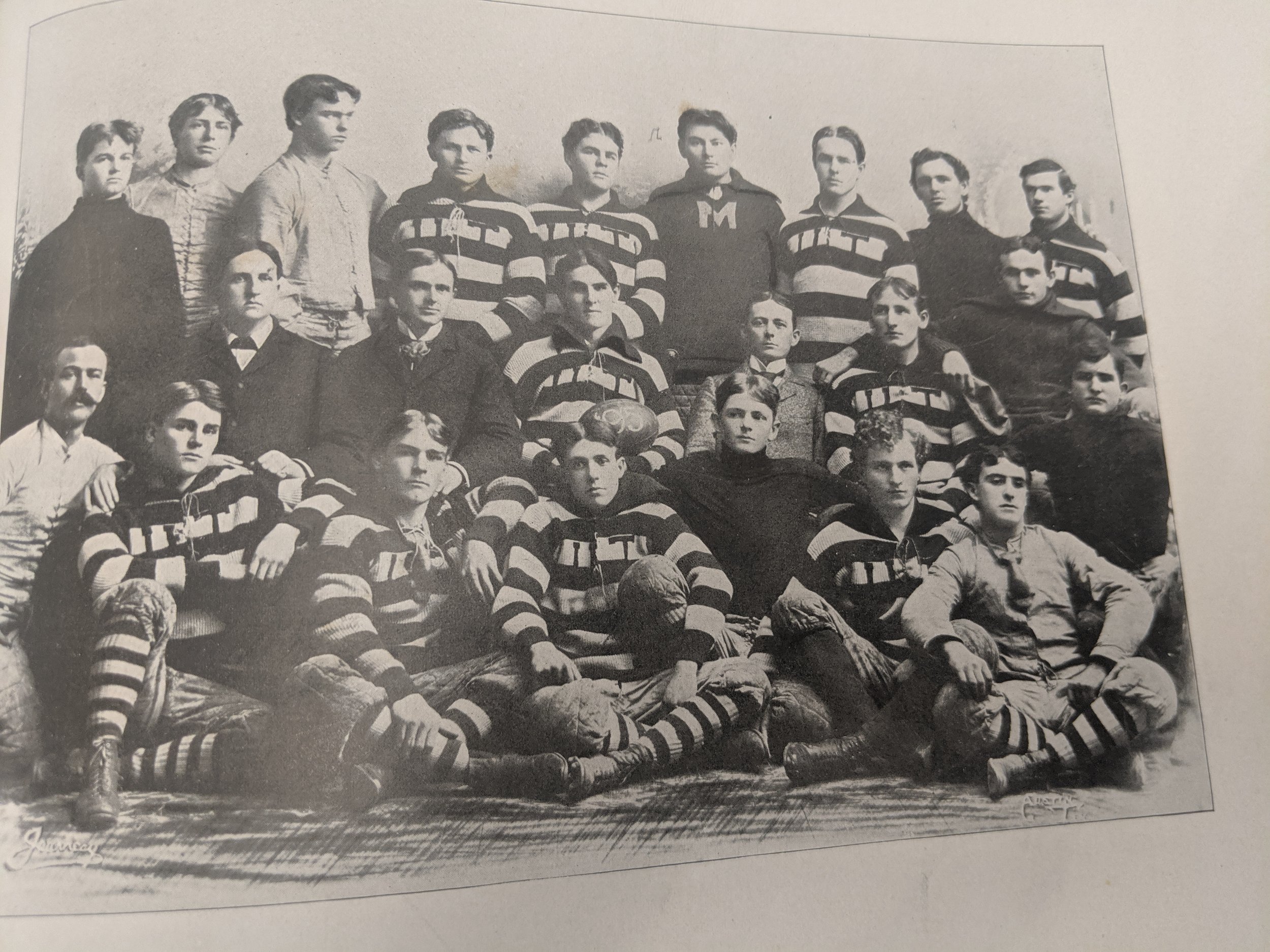
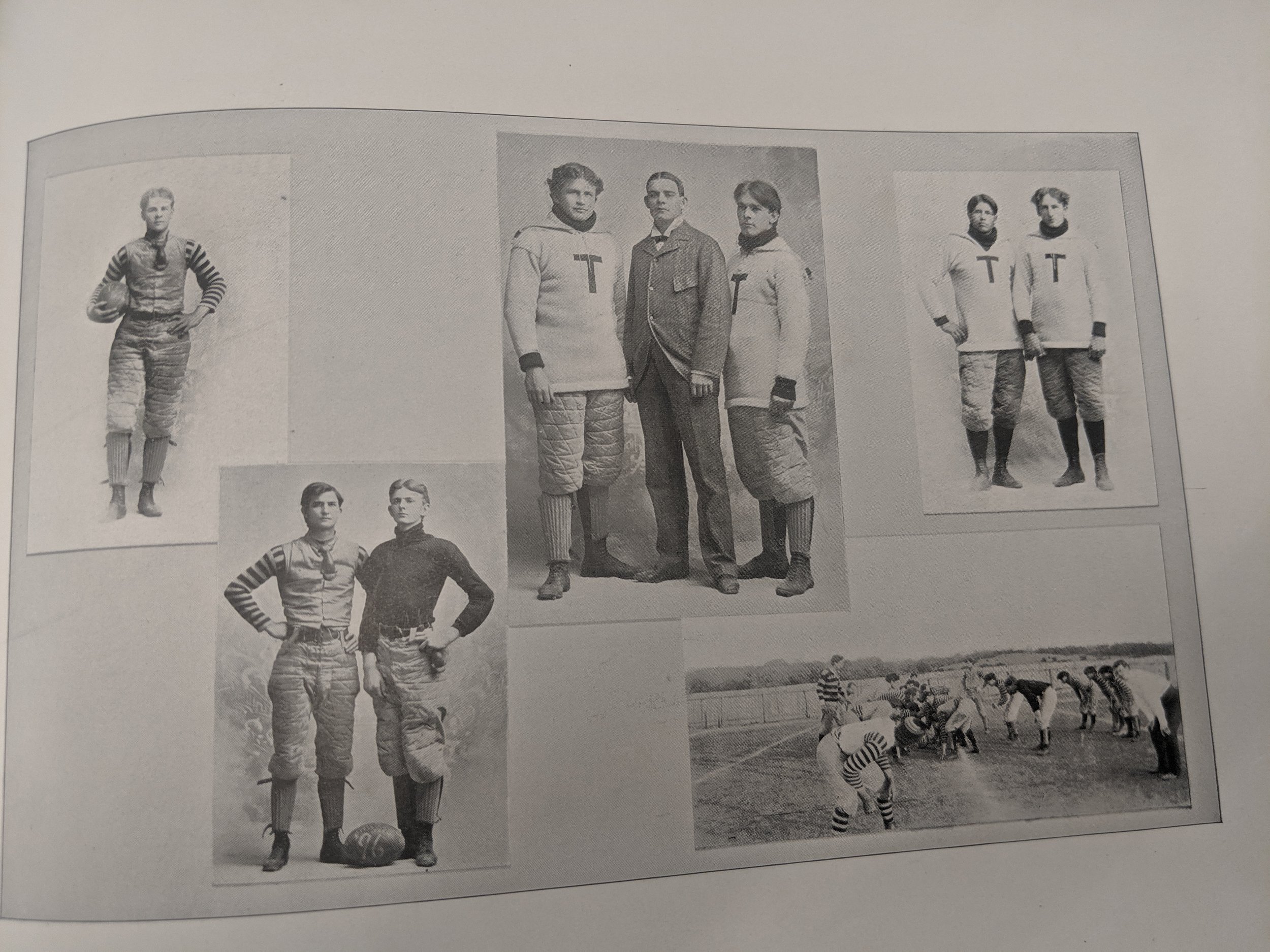
Longhorns join the Southern Intercollegiate Athletic Association. Eligibility rules were implemented to correct the evils of baseball, the dominant sport. To be eligible, you had to be a student carrying a 10 hour load toward a degree.
Coach Crawford’s team still holds the UT record as the only team undefeated and unscored on. They hold the season record for no PAT, fewest points allowed, and fewest touchdowns allowed.
Because the Varsity waited too late in the year to schedule games, all the major college’s schedules were booked, so the competition's quality was suspect this year, with only one bona fide college team (Tulane) booked for the season. The other games were against town teams and the YMCA.
Varsity was ended its season undefeated, untied, and unscored on.
The UT History Corner discusses the uniform.
"Recommended by Spalding’s Official Guide to Football, then the sport’s most trusted reference. Along with a long-sleeved jersey, according to the Guide, “the ordinary player should wear a canvas jacket … home-made or purchased … and lace-up in front so that it can be drawn quite closely.” Trousers were to made of some “stout material” and well-padded, “quilting in soft material over the knees and thighs.” Long woolen stockings were often covered with shin guards, and leather shoes – “kangaroo skin preferably” – which were provided with a replaceable leather spike to prevent slipping, completed the outfit. Naturally, Spalding’s sold the equipment for a nominal fee.
Giving my head with hair .. Long beautiful hair
A glaring omission from the uniform was something to shield the head. While a few players strapped nose guards over their faces, most went without any protection. Instead, they grew their hair longer, and at game time, wrapped bandages around their heads and over the tops of ears (to prevent ears from being pulled and torn), which pushed the hair up into a mop. The mat of hair was supposed to be sufficient cushioning to prevent severe injuries."
The colors are orange and white.
Of course, gold and white weren't official, either, and only lasted a couple of years. Members of the student-run UT Athletic Association wanted a more "masculine" color, and in 1895 orange was paired with white once more. White uniforms, though, were difficult to clean after a hard-fought victory on the football field. In 1897, to save cleaning costs, the Athletic Association opted for a darker color that wouldn't show dirt as quickly: maroon.
For the next three years, UT football, baseball, and track uniforms, along with letter sweaters, were orange and maroon. This created more than a little controversy, especially among the alumni. The Cactus Yearbook, published by the Athletic Association, added to the confusion which listed the University colors as either gold or orange, or white. The appearance of the 1899 Cactus made matters worse. It suddenly declared the University colors to be "Gold and Maroon," which just happened to be the same hues used for the yearbook's cover. And all the while, students at the University's medical branch in Galveston wanted to throw out the double colors in favor of a single one: royal blue. In 1899 a UT fan would have found his compatriots sporting all shades of yellows, oranges, whites, reds, maroons, and a few in blue.
After considerable discussion, the Board of Regents decided to hold an election to settle the matter. Students, faculty, staff, and alumni were all invited to send in their ballots. Out of the 1,111 votes cast, 562 were for orange and white, a majority by just seven votes. Orange and maroon receive 310 votes, royal blue 203, crimson 10, royal blue, and crimson 11 votes, and there were a few other colors scattered among the remaining 15 votes.
From the beginning, the Longhorn tradition demanded success. Texas first fight and spirit song said
1896- 4-2-1 Record - Coach Harry Robinson
Coach Robinson was hired away from Missouri after his team beat Texas 28-0. After the season, Coach Patterson (Missouri) and Coach Robinson took the two teams on an exhibition tour of Mexico. An excursion that was supposed to last one week lasted one month. This resulted in both universities’ and the players' parents’ scorn that education took a back seat to sports. Coach Robinson wisely left after the season.
Top row- Captain House, Cole, Ralston, Maytuggy, Homar, Caperton, ? Davenport - middle row - Moores, Pefier, Coach Robinson, Snakey Jones, Mgr. Slaughter, Brady, Schreiner- bottom row - Leavell, King, Acree, Clark , Parker, Wortham
1896- Snaky Jones was the first man to star in 3 sports at Texas. He and Ray McLane were co-captains of the football team. Snaky is a Member Of UT's only Unbeaten and Unscored Team in Texas football history and is captain of the first baseball team.
The uniforms evolved during 1896 and 1897. The pants were made with heavy drab moleskin, with the hips and knees heavily padded with fine curled hair and thighs with light padding. Shoes were kangaroo leather with cleats on the heel and toe. Shin guards were made of canvas, moleskin or leather. The jacket was made of heavy duck or canvas, and the nose guard of rubber. The players wore stockings of several colors
The Horns moved its games from Hyde Park to a field near Waller Creek.
First game ever for Varsity outside of Texas is against Tulane.
Walter Schreiner HOH- I believe he is the first Longhorn Hall of Honor inductee. He was the 154-pound captain of the team and, I believe, is the only Longhorn who received 5 letters in one sport.
Texas joins the Southern Intercollegiate Athletic Conference.
The yell titled “Rattle de Threat Yell” was created it went
rattle de tthrat, de thrat, de thrat!
rattle de tthrat, de thrat, de thrat!
Longhorn ! Cactus Thorn !
Moooooooooooooo Texas!
1897- 6-2 Record Coach W.F. Kelly
left to right - Leavell, Bethea, Hart, Pfeiffer, Blacklock, Kelly (coach), Wortham, Kelly, Parker (Capt.) Battis - mascot, Phillips 9manager, Jenkins , Woolridge ? ? Betrab, Schreiner, Reio
Captain Dan Parker is the first 4-year letterman at Texas.
The Horns were still primarily playing town teams not college teams.
During the first years, the football team is supervised by an athletic council that is affiliated with UT but not controlled by UT. That changes in 1897 after a faculty committee brings football under the supervision of UT. Coach Kelly is hired as the “Physical Director for Men” and the football team coach. He lasted one year.
In 1897 Coach Kelly quit as Coach and accepted a job as the director of the new Gym attached to the Main building. In 1898 he became the first assistant coach in the history of Longhorn sports.
Jame Hart was an end on the 1897 football team, a tackle on the 1898 team, and a captain on the 1899 team. He led UT to a 23-5 mark during his four seasons, including a 6-0 record in 1900. Hart also served as secretary of the athletic association and editor-in-chief of the 1899 Cactus. He returned as UT Coach in 1902 and led the Longhorns to a 6-3-1 record. The image below comes from the fine folks at the Austin History Center.
1898 5-1- COACH D.F. Edwards
1898- Cade Bethea, a halfback on the 1894 team, returned to play after the Spanish-American war. He played in the second game against the Aggies. Daily Texas says about the A & M game, “The visitors were very weak. They had a determined spirit and played to win… They took the loss good-naturedly.
The colors were orange and maroon to save on cleaning costs.
Coach Edwards was hired for one year and changed the colors to orange and maroon, which upset the students and fans of Varsity. Coach Kelly continues as “physical Director” of the new school gymnasium, and Edwards hires him as the first-ever assistant coach in UT history.
Coaches evolved from professors who volunteered part-time to dedicated full-time coaches — resulting in better teams and a newfound formula that placed a value on victories.
Texas plays AddRan from Waco, a religious school that will eventually be known as TCU after moving to Fort Worth. AddRan has one player who tries to wear his gun in a game against Texas. He is finally convinced to remove his gun, but after the game and losing to Texas 16-0, he wished he had obeyed his initial instincts.
The “Lollapaloose Yell” was created.
Coyote cayuse!Lollapaloose!
Everbody yell!
Turn Texas loose!
1899 6 - 2 - Coach Maurice Gordon Clarke- Team was called the “big shots.
1899- Russ was the quarterback. THE BIG SHOTS-
Hart kicked the Horn’s field goal.
Jim Hart kicks the first field goal in the history of Longhorn sports.
Chub Wortham and Jim Hart are captains of the 1898 team. $3000 was paid to procure the land that would eventually be called “Clarks Field” named after George B. Clark the school proctor- auditor, registrar, librarian, secretary of the faculty, and campus caretaker.
College administrators got tired of the blood baths that occurred playing town teams and decided to drop these teams from the schedule and focus on playing only college teams.
Road trips to play town teams vs. college teams ended because of a fight the year before.
Colors are gold and maroon.
1900-1910- Seven Coaches Thompson, Hart, Hutchinson, Schenker, Metzenthin, Draper, Wasmund
1900 6-0- Coach S.H. “Shy” Thompson from Princeton
In WWI Thompson was the assistant Attorney General. Coach Thompson was a splendid coach. He thoroughly understood the fine points of the game and the methods of training men.
Champions of the Southwest
Texas started the 20th century by winning all six games. This is the first year that a coach stayed for more than a year. Schreiner was the captain of the team. Back then, games could be watched from Brackenridge Hall for no charge. It was the reason for the depleted condition of the football treasury this year.
813 students attended Texas.
Coach Thompson whipped this team into shape. It was a great team too. The greatest Texas ever produced. This team had an abundance of weight and speed. Leo Sam is placed in the game against Missouri in the second half and helps the Longhorns turn an 11-0 deficit into a 17 - 11 victory.
Coach Thompson is the first coach to have a two-year contract.
The colors are now "official" and the student body and administration vote for orange and white.
The Longhorn band is organized but no women are allowed.
The Texas-OU tradition begins. While Texas is a state, OU is still "Indian Territory." Texas wins first OU game 28-2, and according to The Die-hard Fan's guide to Longhorn football by Geoff Ketchum, the Statesman newspaper called the meeting only a "practice game."
Some newspapers referred to the Texas football team as Longhorns instead of “The Varsity.”
High Fashion, Turtleneck sweaters were a part of the uniform.
1901 - 8-2-1 - Coach S.H. Thompson
The Longhorns played four games in 10 days as part of a 11 game schedule.
1901 was the first time the Texas-Aggie game was held on Thanksgiving Day, and the game occurred on this holiday a total of 63 times.
Coach Thompson went from “shy” to “maniacal” in one year. Thompson was a hard nose coach. Some thought he was a mad man.
First Thanksgiving A & M game Texas 32 A & M 0
The Baylor football series begins with Texas winning the first game 23-0.
This is the last year Texas plays “town” teams.
The University of Texas Administration wanted to play the American School of Osteopathy in Missouri. Coach told UT decision-makers not to legitimize the Missouri team by playing them. He said the Missouri team used illegal recruiting techniques by selecting pick-ups from all over the country. UT administration did not listen. Texas lost 48-0. Coach Thompson actually conceded the game with 15 minutes to play. The loss broke a 16-game winning streak.
The whole story of the Kirksville football game, as told by sports writer Gaylon Krizak is at the link:
https://texas-lsn.squarespace.com/gaylon-krizak-1901-kirksville-bone-doctors
1902 - 6-3-1 - COACH John .B. Hart - Yale University grad.
Hart had no experience as a coach except 5 years of college playing time.
Coach Hart was 5'5" and 155-pound football player from the Ivy League. He wrote a delightful poem called the "Psalm of Foot-ball to motivate his team.
Hart writes the Psalm of Football
1903 5 -1-2 - Coach Ralph Hutchinson from Princeton.
A TEAM OF CUSSOR’S
The team was known for its cussing and fighting qualities.
Tying Vanderbilt was considered an upset for Texas. The game pitted the best team of the South against the best team of the Southwest. It was said that the Vanderbilt and Texas game was the best game ever seen in Austin. The game was finally called because of darkness. The score was 5-5. The heaviest player on the team weighed 190 pounds. The lightest was 132-pound halfback, Bowen.
Coach Hutchinson was a cusser. Alcalde says “Hutchinson could talk and cause and shame as much fight into a man as any living human. A player was usually so mad when ‘Hutch” finished with him he was quite prepared to practice any villainy from simple assault to mayhem.” The coach’s grammar, full of vitriol and carbolic acid, produced a small-sized insurrection early in the season.
Then there was R.W. “Chub” Wortham, who once was caught by the “boys in the dressing room in the act of slipping a pistol into his football trousers before going down to the field. When asked what he was going to do with the gun, he announced that he was going to make coach Edwards I believe, swallow something he said to him that afternoon.”
The Oldest video of a college football game is below.
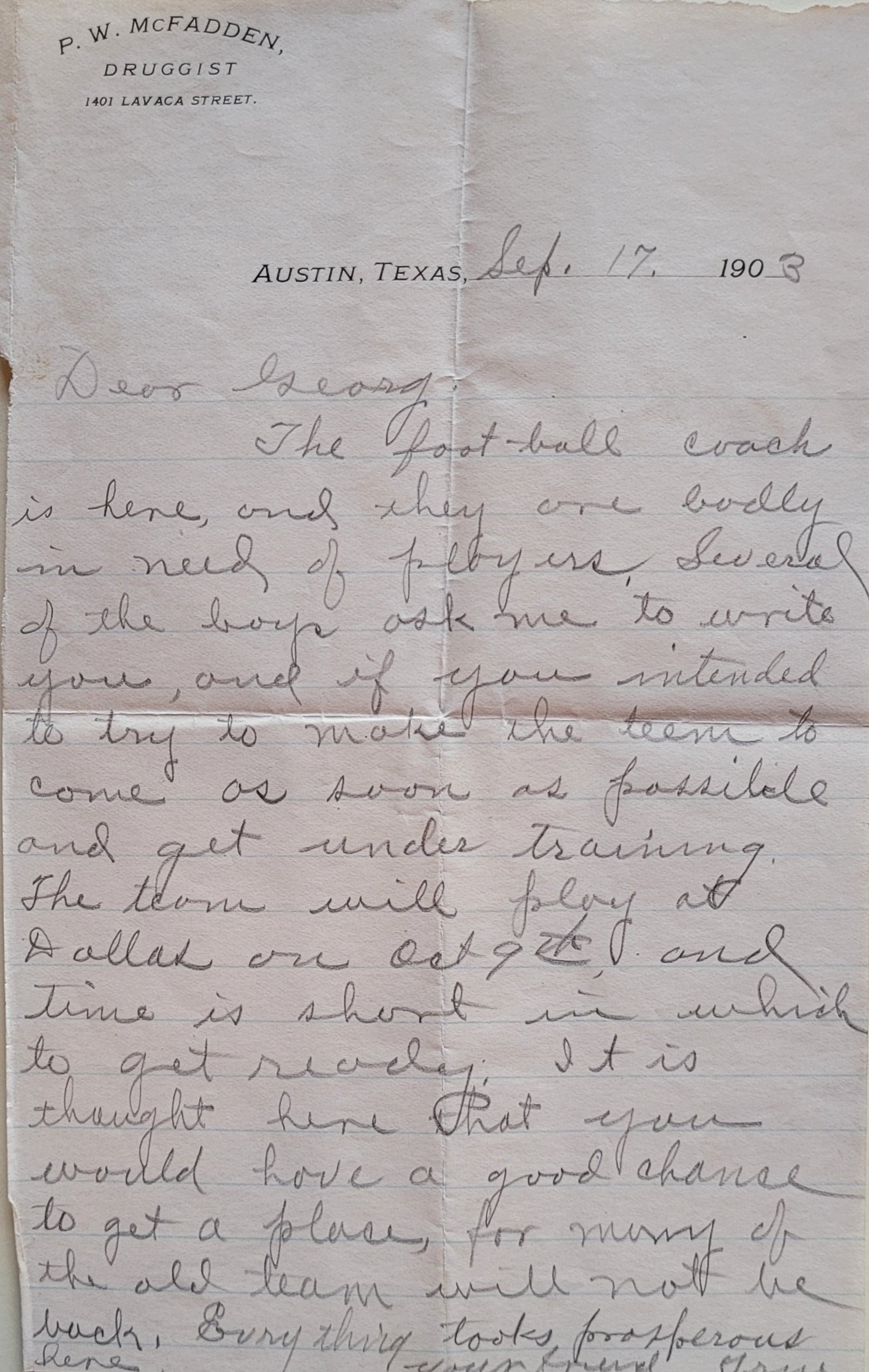
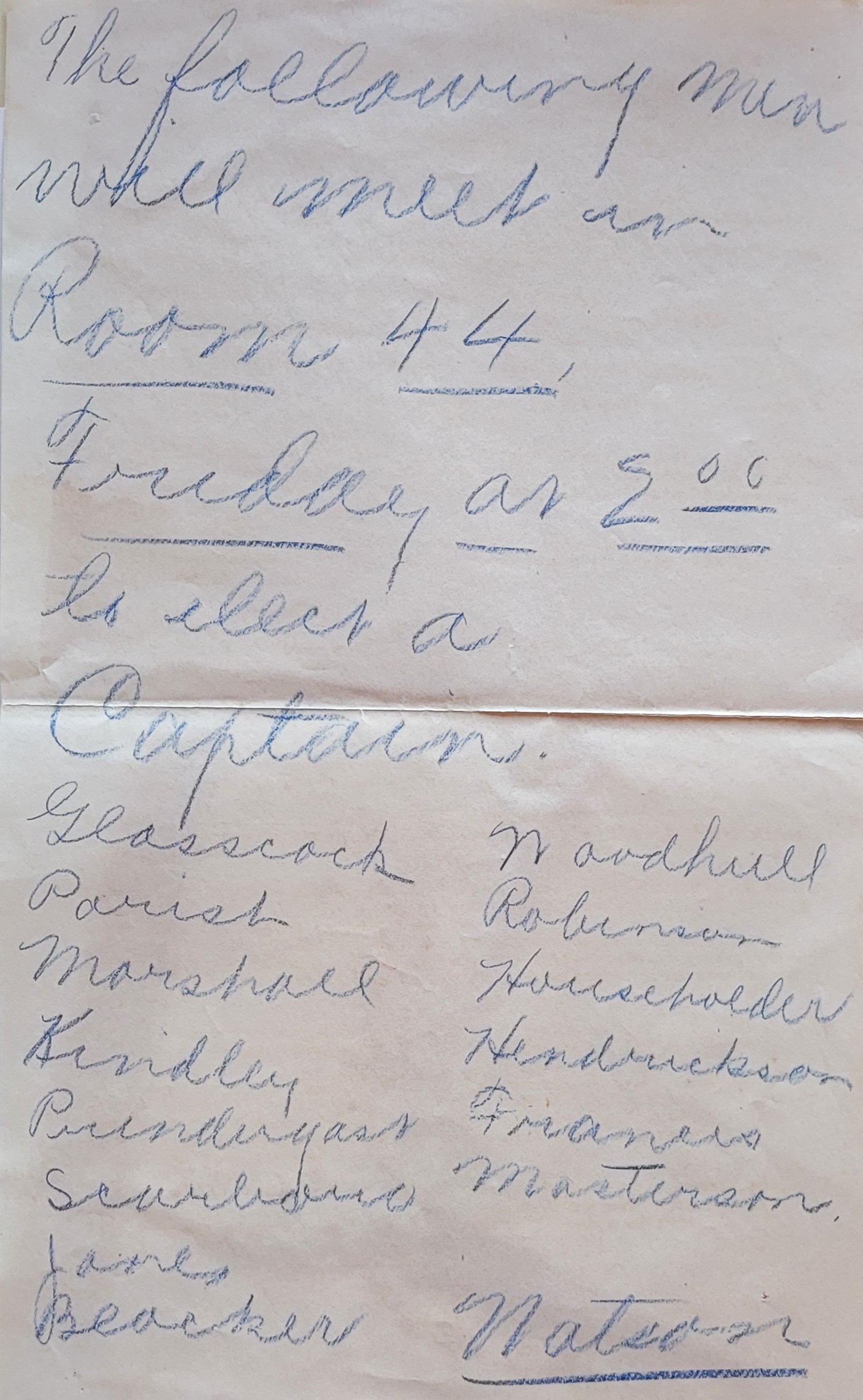
This handbill for the 1903 Texas-Texas A & M game is one of the earliest examples of the the word “Longhorn” to replace the word “varsity” in describing UT Austin sports.
Texas plays the Haskell Indians
Coach Hutchinson is the first coach to be hired as “outdoor athletic director and the first to be paid by the University of Texas instead of the generated funds. He was the coach for baseball, track, and football. He finished his career with a 16-7-2 record, but he still owns the worse defeat in the school's sports history- 68-0 to a Chicago team.
Coach Hutchinson “could talk and cuss and shame as much fight into a man as any living human,” said Ben Dyer, who played for Texas.
"Eyes of Texas" is composed by John Lang Sinclair in a couple of hours.
Don “Mogul” Robinson was a 6 foot 3 and at age 24 built a reputation as the “Mogul” the most powerful train engine of the day.
• Texas 11, Oklahoma 5
Under the rules of the time, a punt that bounced into the end zone was a live ball and could be recovered for a touchdown or touchback. On one such kick, Bill Robinson of Texas and Byron McCreary of OU raced for a ball that rolled underneath a horse hitched to a buggy beyond the goal line. McCreary ran around the horse, and Robinson dived between its hooves to recover the ball. Since there was no end line, the ball was in play, and Texas was awarded a touchdown.
D.A. Frank, a Daily Texan writer, coins the phrase "The Longhorns."
Texas and Oklahoma played each other twice this year.
Daily Texan sports writer D.A. Frank first used the nickname “Longhorn” in 1903 hoping that the moniker would gain traction and credibility with the fans. It was a longhorn and winding road to travel in Texas sports history before a Longhorn was accepted as the school mascot.
1904 Coach Ralph Hutchinson 6-2
George Kindley was a 6’7” player on the 1904 and 1904 football teams. Perhaps the University of Chicago chose to use his size to depict the whole team composition. The media build-up for the game with the University of Chicago was silly. Some things never change with the media. This game was billed as Texas averaging 197 pounds per man when the average was actually 166 pounds less than the average weight of the Chicago team. It was said the Horns smoked corn husk cigarettes that made them crazy; they lived on raw chopped beef, fresh blood from cows, and drank a half-pint of gore each morning. The media even said that the horns shot pistols for two hours every morning for entertainment.
George Kindley
George Kindley -
Texas lost 68-0
If the comments listed above were not stupid enough then look at the laughable depiction in the Chicago Tribune.
Longhorns travel to the University of Chicago and lose 68-0.
.
Football was an Olympic non-medal exhibition sport in 1904 . Texas played Washington University and won 23-0 . Players on the team were Bill Blocke, William Francis, B.L. Glascock, Verne Hendrickson, Fred Householder, Grover Jones, George Kindley, Newton Marshall, Neill Masterson, Lucian arris, Davis Prendergast, Don Robinson, Dallas Scarborough, Rembert Watson.
1905- Coach Hutchinson - 5-4 record
The financial situation at Texas was in bad shape, and $800 was borrowed to make a three-game road trip. As the Razorbacks did to the Horns in 1969, the 1905 Longhorns had to dodge obstacles thrown at them.
Veterans had graduated or had failed to return this year. Don Robinson was the captain. The team had a very poor showing against the Haskell Indians. Francis was so upset that he told the backfield they were the worst set of backs in Texas history.
The team played before empty bleachers in Austin.
Wilkerson, the quarterback, only weighed 126 pounds, and Blocker weighed 130. During the early years of Longhorn football, the Haskell Indians and Sewanee beat the Longhorns several times.
Football as a sport reaches a crossroads. Many individuals and the media are concerned with the violence and bone-crushing direction of the game. Many predicted the death of football by its brutality. The sport was like watching to pit bullfight to death.
Nationally there are 18 deaths and 159 serious injuries related to football.
President Roosevelt states he will banish the game if "brutality, foul play, and inefficient officials" are not eliminated from the competition.
Changes in the style of football will change dramatically over the next three years.
Arkansas throws stones at the Longhorns. Somethings never change. In 1969 the Razorbacks threw bottles, and the band in 1981 and the basketball team in 1982 dodged all kinds of objects.
The years 1906-1910 represent some primarily dark periods for the sport of Longhorn football.
1906- 9-1 Coach H.R. SCHENKER
The 1906 team had two sets of backs. This was one of the best teams since 1900, and even though there were many Texas's best players were hurt against Oklahoma. McMahon the quarterback used a criss-cross trick play to win the O.U. game.
This was a great season except for a 45-0 loss to Vanderbilt. That loss inspired a poet to write the following.
Schenker is hired because the famous Walter Camp gave him a good recommendation. Coach Schenker was a great guy, but he knew nothing about football. Lucian Parrish, the best player on the team, and other players on the team coached themselves to a 9-1 record. It was believed that Professor Metzenthin called the plays for Coach Schenker.
Schenker was not invited back the next year.
Some of the players were disbarred by the SWIAA, and there were academic issues as well.
Parish was a mountain of a man who left a four-year streak behind him in opposing lines. Parrish is remembered as the great hammer thrower who first broke the southern record, but his football achievements are as dear to the Longhorns as his work with the hammer. Parrish played center one year and guard three and was a captain in 1906. He had no weaknesses.
Winston McMahon Throws The First Touchdown Pass In Texas Football History To Bowie Duncan. But passing with a fat and, basically, round ball was crude. Passes consisted of holding the ball between the forearm and hand, heaving the ball in a sidearm motion end over end. Ben Dyer, who was the starting quarterback, said years later, “there was very little of the accuracy we see nowadays, and passes of more than 10 or 15 yards were rarely seen. They were wild hit-or-miss affairs.”
This is the first year that a forward pass is allowed. Texas uses the forward pass to beat Texas A & M.
Tripping becomes illegal
NCAA is formed to regulate college sports teams that choose "to win, no matter what." The goal is to open up the football game to stop in-fighting by the muscle men on the line of scrimmage and spread the participants out over a more significant portion of the field. The introduction of the forward pass served that purpose. John Heisman thinks this new rule is a great idea. This straightforward rule changed football forever. Author Kern Tips said this rule changed the complexion of football n from brawn to brains, size to speed and agility, destruction to deception. Kern said the best part of the new rules is that they still allow for "courage, tenacity, desire, dedication, and all other "spiritual" characteristics inherent "in football. The pass play saved the game.
John Mahrer & Kirk Bohls say in their book Long Live the Longhorns that many rule changes occur during this period. To reduce the number of injuries and to make the game more exciting, 23 professors ask for modifications in the rules to eliminate some of the brutality. Here are some of the new regulations:
Helmets are required
Rules make it more difficult for a lineman to carry the ball. The delineation between the role of a running back and lineman is defined.
The team only has three plays to make a first down, and a first down is increased from 5 yards to 10 yards
A neutral zone the length of the football was established
Downfield coverage on punts is allowed.
A forward pass is allowed with restrictions. If a pass does not touch a player on either side, the ball is turned over to the defense. After the snap, the quarterback has to move 5 yards to either side of the center before he can throw a pass.
Only guards and centers are allowed to interlock their legs
WILLIAM ROBINSON WAS killed in WWI- HORNS UP!!
In 1906, at the student’s request, the Athletics Council formally named the field after the beloved James Clark.
James Clark is the University’s proctor, librarian, registrar, bursar, academic counselor, and groundskeeper. The whole student body adored him for his compassionate nature. In 1906, the students’ asked the Athletics Council to name the field after James Clark.
On the 1906 football is Mangus Mainland, the future basketball coach for the Longhorns.
The yell “Nine Rahs Yell” began.
Rah!Rah!Rah!
Rah!Rah!Rah!
Rah!Rah!Rah!
1907- 6-1-1 COACH W.E. METZENTHIN
In 1907, the Longhorns lost one game by one point. The team always felt like they lost to Missouri because of loose play by Missouri.
1916 Departure for Missouri game
Coach Metzenthin almost worked for free because the team had no money. . Bob Ramsdell the tackle of 1905, 06, 07, and 08 teams was considered the greatest Lone Star Lineman. He was All Texas for All time.
The Texas faculty ruled that freshmen could not compete in their first semester of school. Money for the football program came from soliciting library deposit slips.
A new rule requires an athlete to pass 12 hours to be eligible to play football.
Inspired by the bleachers built for the Missouri team, the players started a fund drive raising 675 dollars from donors, 132 dollars from the Athletic Council and persuaded the engineering department to do the construction. Clark Field stadium was built in one week in preparation for the A& M game. Texas won that game 11-6.
1908 5-4 COACH W.E. METZENTHIN
This was the first year that a Spring training session was held at Texas.
Texas suffered the biggest upset in school history losing 11-9 to a little Southwestern University who just started playing football.
The Aggie and Longhorn student body got into a fight with one Longhorn receiving three superficial stab wounds to the head. So tense was the situation that Texas canceled a parade planned for downtown Houston.
1908: The campus at 25 years of age. From left to right: the Woman's Building (women's dorm), Chemistry Labs, Old Main, Engineering (today's Gebauer Building), B. Hall (men's dorm), and the Law School.
The new rule that allows passing in a game writes the epitaph for the rugby-style football that was great for the running game but awful for the passing game. The scientific name for this football shape was the “oblate spheroid. This ball was fat and aerodynamically unstable. Author Kern Tips says that in the early years of college football, a lot of latitude regulations were available in the shape of the ball. The home team could use a fat ball for one week and a slim ball the next week. After passing was made a part of the football game, the rules committee streamlined the circumference of the football from 23” to 21.5 “ but left the length and shape the same.
The sports editors of the Cactus commented on the embarrassing defeats of Texas by Tulane, Colorado, and Oklahoma, stating, "In closing, let us say to you, Colorado and Tulane, and thou, also Oklahoma, ye have laid up wrath against the day of judgment: take ye heed, and, in the words of the coach "watch your eye". Coach Metzenthin got tired of the criticism from fans and resigned, but later accepted the job as U.T. Athletic Director.
1909-4-3-1 - Doctor and Coach Dexter Draper
1909 "scrubs" were sort of like the Junior varsity. Notice their uniforms.
Coach Draper is a medical doctor who is hired as the Texas coach. His record is sub-par, plus he lost to Texas A & M. He knew nothing about the forward pass or how to defend against it. After the season, he resigns to become a doctor in pediatrics.
Quarterback Ben Dyer was not pleased with the new head coach. Dyer told the head coach “I thought we were losing games because he did not know how to place the men, that he was playing men out of their normal position and the he was placing no value on the experience of the old men.” Coach Draper listened to him and then demoted him to a end position and replaced him with Bart Moore and Marshall Ramsdell. Draper’s decision was good for all including Dyer. In the new offensive line up Texas beat OU 30-0.
1909 the (T.I.A.A.) Texas Intercollegiate Athletic Association is established. The S.W.C. will follow six years later. It is the members of this association first attempted to control athletic conduct and establish recruiting standards.
I guess the "Cactus" had no clue as to the illegal state of recruiting and infractions that were occurring at Texas.
Alcalde states, "the college (Texas) had stood square for clean athletics. On the roster...., there are no stars from the East and South. There are no hired mercenaries.... Though defeat has been her (Texas) portion, no disgraceful professionalism stains the fair name of Texas. Squarely she (Texas) has stood for all that is honest and manly--all that she seeks to teach the youth of the South. Proudly she (Texas) may look forward to a victorious future. "
Quarterback Arnold Kirkpatrick is an inductee into the HOH.
1910- 6-2 - Coach W.S. Wasmund- A Michigan Wolverine
1910 , UT Astin created the University Interscholastic League (UIL) to organize sports for high schools.
Coach Wasmund is one of the first coaches, not from the Ivy League. Michigan was the new cradle for college football prominence.
A Training camp before the season is allowed. The team meets in Marble Falls to prepare for the football season. Captain Ramsdell leads the team. To get in shape, players walked 15 miles in the foothills. Coach Wasmund and trainer Billy Disch monitor the teams hiking. The team trained all of September and on October 1, the team returned to Austin and the regular training table was opened at Brackenridge Hall.
After the 1910 season Coach Wasmund fell from the second floor and died. (see lost to soon section on the website.)
Texas cancels the TCU game due to Wasmund’s death, but before he passes away helps procure the services of Dave Allerdice for 1911. The track coach Burton Rix and the baseball coach Billy Disch act as the coaches for this year.
Tied 6-6 with Texas, Baylor protests a call and exits the field. To this day, Baylor records show that the football team in 1910 went undefeated. On the other hand, Texas stated that by leaving the field, Baylor forfeited the game, and the Longhorns claim a victory and not a tie in the record book.
The manager was Lutcher Stark who later would have a major influence on the future of Texas.
Questions arise concerning the eligibility of Texas halfback M.L. “Hap” Massingill and end Morgan Vining. It was rumored that both had played at Baylor using assumed names and had been paid to coach at Allen Academy in Bryan. The following investigation cleared both players of wrong doing.
More rule changes
15 Minute Quarters Are Added
Flying Tackles Are Banned
Passes Have To Originate 5 Yards Behind The Line Of Scrimmage And Completions Have To Be Less Than 20 Yards.
Interlocking Hands Are Outlawed
Rule changes require 7 Players On The Line Of Scrimmage with the intended purpose of Getting The Lineman Out Of The Backfield.
A pass interference rule was added.
Three Longhorns suffer broken bones in the UT-A&M game. Texas accuses A & M coach of dirty play, so Texas Chooses Not To Play Texas A & M Until A & M Releases Coach Moran. To replace A & M, UT reaches out to OU for a possible series to replace the A & M game.
The letter from the Texas administration to the OU administration is below.
The flying wedge becomes illegal.
Sportswriters are moved from the sideline to the press box on the top row of the stadium
1911- 1920 three Coaches -Allerdice, Juneau, Whitaker
Hiding the ball under the clothes was still allowed until 1911.
1911- 5-2 Coach Dave Allerdice and “dirty charlie” Aggie coach Moran
For the first time in 4 years, the Horns beat Coach Moran's team of Aggies, who "used dirty tactics to win. In fact, UT guard Marion Harold's leg was intentionally broken by the Aggies, and the Longhorn fans decided to write a song.
Aggie Coach Charley Moran
To hell, to hell with Charley Moran,
and all his dirty crew.
If you don’t like the words of this song,
To hell, to hell with you.
Coach Allerdice Longhorns and Texas A&M meet in Houston to play a game. A & M is undefeated and unscored on, and the Horns had only lost one game. Texas wins as Arnold Kirkpatrick picks up an Aggie fumble and returns for a touchdown. Author Kern Tips says the victory celebration by the Longhorn fans and angry Aggies after the game led to the first rupture of intercollegiate relations in the Southwest.
The U.T. Athletic Association, due to unnecessary A & M rough play, suspends play with the Aggies. The suspension lasted until 1915 when the Southwest Athletic Conference was formed. Chairman Mather of the U.T. Athletic Council sent a letter to Professor Bagley of Texas A&M stating, “ I beg to inform you that the Athletic Council of the University of Texas has decided not to enter into any athletic relationship with A&M College of Texas for the year 1912.” The breach lasted three years.
Three years later, A & M realized that they needed the $10,000 to $15,000 proceeds from the Texas game to fund their football program, and by the end of 1914, Charlie Moran left College Station.
Clyde Little Field said that Coach Allerdice “was a great teacher and a very lovable man.”Allerdice instituted a pre-season conditioning camp in Marble Falls, Texas.
By 1911, 13 football coaches had led the Longhorns over a span of 18 years.
Dave Allerdice represents a new breed of coach who no longer takes a job for transitory reasons. Coaches arrived with plans to stay, and some did. Coach Allerdice is the first Texas Coach that remains for five years. Up to this point in football history, he is the most successful coach of the Longhorns with a 33-7 record, which includes one undefeated record and two 7 -1 seasons. Allerdice
Led UT to three state championships, two SWC titles, and a 33-7 record during his five seasons
1915 squad scored a 92-0 win over Daniel Baker College
Directed the 1914 team to 8-0 record and scoring margin of 358-21
Coach Wasmund unexpectedly passed away at 23 years of age, which forced the Athletic Council to cancer the TCU game. Wasmund is replaced by one of his Michigan teammates- Dave Allerdice. Coach Burton Rix, the Texas track coach, and Billy Disch, the baseball coach and manager, held the football team together until Allerdice could get football acclimated for the Horns.
Allerdice's coaching style was entirely different than Wasmund's; Allerdice was quiet but exuded confidence, Wasmund was full of energy, and his fiery nature was liked by the athletes. Player Clyde Littlefield said about Allerdice, “To me, he had one of the finest characters of any man you could ever find in athletics.”
Until Ricky Williams years at Texas Len Barrell held the record for most points scored in a season (121). He is also the First Longhorn To Gain More Than 100 Yards In A Game.
1912- 7 -1 - Coach Dave Allerdice
Frost Woodhull- An end and captain of the team
More rule changes:
20-yard limit to pass reception is abolished
Four plays instead of 3 are allowed to make the 10 yards
The field is shortened from 110 to 100 yards, but a 10-yard end zone was added to facilitate the passing game.
On the side, kick is banned
Touchdown increases from 5 to 6 points.
Bottom row: Desley, Brown (Captain) Seller
Middle Row : Coach Allerdice, Higginbotham, Puett, Woodhill (Captain” E.H. Berry
Third row: Garrett (Mgr) , Lefwick, R.L. Berry, Kane, Dish (trainer)
Top row: Littlefield Jordan, Murray , Wimmer
MAJ. GEN. KEARIE LEE BERRY HOH
Sport: multi
Position: multi
Inducted: 1959
Hometown: Denton, Texas
FOOTBALL (1912, 1914-15, 1924, Lineman)
TRACK (1915, 1916, 1925)
WRESTLING (1915-16)
Vice president of UT Student Association in 1915-16
SWC heavyweight wrestling champion from 1915-16
All-SWC football selection in 1914 and again in 1924 at age 31
1915 football team captain
A career Army man, he survived the famous Bataan Death March and 40 months as a prisoner of war
Earned Purple Heart, Silver Star, and Distinguished Service Cross
Named Adjutant General of Texas in 1947
Eugene Berry HOH
Sport: Football (1912-13)
Position: Lineman
Inducted: 1972
Hometown: Denton, Texas
Named to All-SWC vintage team during 1969 college football Centennial
Established athletics department at Sam Houston Teacher's College in 1914
Coached football, basketball, baseball and track there until 1920
Brother of 1959 Longhorn Hall of Honor inductee Maj. Gen. Kearie Lee Berry
Clark Field is remodeled. The west stands are covered with a roof in 1912, and a “press box” is built on the roof. North and south seats are added. More than 18,000 fans attend the 1920 Texas - A & M football game, at the time a record crowd for the South USA.
1913- 7-1 - Coach Dave Allerdice
Big changes occur this year in both Coaching and the U.T. Athletic Department. According to the book “Here Come the Texas Longhorns” by Lou Maysel, 1913 was the last year management of the football program, including the handling of revenues and the scheduling of games, was in the hands of students, mainly those of the team manager.
Theo Bellmont was hired as the first Athletic Director, and he immediately moved all athletic responsibilities controls to him and the Athletic Council.
Theo's years as an A.D. are pro-active. Bellmont gave the UT athletic program adroit guidance and helped institute many innovations.
He is instrumental in building Memorial Stadium, starting the Texas Relays, scheduling the first "official" game with OU, creating the "T-association," establishing the SWC, reorganizing the Athletic council, starting an intramural sports program, moved basketball indoors.
Improvements start at Clark Field.
The 1913 training camp was in San Marcos at Roger's resort on the San Marcos River. The work-outs and conditioning resulted in an undefeated season in 1914.
Knute Rockne plays opposite Pete Edmond during the Notre Dame-Texas game in 1913. Knute says he has played against teams all over the USA, "but never did I go up against a better wing." "He was a terror when his team was completely overwhelmed."
Texas had won 12 in a row when they played Notre Dame, but Clyde Littlefield, the starting quarterback was sick and did not play in the game, and when Jordan left the game in the 4th quarter, the dam broke. Final score 30-7.
Paul Simmons uses his somersault technique to evade Notre Dame tacklers.
Paul Simmons is a gymnast turned running back who holds the ball with one hand, and somersault's over the tackler.
When this technique works, it is breathtaking, and when his technique fails, it is well.....breathtaking.
Paul Simmons shared the record for the number of touchdowns scored in a game at 4 until Ricky Williams scored 6 in 1998.
Financially this was a break-out year for the Horns with revenue of $19,030 and $16,731 in expenses.
1914- 8-0 record WWI starts- Coach Dave Allerdice
1914- “Texas Spirit,” Notre Dame Scholastic said about playing Texas, “ When one says Southern, the word hospitality follows as inevitably as Longhorn follows the mention of the word Texas, or as we might say, were we not too modest, as victory follows Notre Dame. But really, we didn’t know what hospitality was until our eleven came home to tell us of the royal treatment received at the hands of the Southerners. …..Texas, we appreciate your kindness, and we admire your fighting spirit. “
1914 Training Camp on the San Marcos river.
Coach Allerdice signs an unprecedented two-year contract. $1500 the first year and $2000 the next year. Allerdice employed a deceptive option offense with the snap going to either the tailback, fullback, or quarterback.
In 1914, the Southwest Intercollegiate Athletic Conference, the future Southwest Conference, officially came into existence when the original eight member schools agreed on a constitution. The eight schools were Texas, Texas A&M, Baylor, Arkansas, Oklahoma, Oklahoma A&M (now Oklahoma State), Southwestern, and Rice, which was admitted provisionally. The new conference was the idea of L. Theo Bellmont, athletic director at Texas, and Dr. William Tyler Mather, who successfully completed the project. Both men saw the need for the larger colleges of the area to organize to engage in intercollegiate athletics. Throughout its eighty-year history, the Southwest Conference provided high-level competition in numerous sports for its member schools. In 1996, when the conference was broken up, the member schools were the University of Texas at Austin, Texas A&M, Texas Tech, Baylor, TCU, Rice, SMU, and the University of Houston.
The undefeated season – When the forward pass testing was first introduced it was freely predicted that all elevens would be put on a more or less equal basis and that the smaller college with its smaller squad and in most instances lighter men would have an even chance with a larger and heavier college teams. It would seem that the prediction is somewhat indicated in the light of the fact that it has taken almost a decade of the more open game to give the university a team that could carry through its schedule without a defeat. The 1906, 1907, 1912, and 1913 teams only had one defeat period
Oklahoma A & M withdrew from the SWC in 1916. In 1918 Southwestern was forced to withdraw due to the small student body population. In 1918 SMU joined the SWC , and in 1922 TCU joined.
Billingsley Report- A football rating service- names Texas as National Champions. The NCAA also recognizes this team as National Champions.
If you have never visited the H.J. Lutcher Stark Center - you should! The Center is open Monday to Friday 9:00AM – 5:00PM* Saturday & Sunday Closed. Their site is http://www.starkcenter.org
Phone Main Office: 512 471-4890 Email: info@starkcenter.org
On- Campus parking at San Jacinto Garage or Manor Garage
Physical Address -403 East 23rd Street North End Zone, Suite 5.700
Austin, TX 78712.
The link below is from the Stark Center archives and discuss's the 1914 team
http://archives.starkcenter.org/flipbooks/1914UT/
Six members of this team have been inducted into the Hall of Honor.
Louis Jordan said about playing O.U. "Nobody Leaves The Field Until We Beat The Hell Out Of Them." Fortunately for the opposing teams, he practices anger management by participating and winning the conference in the hammer throw.
Louis Jordan was Texas's first All-American, and he was killed in WWI.
A & M returned to the Longhorn schedule when the A & M coach accused of dirty play was fired. Texas had won 20 of 21 games after the 1914 season.
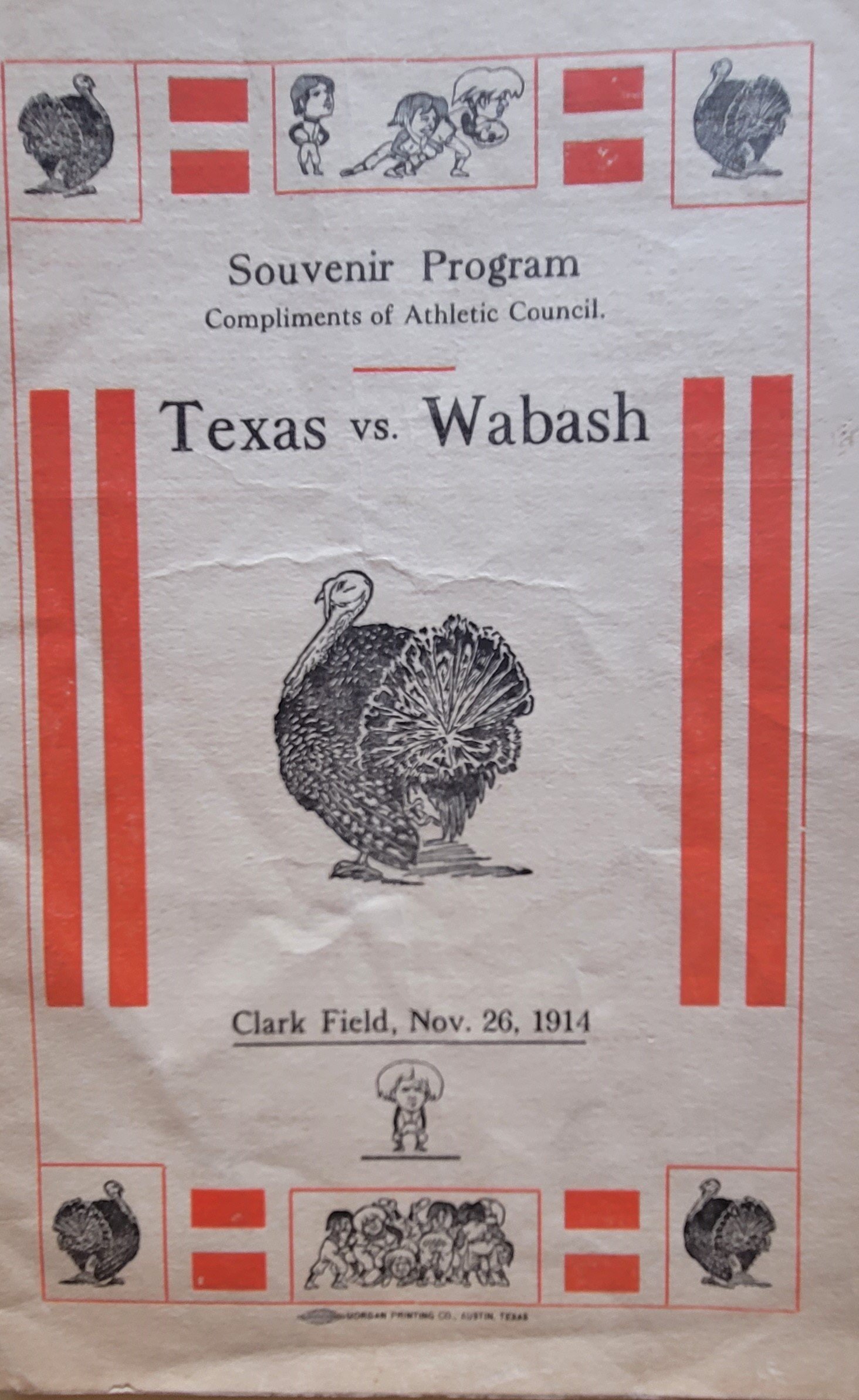
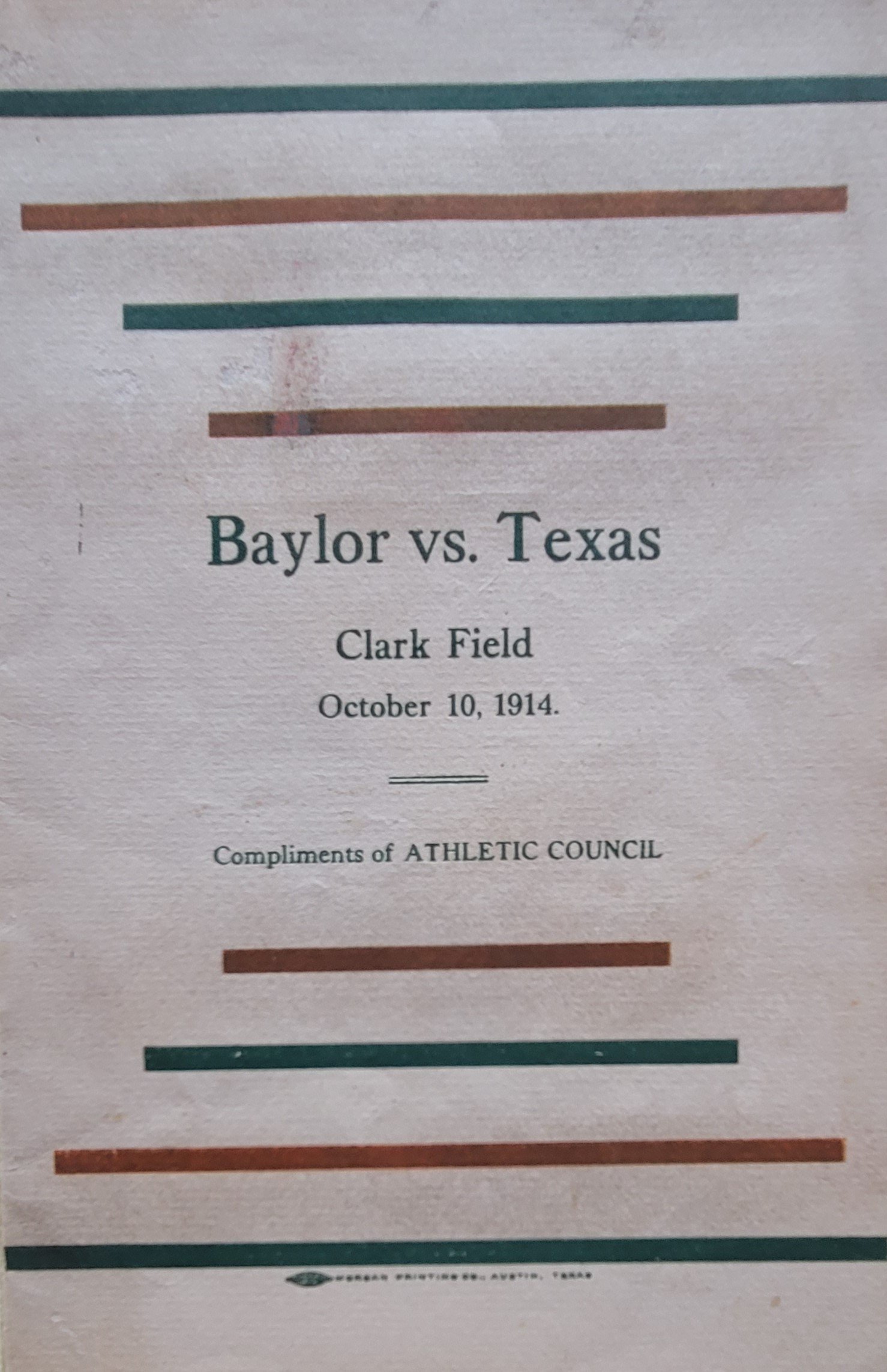
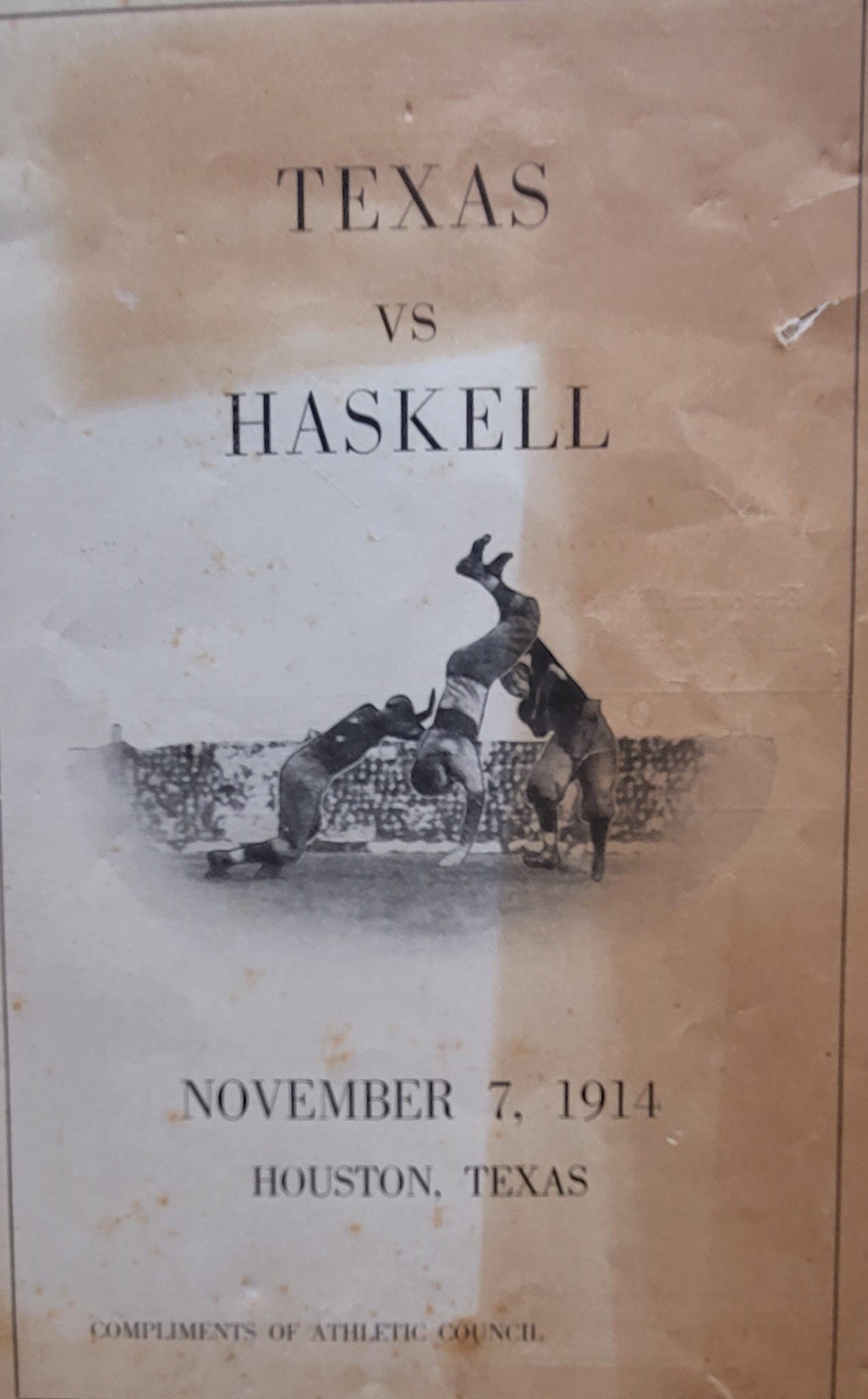
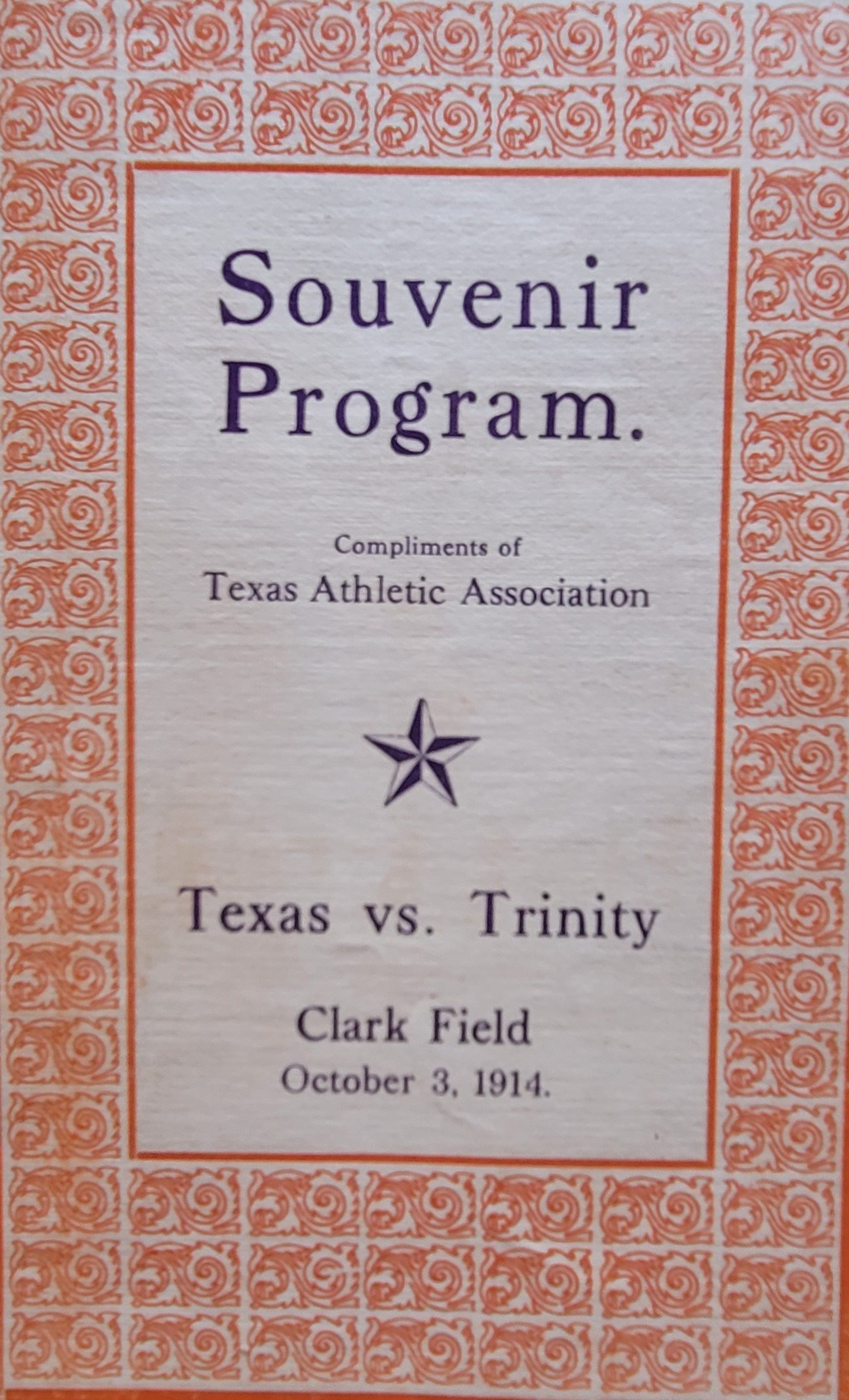
On May 6, 1914, the Southwest Conference was formed.
1915-1919
Each team still had its own eligibility rules, and some colleges allowed non-student to represent their university. However, that would change for the better over the next five years. After that, the ethical schools started banding together, forming athletic associations and eligibility rules. See https://texas-lsn.squarespace.com/follow-the-money-trail-to-understand-the-reasons-for-infractions-in-college-recruiting for more information.
Enter the formation of the SWC, which over time managed to regain parental control of the petulant 21-year-olds. The SWC opened the door to an era of responsible football management to better athletes and the Universities. A "ringer" to win a game was the first university winning technique abolished by the SWC. The ability of a University to sneak in a great athlete with no academic qualifications (ringer) was no longer tolerated. Instead, the SWC was determined to add minds and mores back into the football equation.
1915- 6-3 - COACH DAVID ALLERDICE
3434 students are attending The University of Texas.
Around 1915 Texas against Rice for the first time wore numbers on their jerseys.
The Universities were tired of what they called the “Tramp athletes” choosing football over academics. University faculties were concerned that football players considered their sport as the final goal in life instead of a means to receive an education for life. Universities wanted to recapture their institution’s destiny from muscular gents with a short-term focus.
A holdover rule allows the team that makes a touchdown to kick for the extra point from the spot where it scored the touchdown.
Texas has 12 fumbles and completes only 3 of 23 passes to lose to Texas A & M 13-0.
Clyde Littlefield Holds The Record For inclusion on seven touchdowns in a game. He is also the first Longhorn halfback to be named as consensus All-SWC.
The SWC was formed to replace "town" play with college teams. Arkansas, Baylor, Oklahoma Sooners, Oklahoma State, Rice Owls, Southwestern Pirates, Texas Longhorns, and Texas A & M form the SWC to play "town" teams instead of "clubs". Southwestern Pirates leave SWC 2 years later.
Training camps are banned, and questionable and potentially offensive Yells at games are addressed.
1915 Clark Field Score Board , 2021 Score Board
Reflection Point
Coach Allerdice was the youngest coach in Longhorn history, being hired at the age of 25. He is also credited for developing Clyde Littlefield and Gus Dittmar. Despite being 33-7 as UT's coach, he resigned in 1915 because of what he called "the supercritical nature of the Texas fans." He then went to Indianapolis and joined his family's meatpacking business. Sadly, in 1941 a fire in his home killed him, his wife, and one of his children. He was only 53 years old.
1916- 7-2 Coach Eugene Van Gent- Texas wins their first SWC championship.
Missouri questioned the eligibility of Dittmar and Carlton. An agreement was made where Dittmar played, and Carlton did not.
The varsity had a superstition that they would lose a game if they came on the field first. So the “Agriculturists” (Texas A & M) was introduced first. A & M team outweighed the Varsity by 20 to 30 pounds per man.
Texas found the “ Farmer line as solid as pig iron.” Billy Trabue had a 65-yard run . He was knocked out twice he still chose to play. Texas won 21-7 . Texas speed beat A & M size.
This year Texas also had another team full of Ineligibles composed of 4 -year “Exes” and transfers from other schools.
Gent played for the Wisconsin Badgers and lettered in football, basketball, and track. His first act was to restart the Spring training program started by Metzenthins in 1908, and he added numbers to the back of the player’s jerseys.
Dittmar, Carlton, Hart, and Lang made the All-SWC team.
Steve Pinckney, the 1911 team manager, persuaded alumni to contribute a dollar each to purchase an unpatterned Longhorn named Bevo I. This Bevo did not like crowds or his title, and he only lasted until half-time. It would take 20 years before UT tried again to use a Longhorn as a mascot.
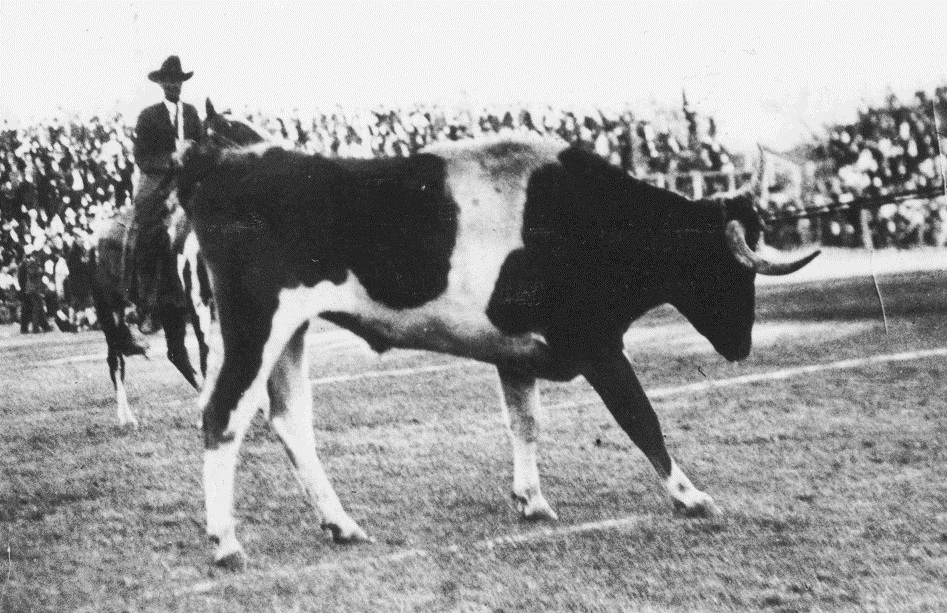
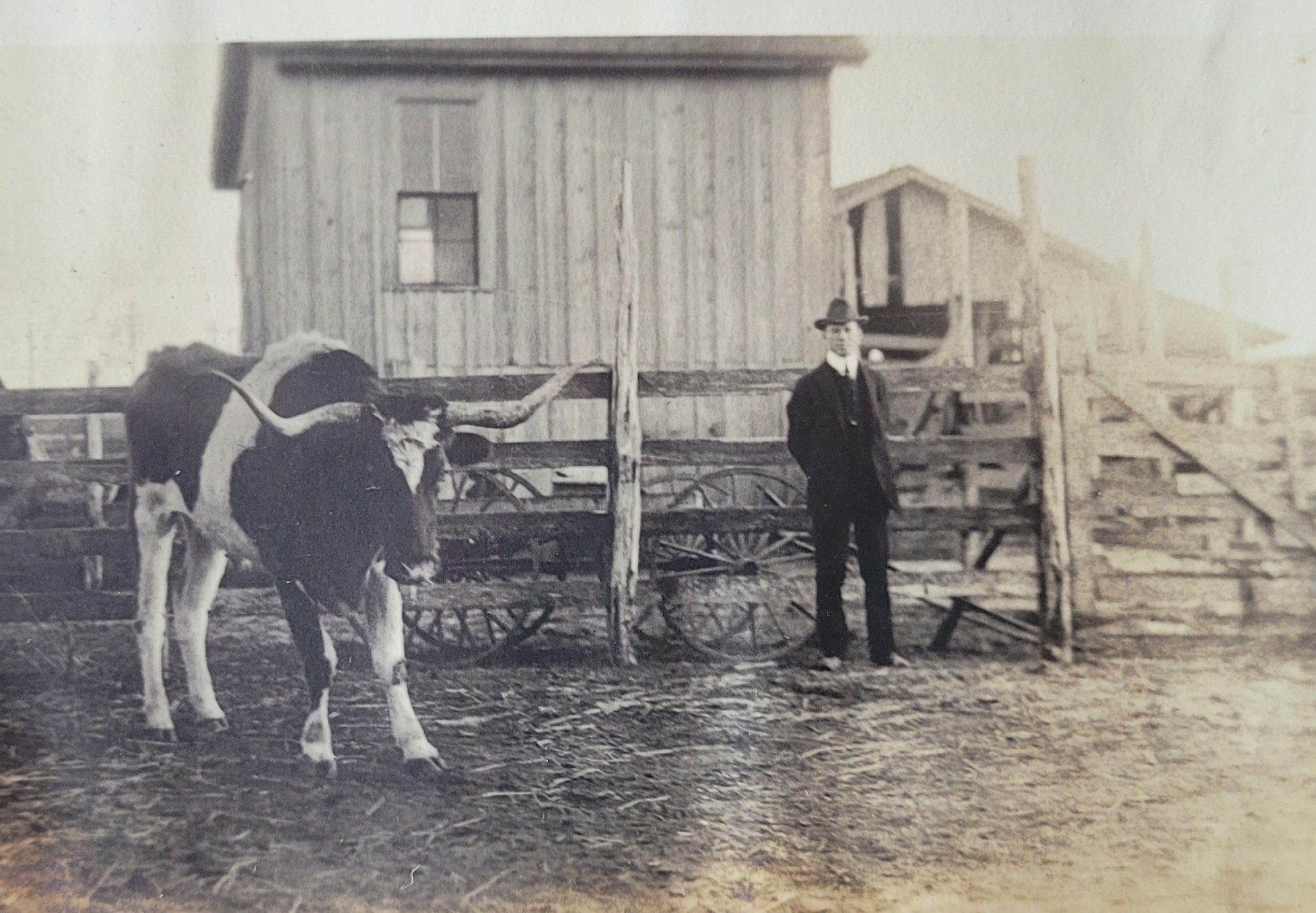
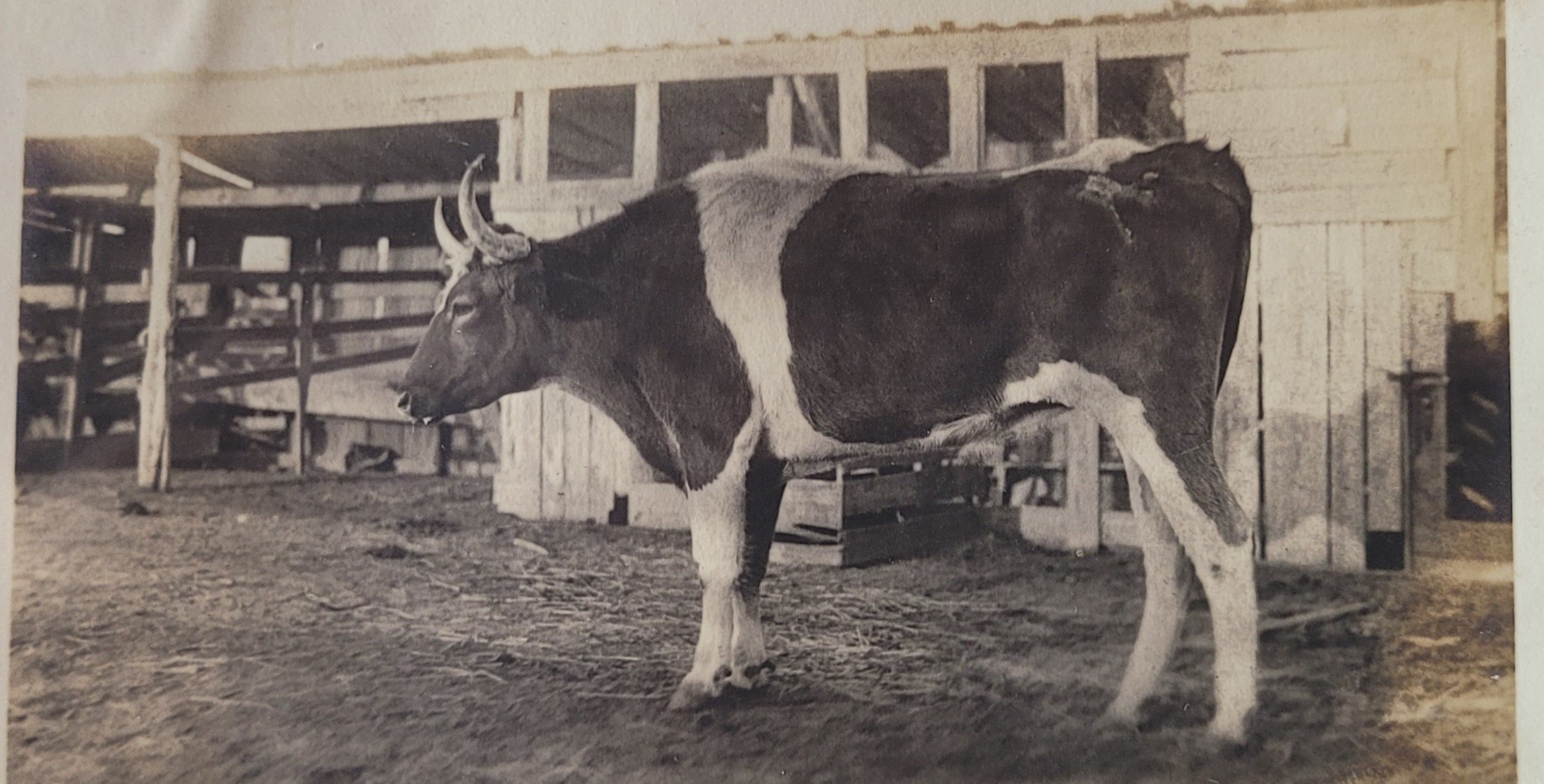
1917- 4-4 COACH Bill Juneau
Even though Coach Juneau had a 19-7 record, pressure from the fans, an epidemic, and not winning the SWC championship forced him to resign.
Coach Juneau was the coach at Wisconsin when Van Gent was a player. Coach Billy Disch recommended him for the head coach job at Texas. Coach Juneau also was the coach of the Texas Track team.
Coach Juneau was the first Longhorn Coach that had to deal with recruiting athletes during a war. Most of the talented young men had joined the service. This was the first non-winning season in Longhorn history.
This was the first time the Horns lost 3 games in a row and and a non-winning season . .
1917 -Clyde Littlefield still holds the record for most touchdowns in a game (7).
America entered WWI on April 6, 1917. Conscription took men over 21 years of age, so college football quality remained intact. SWC allowed freshmen to play varsity during the war years.
The President of the University Robert E. Vinson worked with the government in WWI offering U.T. facilities to house trainees for the war effort. The Aggies were not happy that Austin was getting all the conscripted young and talented draftees on the Longhorn campus.
Clark Field 1917
1918- 9-0 - Coach Bill Juneau- The influenza pandemic
The Cliff Morgan Rating service selects Texas as National Champions.
The Cliff Morgan Rating Service Selects Texas As National Champions
There is nothing normal about football in Austin, Texas, in 1918. The influenza pandemic of 1918-1919 was one of the deadliest natural disasters in history, causing the death of 50 to 100 million people worldwide. Austin is not immune, and the city faces many challenges. Football this year is not at the top of the list of priorities to attend. The Austin death toll reaches 200 people during the first wave.
The second wave claimed 17-year-old Texas football player Spence. He had moved into the line-up when Conley left for the Army.
Due to influenza, the Texas-OU game was canceled and the schedule was changed to include teams like Penn Radio school, Ream Flying Field, and Mabry Auto Mechanics. One change moves the A & M game from early November to Thanksgiving day on a home and home basis. Texas wins the game.
SMU joins the SWC
No All-SWC team was chosen in 1918. No champion was crowned. Fats Conley (270 pounds) is the captain but is drafted for the war effort after the first game.
The first wave of the pandemic killed 200 people from Austin.
Thanksgiving A & M tradition begins.
Because of the war effort, the 9-0 record was achieved by playing 5 college teams and 4 military squads.
1919- 6-3 - Coach Bill Juneau
Coach Bill Juneau remains as Head Coach, but Head Coach Gene Van Gent is guaranteed a job after he returns from the war effort, and after much controversy, he is assigned responsibility for the line.
Football lettermen athletes from as far back as 1915 returned to Texas after the war effort to play football, moving the freshmen back to the freshmen team.
WWI is over and football grows in popularity.
OU leaves the SWC and OU and Texas do not compete again until 1922.
The starting quarterback for Texas - Rats Watson - is ruled ineligible.
A bizarre play that will never occur again. The rule at the time that if a team has their punt blocked but recover the punt they can punt the ball again. Howard Marsh from Oklahoma blocked the Longhorn punt three times and each time the Horns recovered the ball. Unfortunately for the Horns the third punt recovery was in the end zone and OU got a safety.
The first Longhorn game is “broadcast” via morse code.
Bibb Falk is the only All -SWC football player.
1920-1930 THREE COACHES- BERRY WHITAKER, "DOC" STEWART, AND CLYDE LITTLEFIELD,
This was a decade of great growth in Texas football.
Oil is discovered on UT lands in West Texas.
Two strong willed administrators- Theo Bellmont and Lutcher Stark- lead the charge to make Texas Sports great.
Universities finally understand that sports do a better job of increasing student enrollment than promoting educational benefits so there is a building boom for sports facilities across the nation.
1920- 9-0 -Coach Berry Whitaker First SWC Championship
Coach Whitaker posted a 22-3-1 but the fan pressure resulted in him ulcers and he eventually quit. He was inducted into the Longhorn Hall of Honor in 1977,
Before becoming head coach at Texas in 1920, Berry Whitaker was hired by UT in 1916 as an Instructor of Physical Training. His mission was to set up an Intramural Sports program. This program would be 3rd such program in the nation following Ohio State and Michigan. In 2016 the intramural program celebrates its centennial celebration.
The intramural fields north of campus were named after him- The Whitaker Sports Complex.
Whitaker is one of the most successful coaches in the history of Longhorn football and he is a member of the Longhorn Hall of Honor
McCullough, Watson, and Swenson make the all-swc tea,/
One of the great games in the history of the battle between Texas and Texas A & M occurred this year. A & M had not been scored on in two years. The Longhorn team was composed of players with gangster names such as Rats Watson, Hook McCullough, Swede Swenson, Maxey Hart, and Icky Elam. Both teams were undefeated with Texas out-scoring opponents 275-10 and Texas A & M unscored on for the year. A record 20,000 fans attended the game. Texas won the game 7-3 on an Icky Elam trick play as time was running out. Whitaker gets a raise from $3000 to $3750.
On a trick play from seldom used fullback Francis Domingues to offensive tackle Tom Dennis Francis Dominques of Kerrville Texas set up a touchdown run by Dominguez that beat Texas A&M by a 7-3 score and enabled Texas to win its first Southwest Conference title.
George McCullough still ranks as one the best all-around ends at Texas.
The largest crowd (18,300) paid $32,036 to attend the Texas Longhorns and Texas A & M play football. Texas A&M was undefeated and unscored on in 1920 and Texas was also undefeated. The Longhorns won the game on a trick play in the last minutes of the game executed by Texas quarterback Elam who transferred to Texas from Texas A & M.
Francis Dominques of Kerrville played fullback and was a UT letterman in 1920-21. Dominguez scored the only touchdown that beat Texas A&M by a 7-3 score in 1920 and enabled Texas to win its first Southwest Conference title.
Berry Whitaker’s team was SWC champs.
Texas plays Oklahoma A & M (State) at the Texas State Fair.
This was a decade of great growth in Texas football.
Oil is discovered on UT lands in West Texas.
Two strong willed administrators in Theo Bellmont and Lutcher Stark lead the charge.
Longhorn Sports Leaders in the 20's- Berry Whitaker, Billy Disch, Theo Bellmont, Doc Stewart, and Clyde Littlefield.
1921- 6-1-1 - Coach Berry Whitaker
The A & M game is transmitted using a wireless account. It is the first game transmission in the SWC.
Teams started to huddle before each play.
The Horns outscored their opponents 268-27.
Texas was invited to a post-season game to play the University of Arizona, but the UT faculty chose not to participate. A & M faculty chose to participate in post-season play and accepted a Dallas date to play Centre College at the Dixie Classic. This game in Dallas was the precursor for the January 1 Cotton Bowl.
McCullough, Dennis, and Swede Swenson are consensus All-SWC.
A pamphlet from the university states that students were not required to attend church to graduate.
1922- 7-2 - Coach Berry Whitaker (The memorable misfits)
Games with OU are renewed
The Aerial Circus begins. Passing dominates football until 1933. Many traditionalists thought that passing was a sissi’s way out of a confrontation with unpadded men with fists clenched fists moving mountains of men to make a hole for the running back.
The free kick for the extra point was eliminated. Teams now had to try and score the extra point.
20,000 fans attend the Texas-Texas A & M game losing effort. . Football had outgrown the wood bleachers at Clark field.
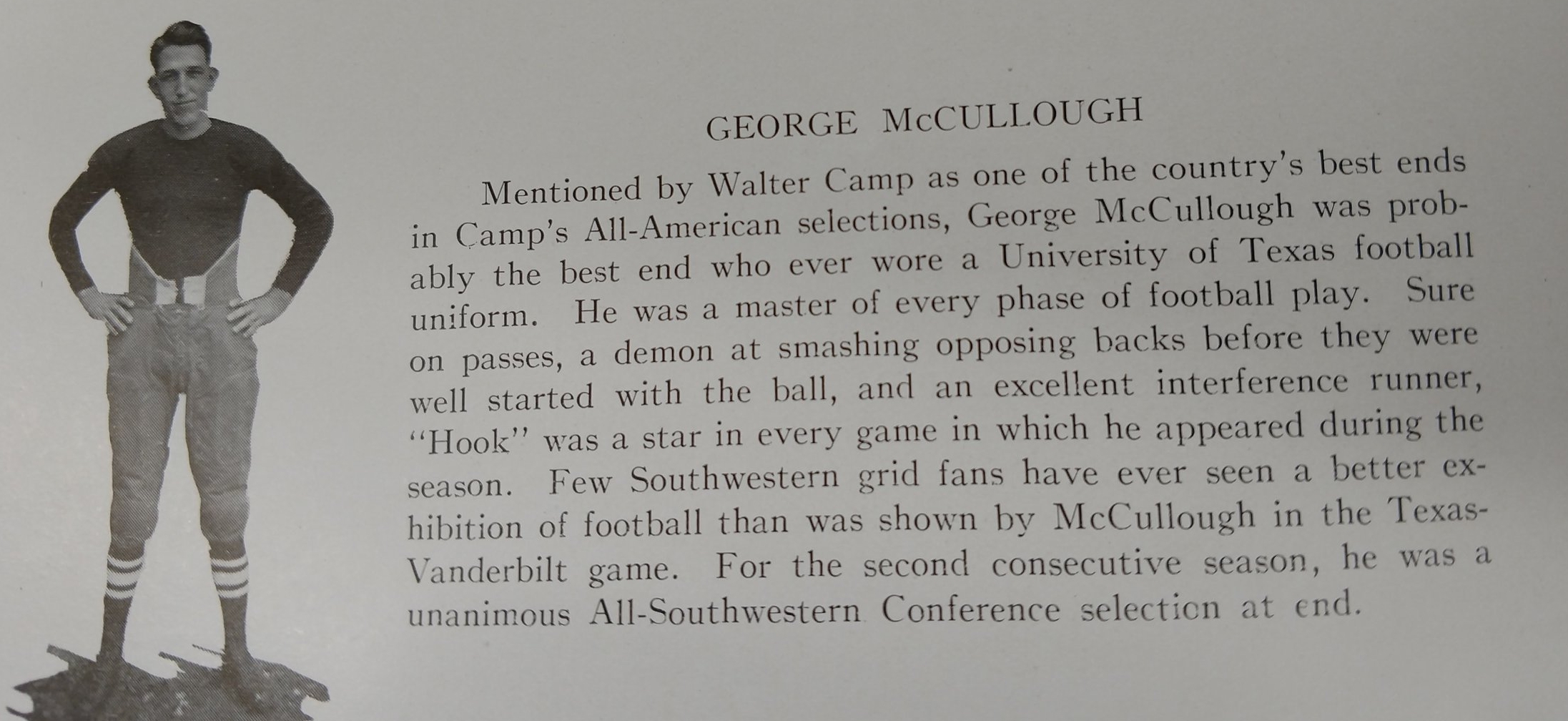
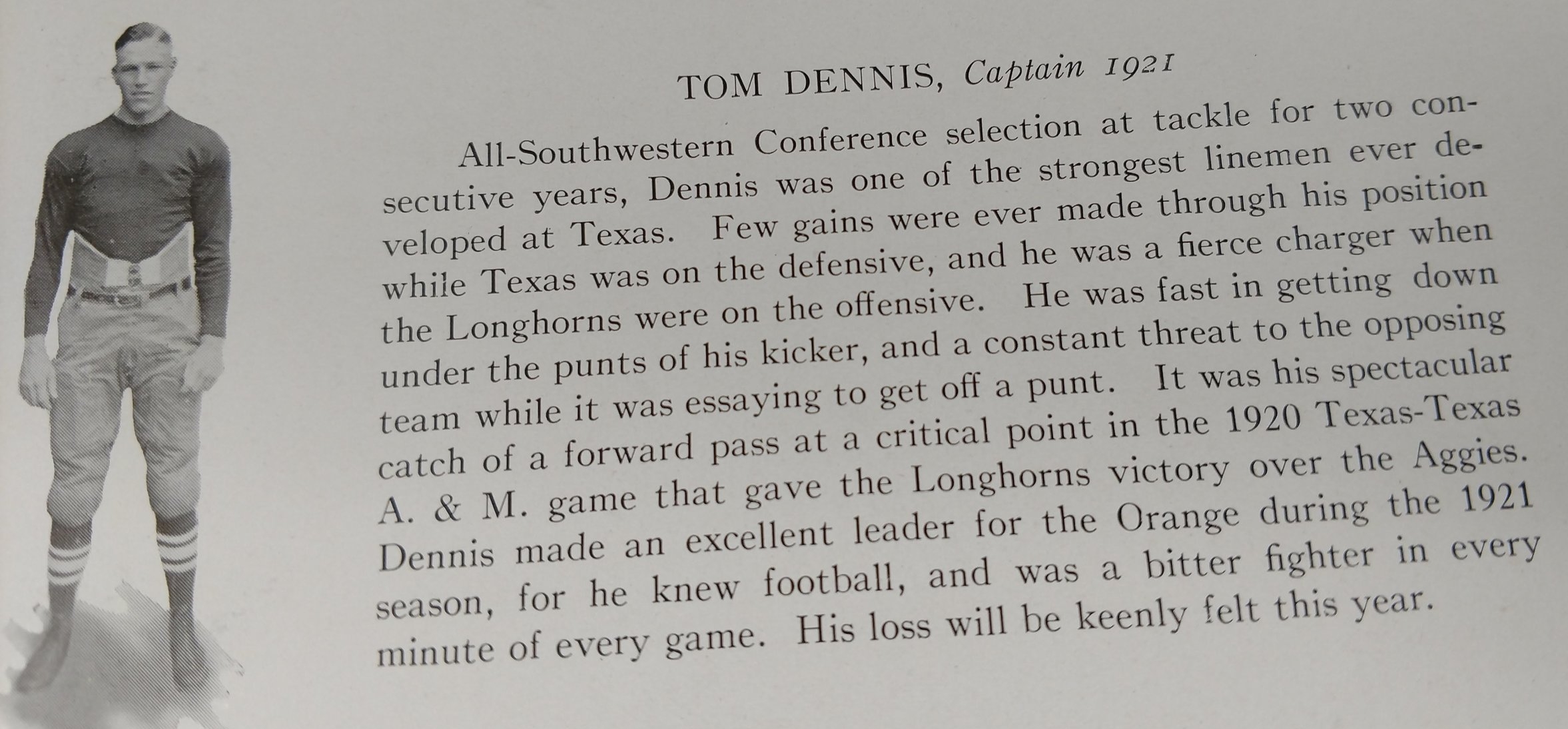
WFAA radio broadcast the first Longhorn game. Vanderbilt won 20-10.
Berry Whitaker refutes the widespread story that a powerful, meddlesome booster had fired him. I’m too thin-skinned and conscientious.” Defeats killed me. I was coming down with ulcers and that kind of thing. He resigned with a 22-3-1 record
1923- 8-0-1 - Coach "Doc" Stewart
Theo Bellmont receives approval from the Board of Regents to build a 27,000 seat concrete stadium.
Coach Stewart had a 24-9-3 record but was fired. Three years after leaving he was shot by a fellow Deer hunter.
In the book, Longhorn Football by Bobby Hawthorne the comment is made that Coach Stewart believed in discipline spoke like an English professor, loved hats, and played the piano. He was a former car salesman, newspaper editor, and sports entrepreneur. His player adored him.
It was a long and winding road to Texas for Coach Doc Stewart.
Doc Stewart and assistant Bill James
1904 organized a football team
1907-1908 coached at Mount Union
Coached basketball at Purdue
1909-1910 coached Allegheny College both football and basketball
1911-1915 coached at Oregon A & M (Oregon State), sometimes football and sometimes basketball
1916 - Coached led Nebraska to two Missouri Valley Conference football titles.
1918- was the Army coach at Camp Gordon Georgia
1919-1920 - sold cars
1921-1922- Coached football and basketball at Clemson
1923- Joined Texas to coach football and basketball
Coach Stewart divorced the football training table from the school cafeteria. He moved the team meals to Mrs. D. B. Emmons's boarding house.
Coach implemented a form of the hurry-up offense with an unbalanced line.
As the Head Coach of football and basketball, his record was 31-0-1
The press call Coach Stewart “Doleful Doc” because of his pessimism expressed for pending games.
TCU Horn Frogs join the SWC
Abb Curtis was the defensive end on this team, and he also participated in the 23-game win streak in basketball in 1923. Abb, in the ’50s, was the assistant secretary of the SWC.
Texas loses the SWC to SMU because of a tie in one of the Longhorn games. Florida invites Texas to participate in a post season game in Jacksonville, but the SWC rules and the UT faculty reject the offer.
Oscar Eckhardt’s bruising running style helps the Longhorns defeat the Aggies.
Bluestein, Bralley, Eckhardt, and Marley make the All-SWC team
Roommates Bully Gilstrap and Abb Curtis are inducted into the Hall of honor.
Most popular song 1923
The Horns broke a 4 game losing streak to A & M playing in College Station. After the 1922 loss to A & M, Ed Bluestein told his Calculus teacher to flunk him so he could come back in 1923 to beat Texas A & M. He flunked calculus and return to Texas in 1923 but broke his leg before the A & M game. Ed watched the Horns beat the Aggies in a wheel chair on the sideline.
The Regents made a new rule:' “hat no infidel, atheist, or gnostic be employed in capacity….no person who does not believe in God as the Supreme Being and the Ruler of the Universe shall hereafter be employed.”
1924- 5-3-1 - Coach "Doc" Stewart
UT strikes black gold with the patron saint of impossible causes - Sant Rita- near Big Lake Texas.
Oklahoma and Texas did not compete from 1924 thru 1928.
Excavation for the new stadium began on 4/1/1924. It was heralded as “the largest sports facility of its kind in the Southwes.
• Last game at Clark Field on 10/25/1924 ended in a tie between Texas 7, and Florida 7.
• First game at Texas Memorial Stadium: Baylor 28, Texas 10 (11/8/1924) Attendance: 13,500
• Texas Memorial Stadium dedication game: Texas 7, Texas A&M 0 (11/27/1924 - Thanksgiving Day). Thirty-five thousand fans attend the dedication ceremony. Texas wins the game off a deflected pass for a touchdown by Longhorn Stookie Allen, and a legend starts that the Aggies can not defeat the Horns in Austin. For 32 years that was true.
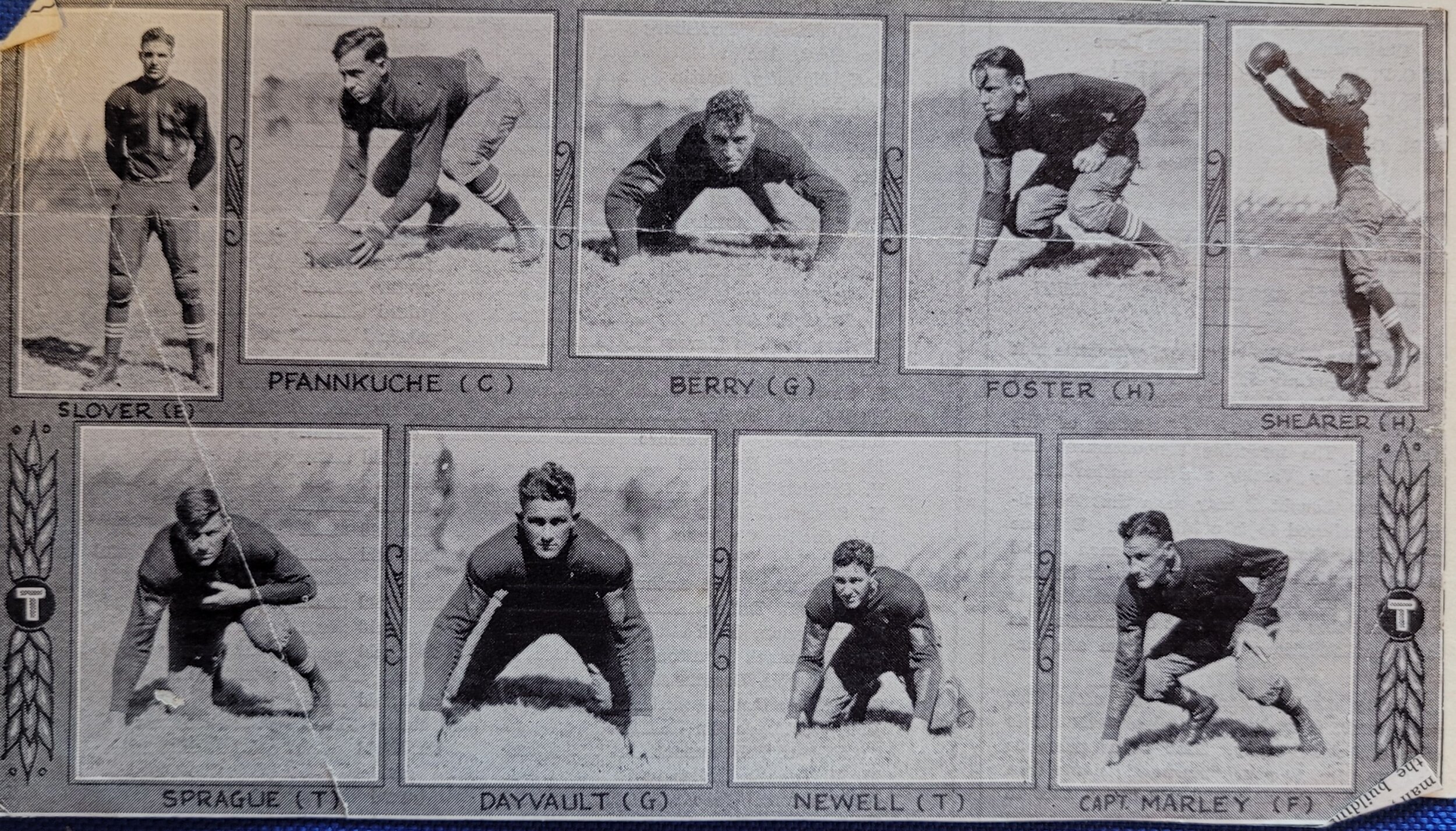

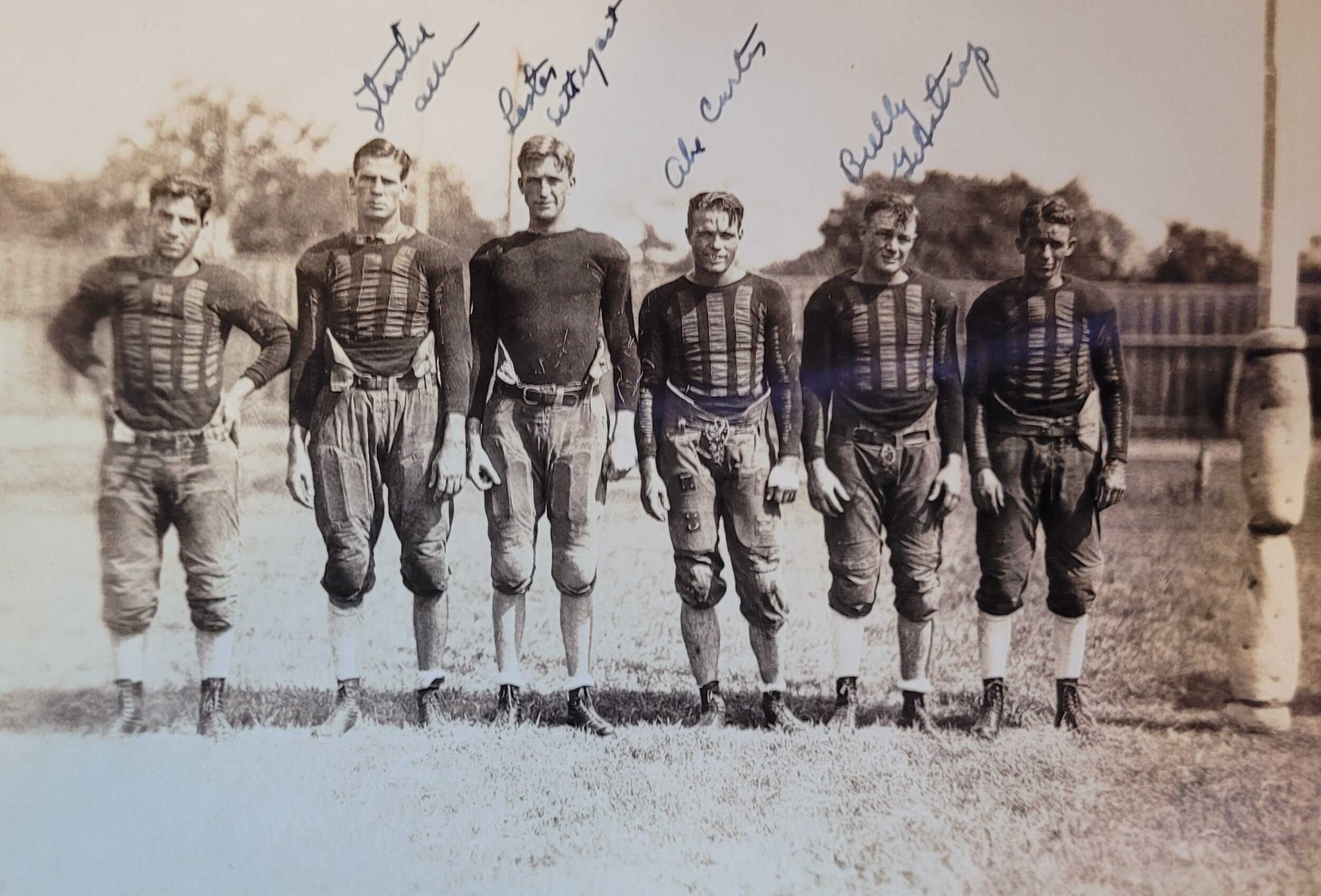
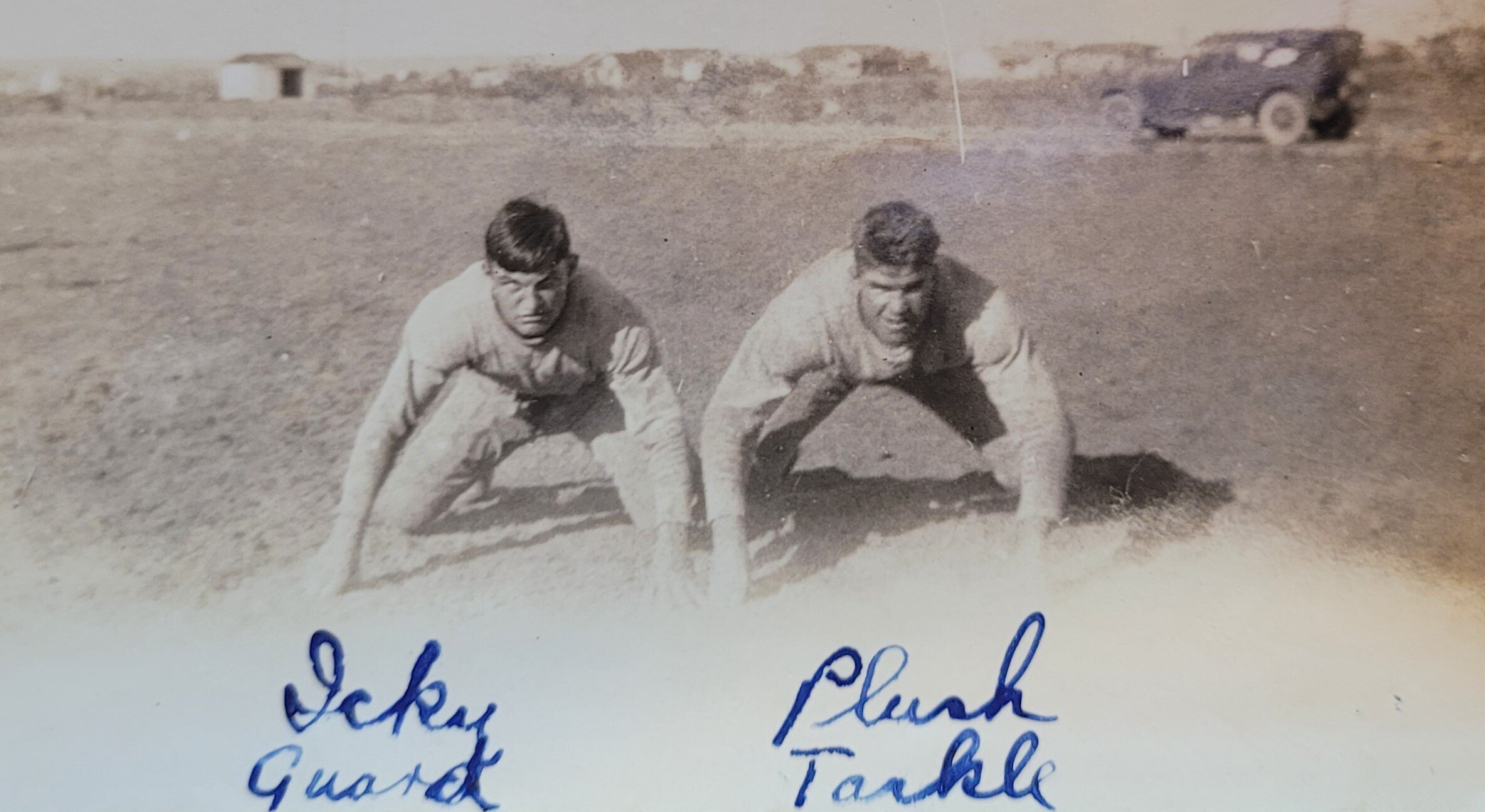
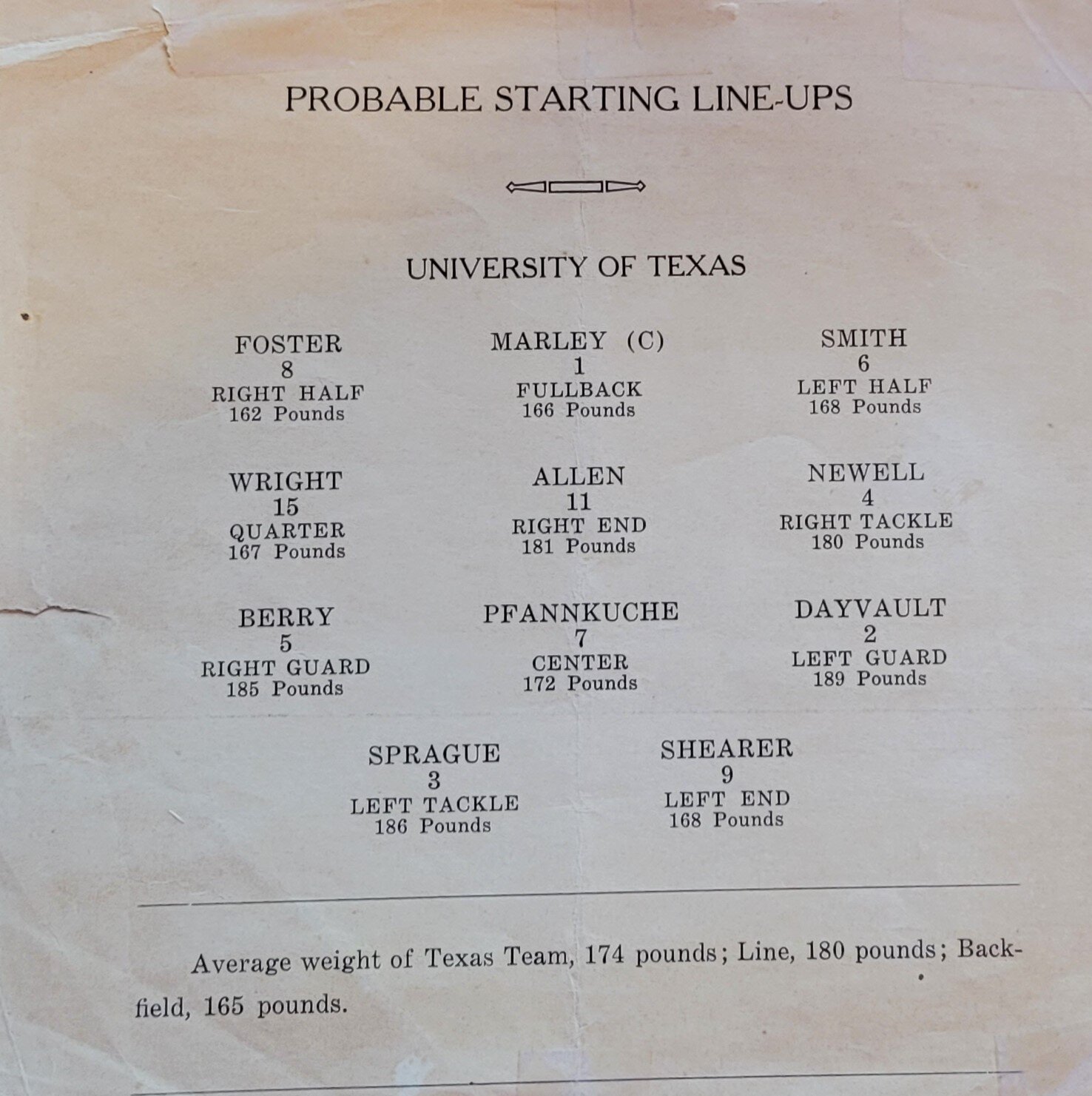
Texas Military Forces
Hall of Honor
K. L. Berry played for the horns in 1915 and then was called to the service. He returned to play football at Texas in 1924 at 32 years of age with a wife and three children
K. L. Berry had a long and distinguished military career. He was commissioned a second lieutenant of infantry in the Officer Reserve Corps on August 15, 1917. Later appointed in the regular Army he served in various assignments, including a period as instructor with the 141st Infantry, Texas National Guard.
He was transferred to the Philippines in November, 1941, just before the outbreak of hostilities with the Japanese. At that time he was promoted to colonel. During the defense of the Bataan Peninsula, Lieutenant General Berry and his command distinguished themselves in the battle of the "Pockets," which forced a temporary withdrawal of the Japanese forces. Following the surrender of Bataan on April 9, 1942, General Berry survived the infamous "Death March" and forty months as a prisoner of war. He was promoted to brigadier general in 1946 and retired on May 2, 1947. Five days later, he was appointed by Governor Beauford Jester as the Adjutant General of Texas; he was promoted to major general in the Texas National Guard on June 5, 1947, and he continued as Adjutant General for over fourteen years. He was advanced to brevet lieutenant general upon his retirement in 1961 from the post of Adjutant General.
General Berry was awarded the following decorations: Distinguished Service Cross, Distinguished Service Medal, Silver Star, Bronze Star, Purple Heart, and the Legion of Honor from the Philippine government. General Berry died in 1965.
Early history of Memorial stadium is below
Bill Little says “universities are not made of brick and mortar, and stadiums are more than concrete and grass. Both are about people. Texas Memorial Stadium, as it was originally called before Coach Darrell Royal's name was included as a part of it, stands in tribute to all those American men and women who have served The United States in all foreign conflicts.
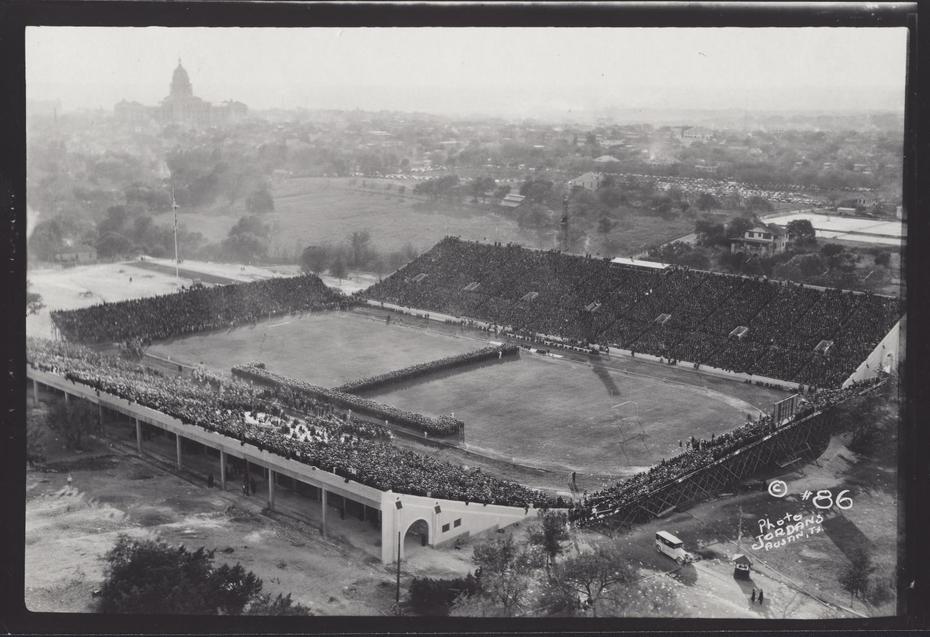

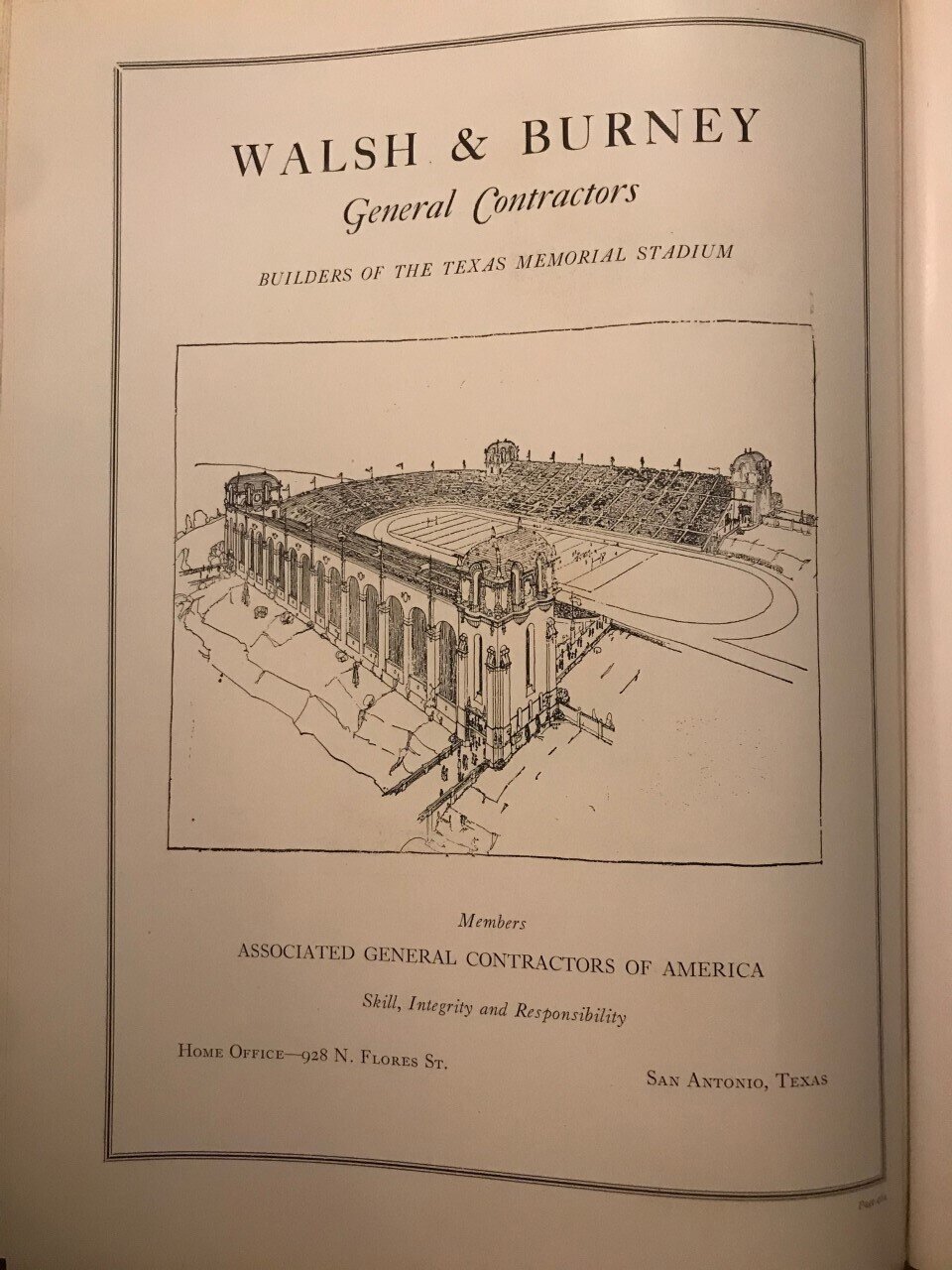
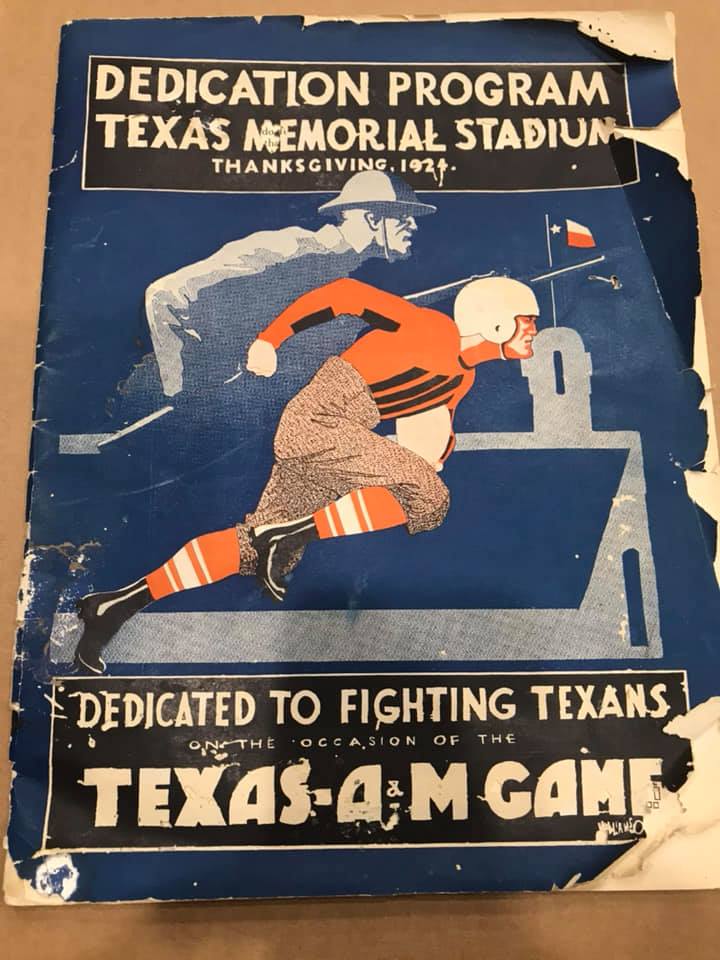
Texas and OU did not play each other from 1924 - 1929
Oklahoma State leaves the SWC.
This is the last year for Shorthorn football. This team was comprised of ineligible athletes waiting on clarification of their eligibility status.
1925- 6-2-1 Coach Doc Stewart
Mark Saxon uses a new procedure to have cartilage removed from both knees.
Stud Wright was the captain of the team.
KUT - the Universities new radio station started broadcasting sporting events.
This is the first year that a tie has a value. 1/2 of a win which would change the math on how to determine the winner of the conference.
Crawling is disallowed for the first time.
top of the charts 1925
Curtis Alderson HOH
Texas - Baylor game is the first game in the SWC to be broadcast over the radio.
Mike Ashburn broadcast the first SWC game between Texas and Texas A & M.
Buddy Sprague is an All-American and also wins the SWC in the shot put.
Allen on the Longhorn baseball team catches a deflected pass for a 52-yard touchdown to beat A & M.
DISHARMONY WITH STEWART STARTS TO BUILD WITH THE ATHLETIC FAMILY.
The curved portion of Memorial Stadium to link the East and West bleachers was funded by raising the seating for games to 40,500 fans. Plans added more seats on each side raising the capacity to 50,000.
1926- 5-4 Coach Doc Stewart First Year for Memorial Stadium
Piling on became a foul in 1926.
The lack of winning an SWC continues, and frustration with the team grows.
The upheaval Theo Bellmont is demoted, and Doc. Stewart is fired.
Nothing new here. As in 2020, political power changed the landscape of Texas football. On one side was the anti-Bellmont chorus sung by Coach Billy Disch and political powerhouse Robert L. Holliday. Board Regent Lutcher Stark aligned with Bellmont.
Another group led by Jim Hart wanted to fire Coach Stewart because of his roving eyes and his neglect of University duties. Steward spent too much time building camping and resort activities and too little time coaching the Longhorns. The “let’s fire Steward contingent wanted to hire Clyde Littlefield as head football coach. Hart’s group won, and Coach Stewart was fired. In 1929 Stewart was accidentally shot deer hunting.
Doc Stewart resigns this year, but he had a good career as the Longhorn football coach. His record was 24-9-3, and his teams beat A & M three out of the 4 years.
Stewarts firing sealed Bellmont’s fate. In October of 1928, the Board of Regents, led by Holliday and UT footballer Ed Crane voted 8-1 to relieve Bellmont of his athletic directorship.
As an amateur Longhorn historian, I have heard the following refrain used to fire coaches and administrators over the last 100 years. The template used goes like this “ Mr. Bellmont is so deeply involved in personal controversies that he would not be able to contribute to the harmony of the University.” Sound familiar? Athletic Director Dodds used that refrain to fire Coach Akers and Abe Lemons, and A.D. Chris Del Conte used it to fire Herman.
The Regents exonerated Bellmont of wrongdoing but relieved him of his Athletic Directorship. Bellmont took the job of chairman of the Physical Education Department.


